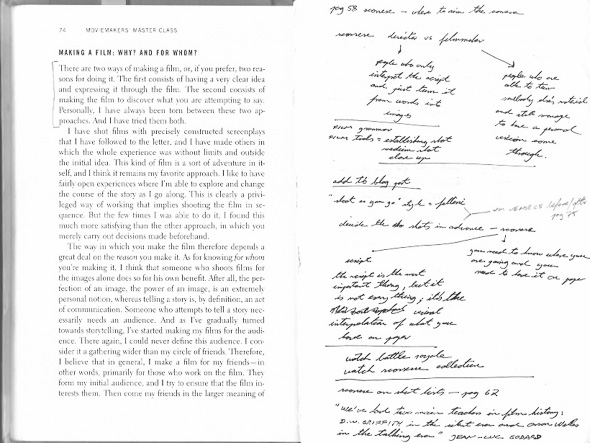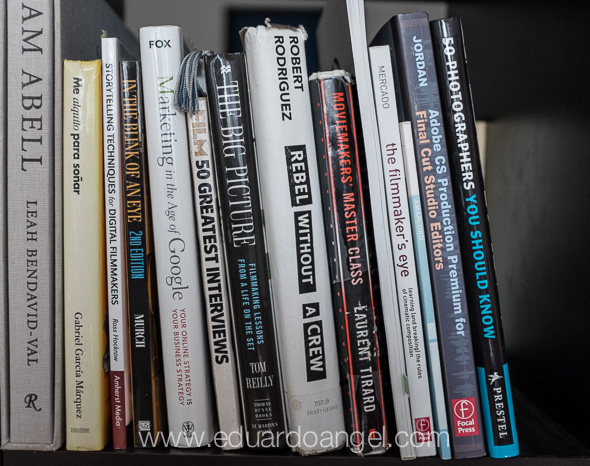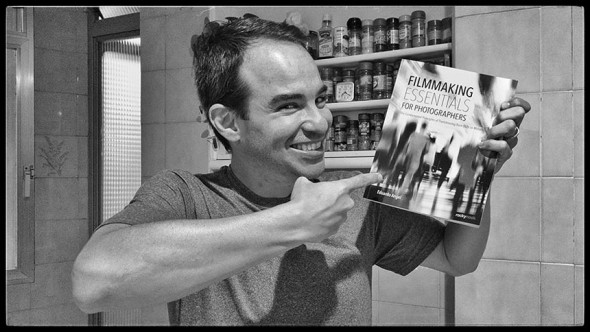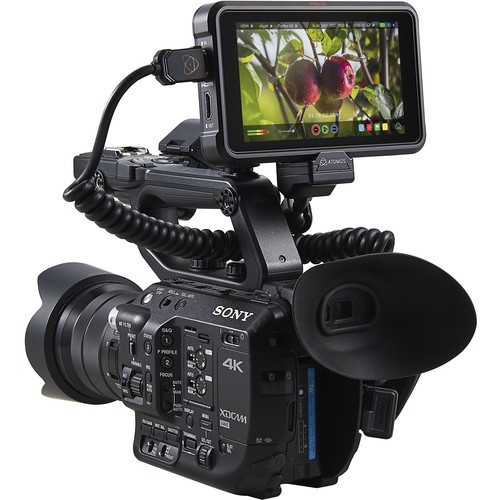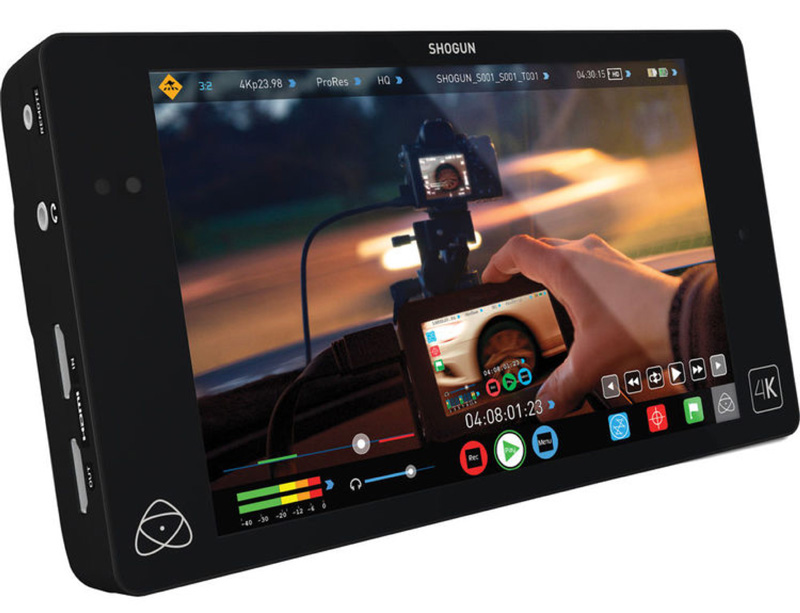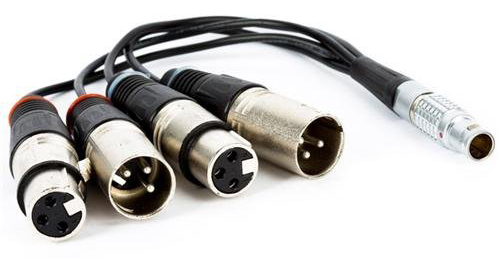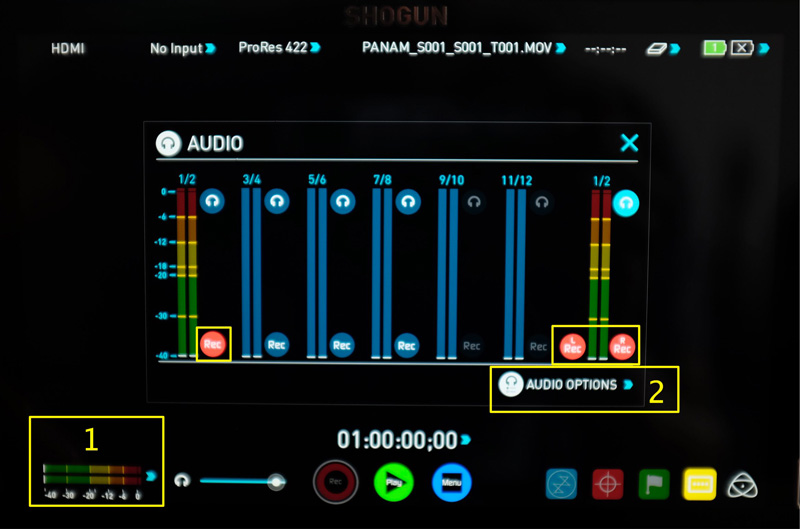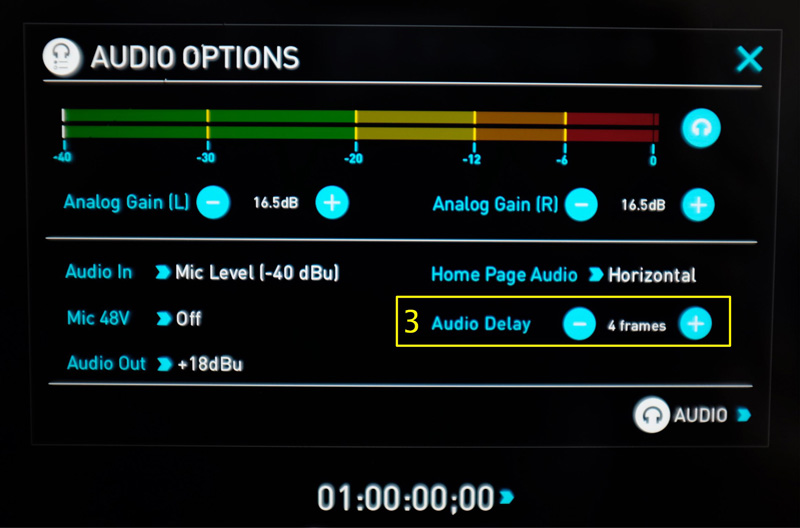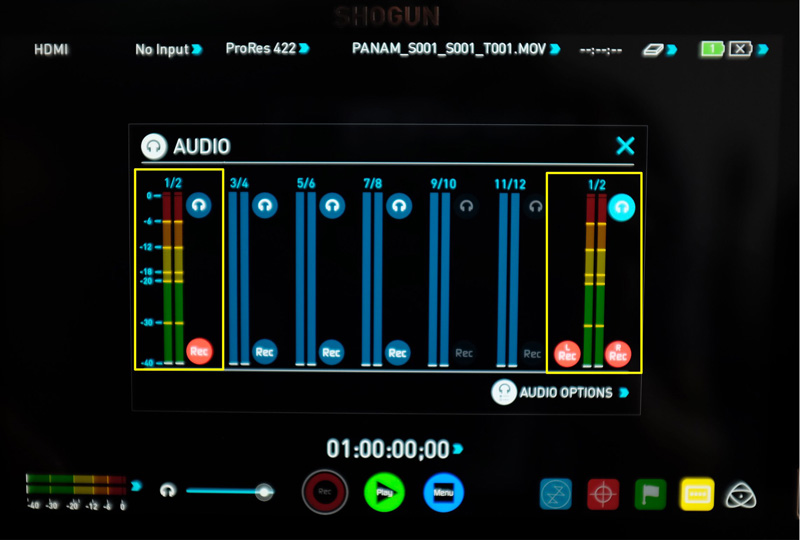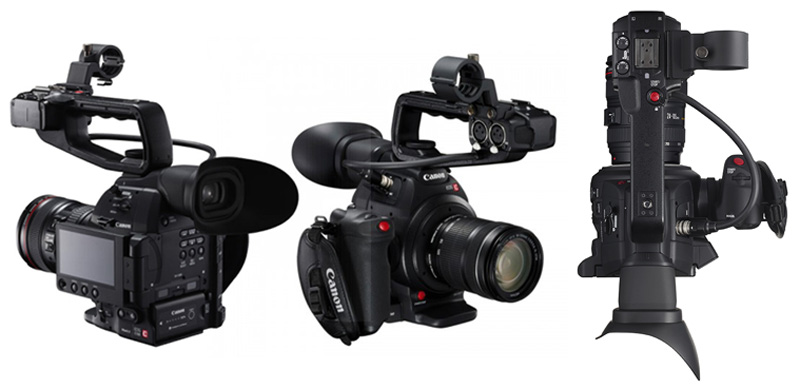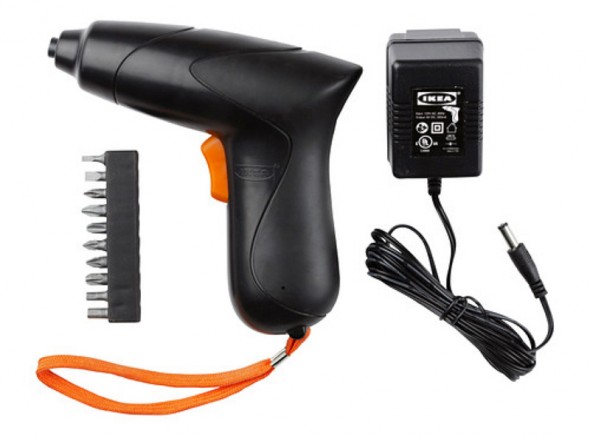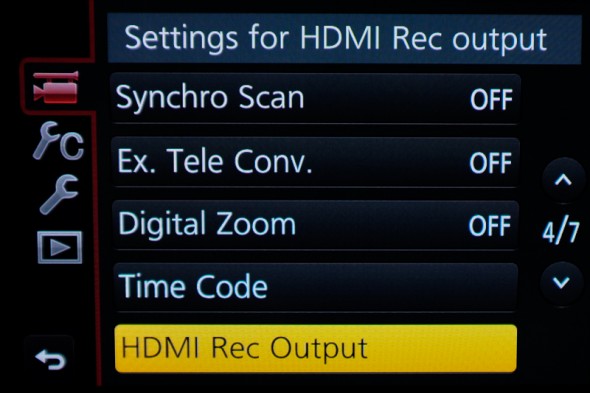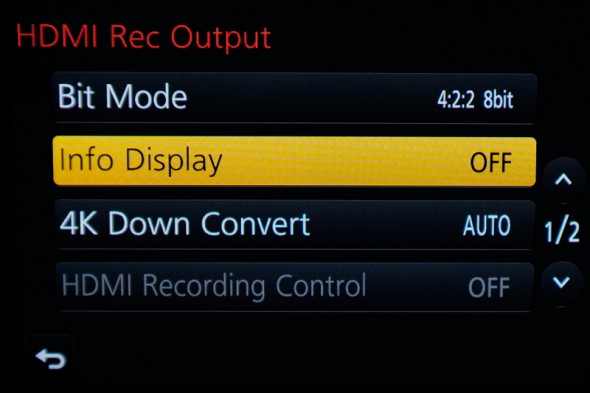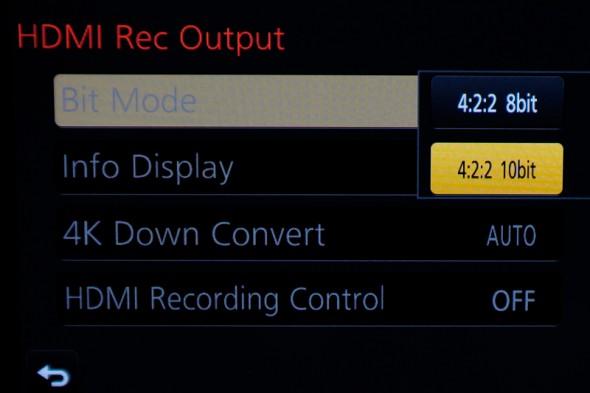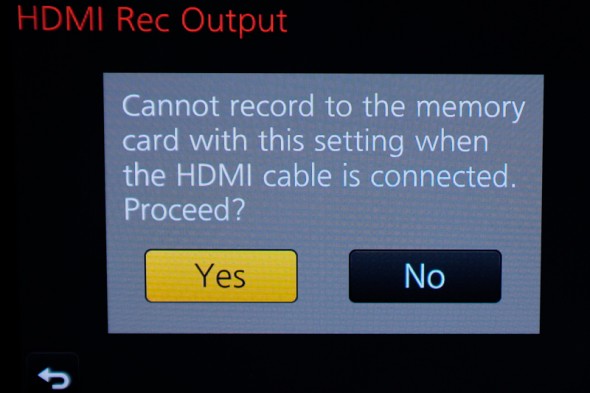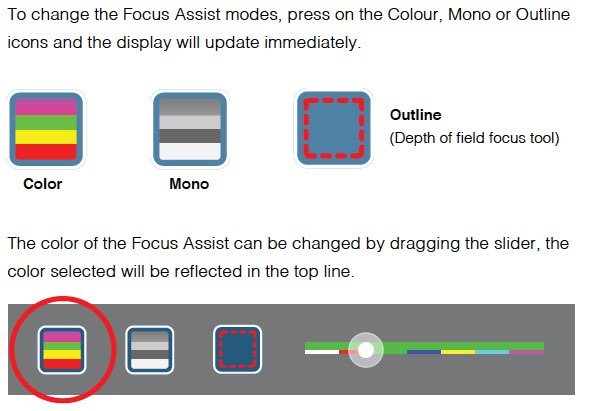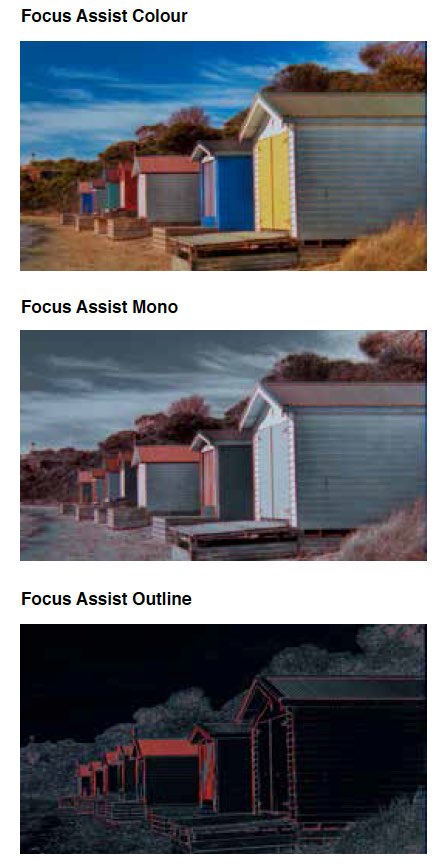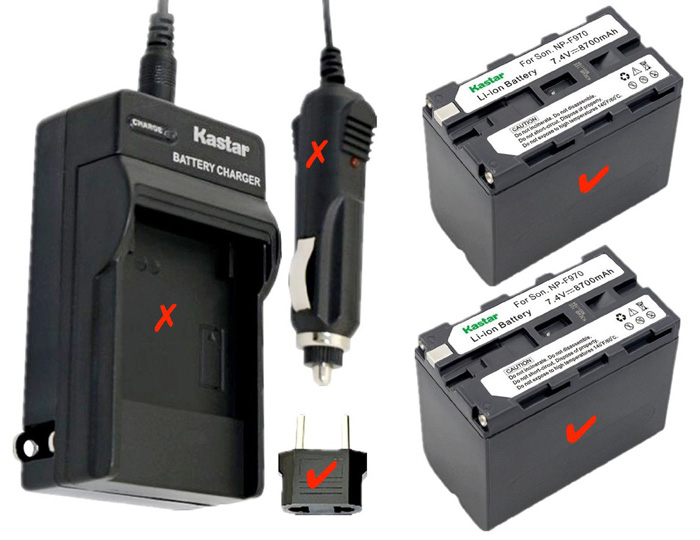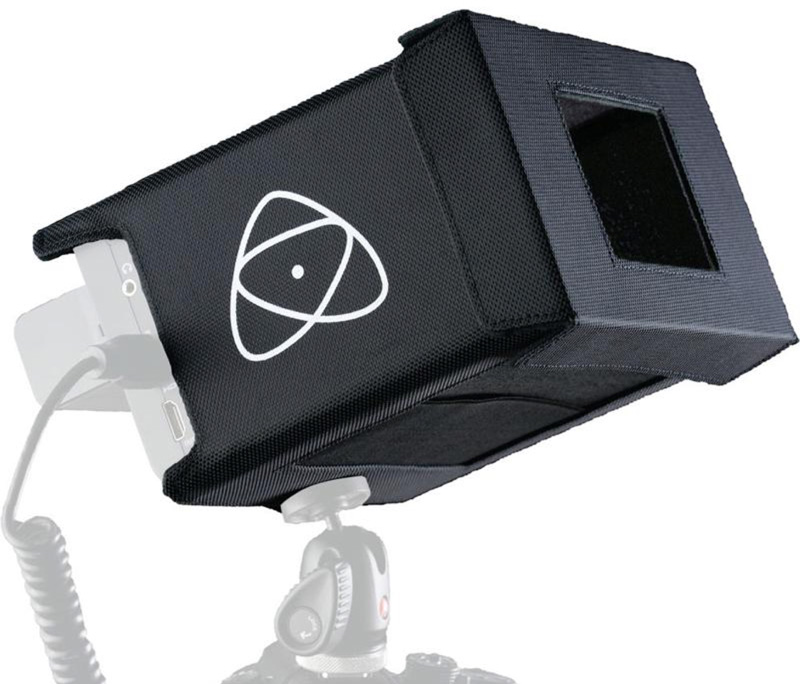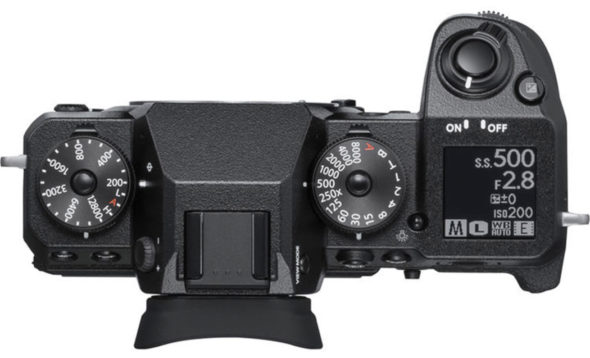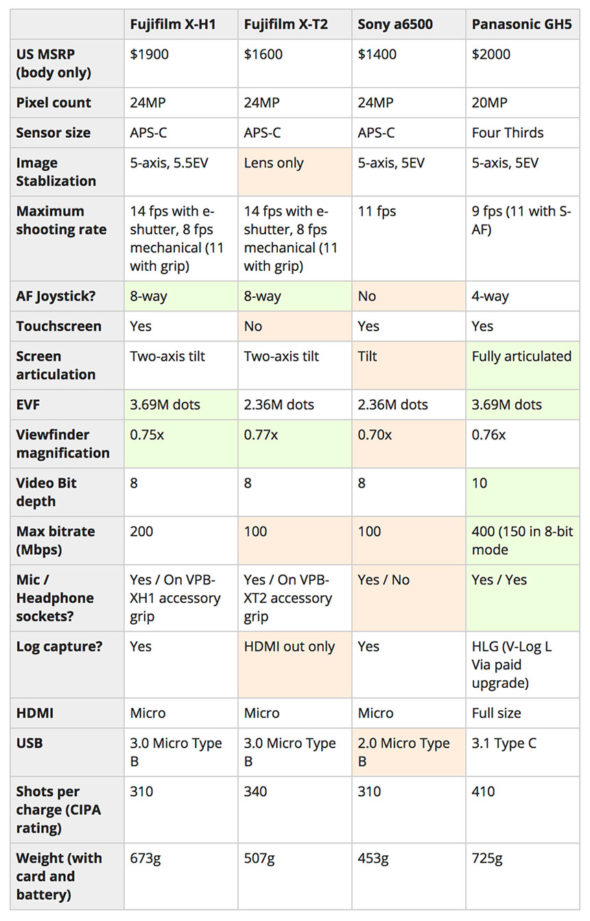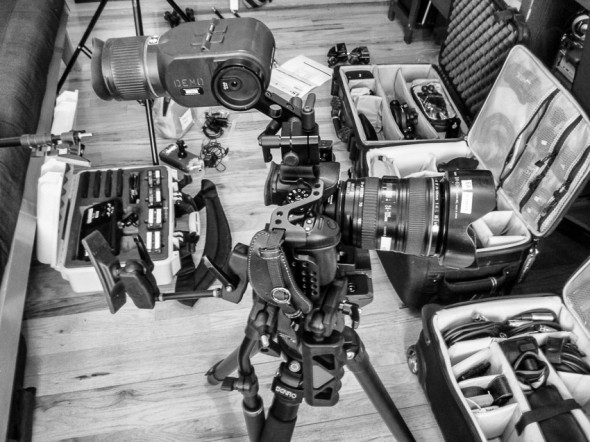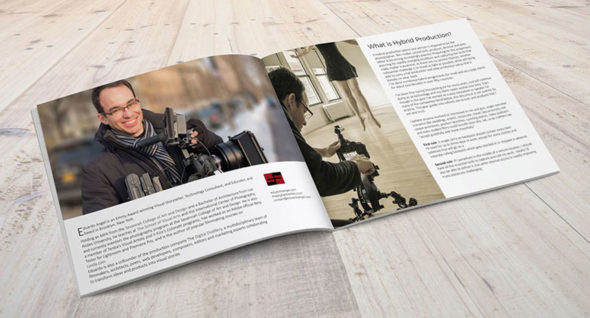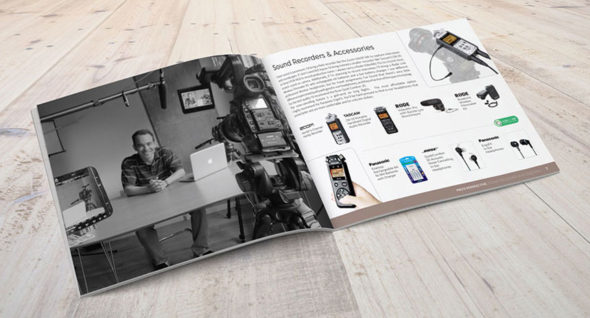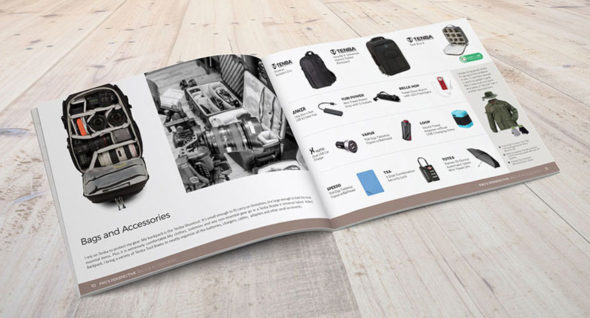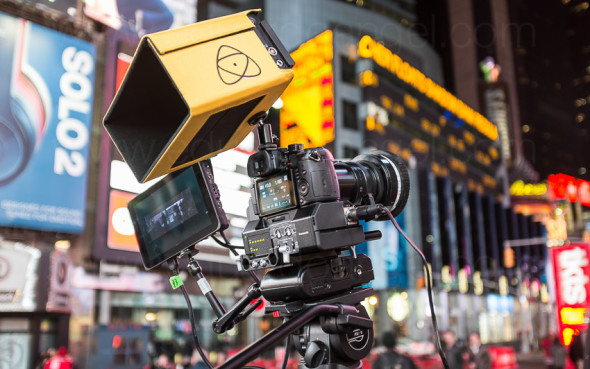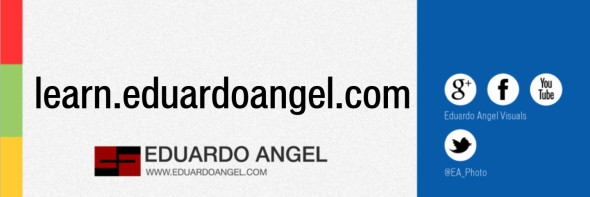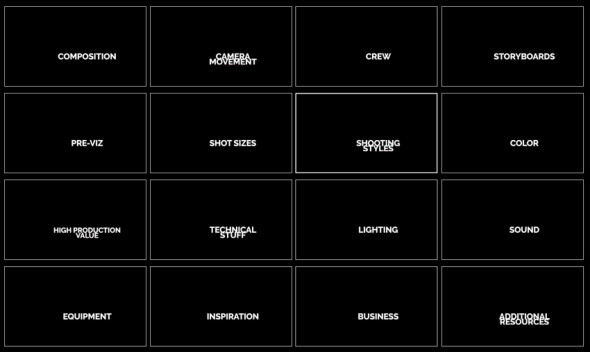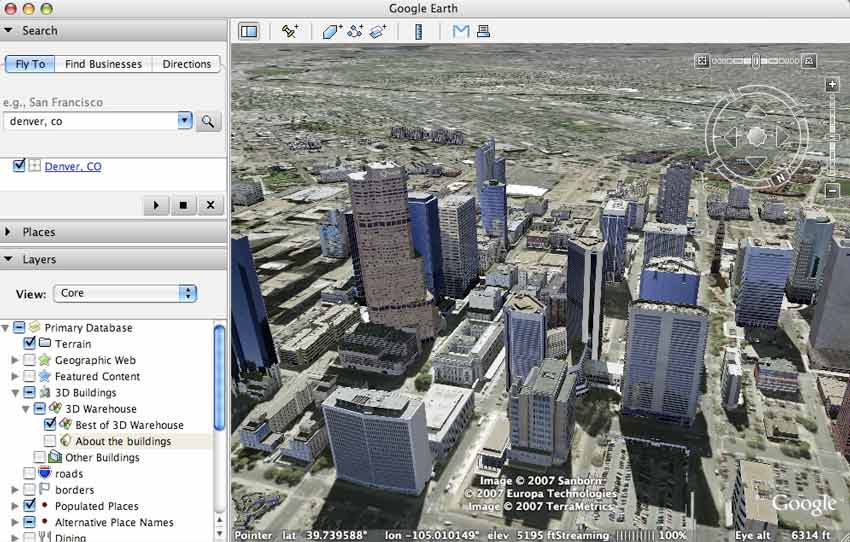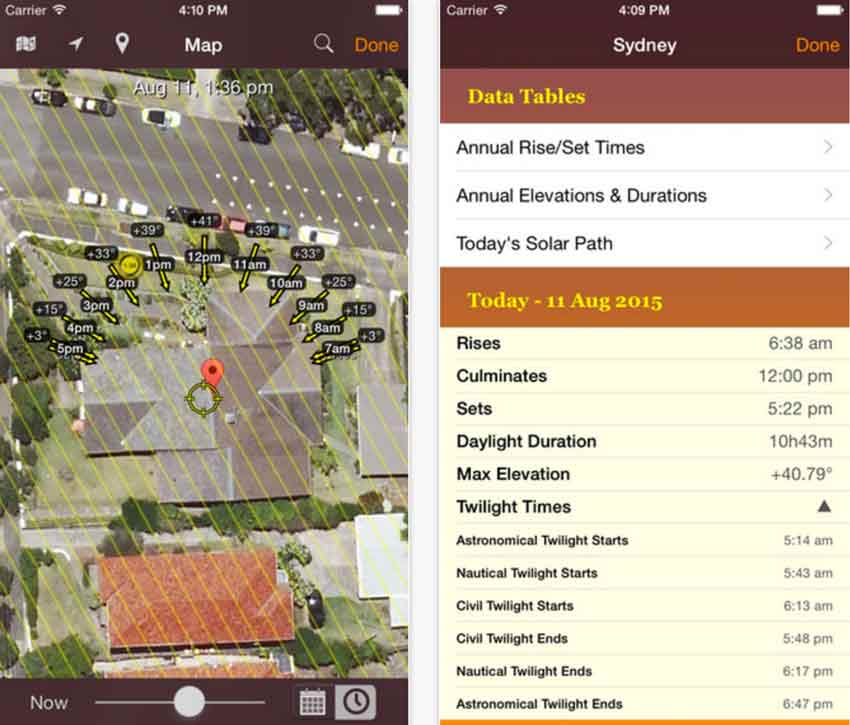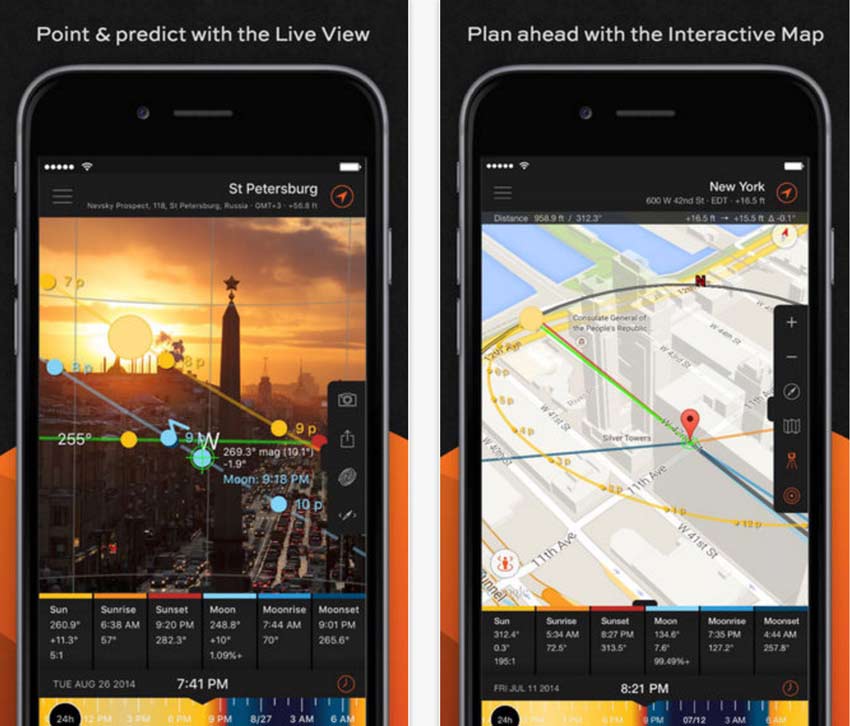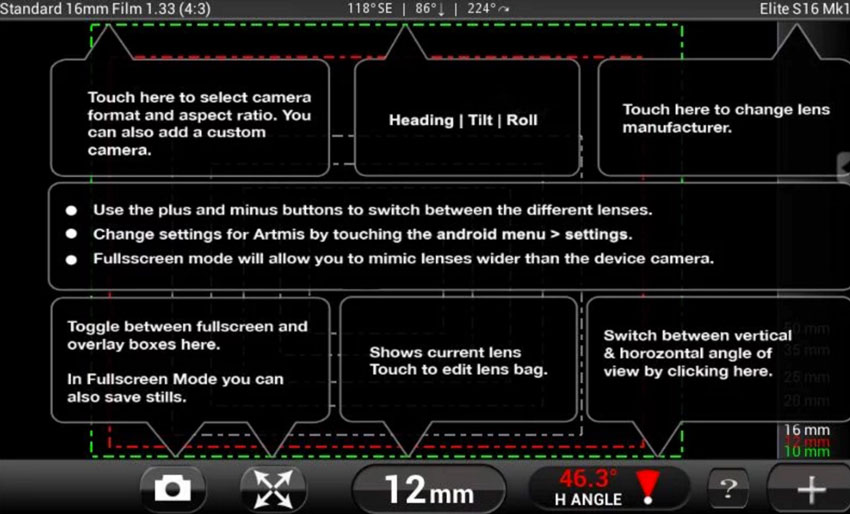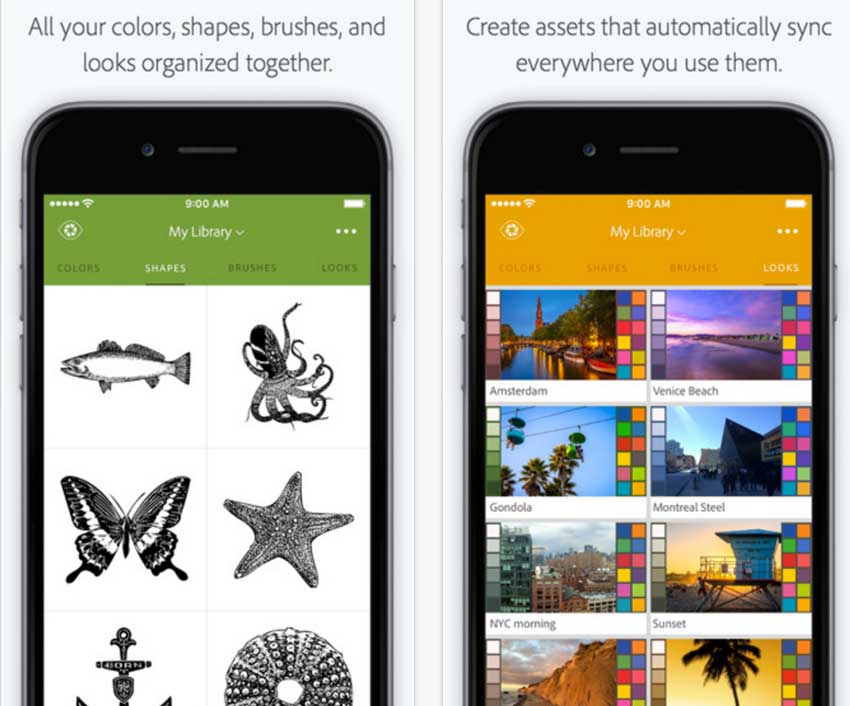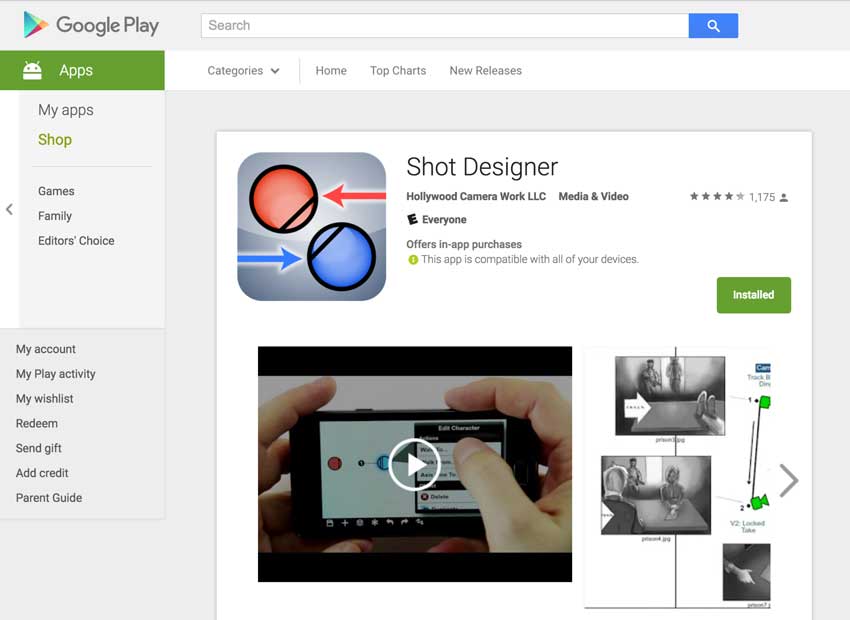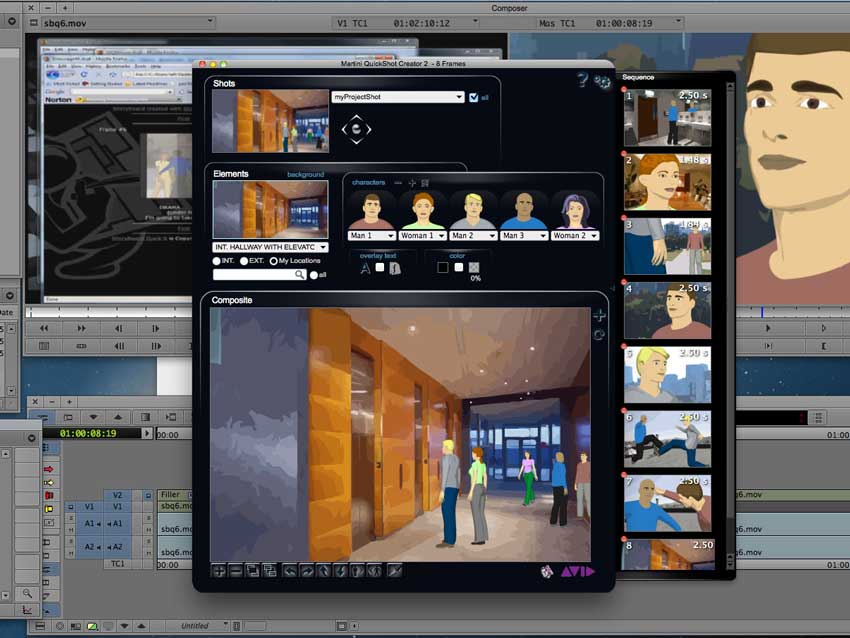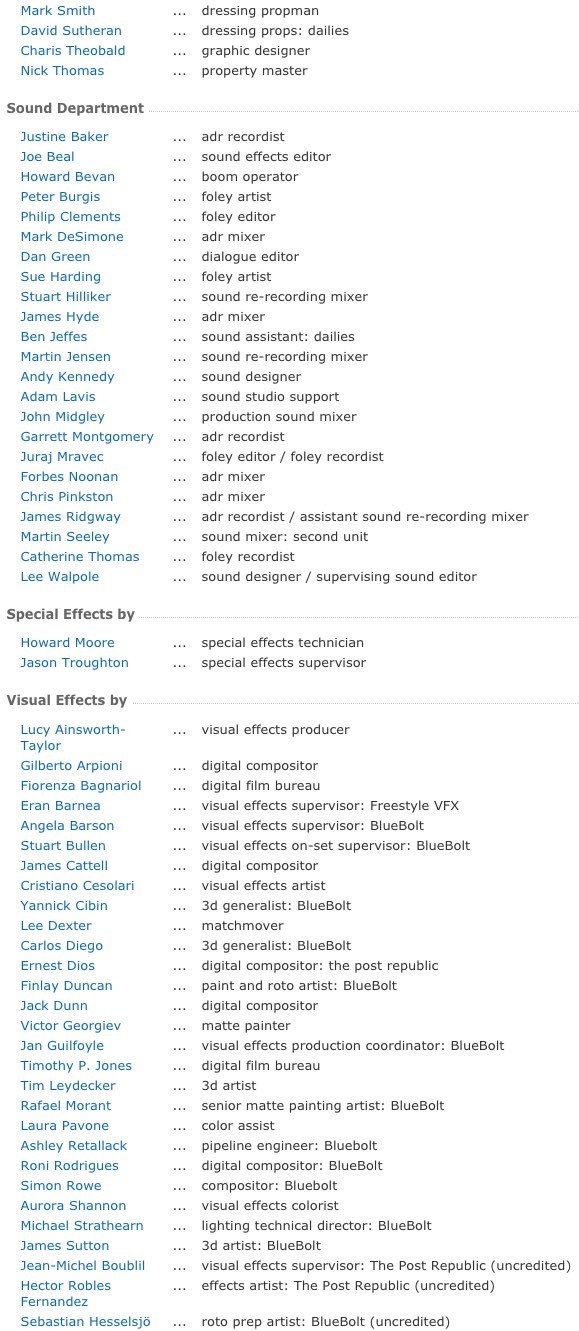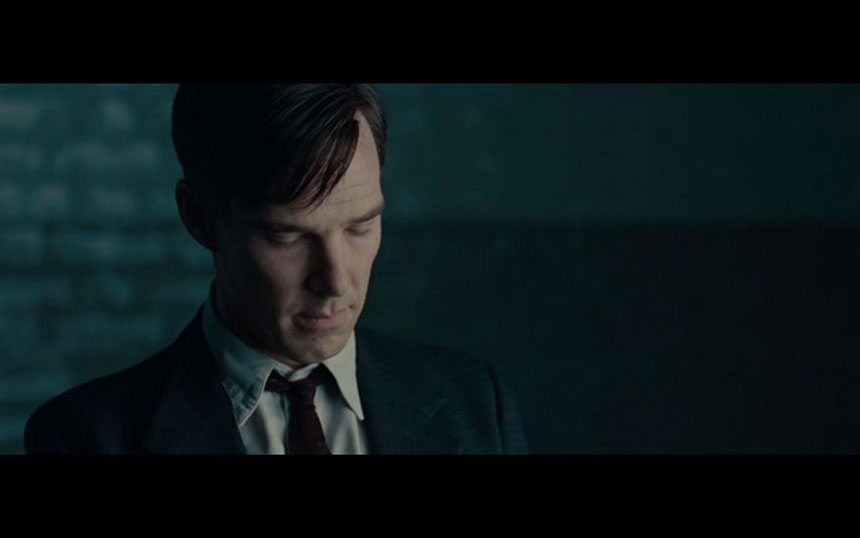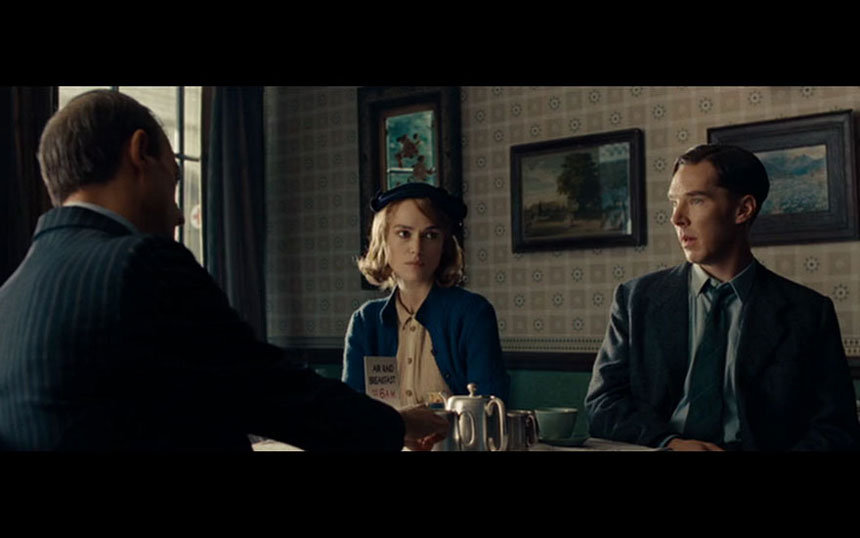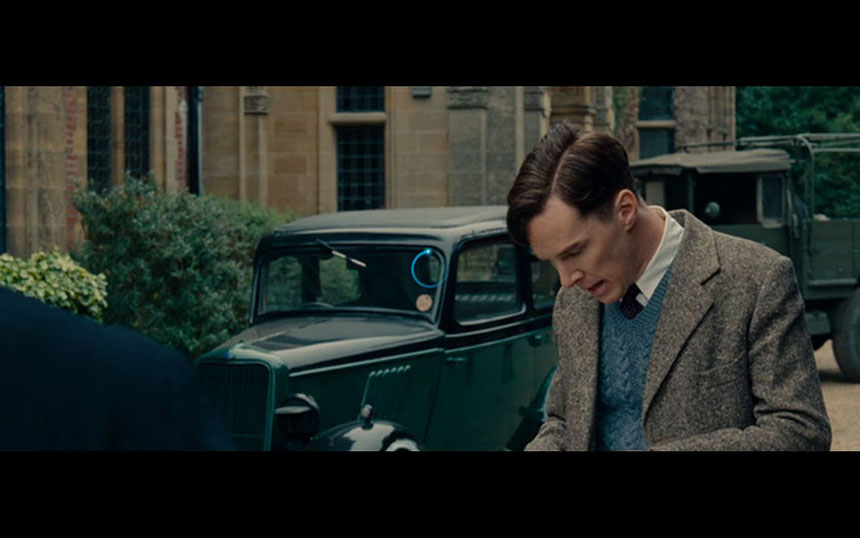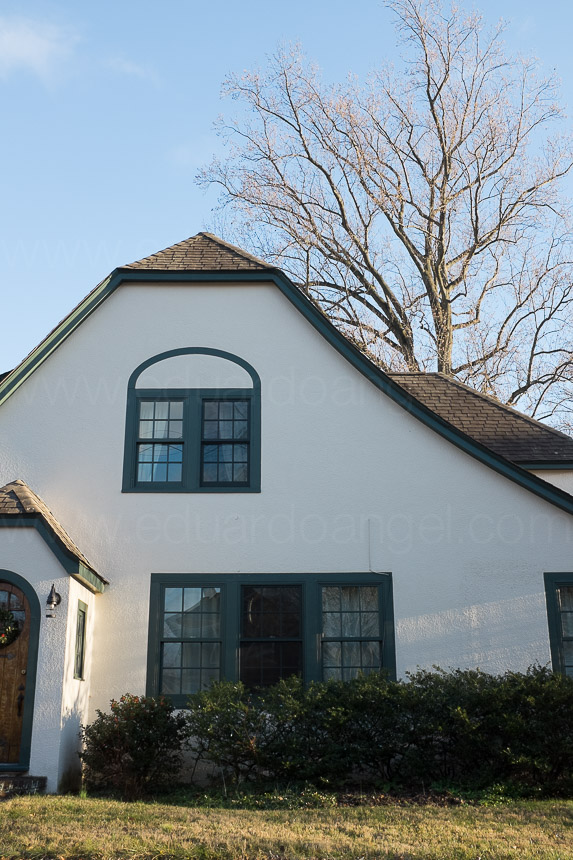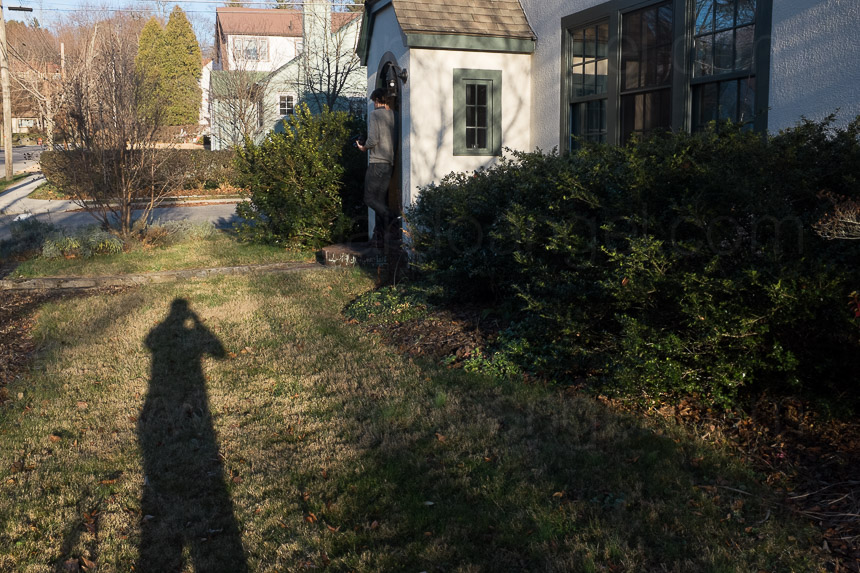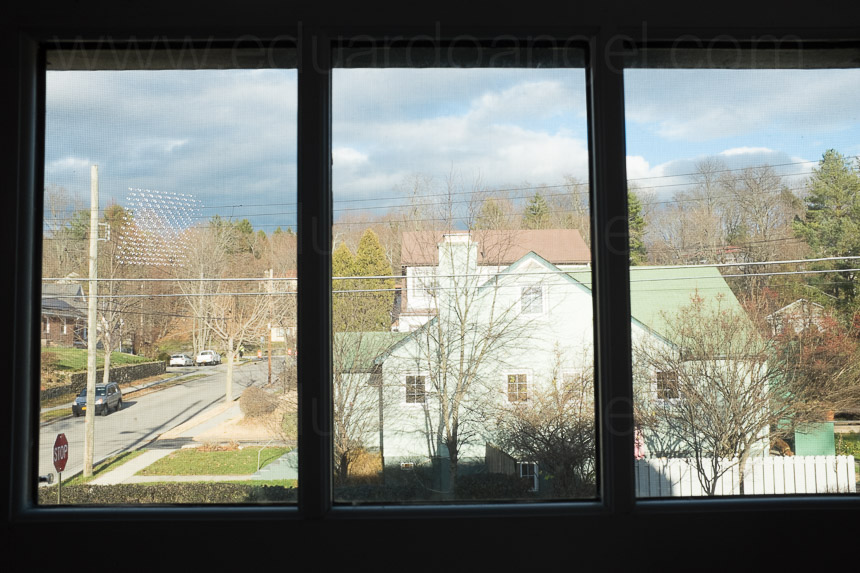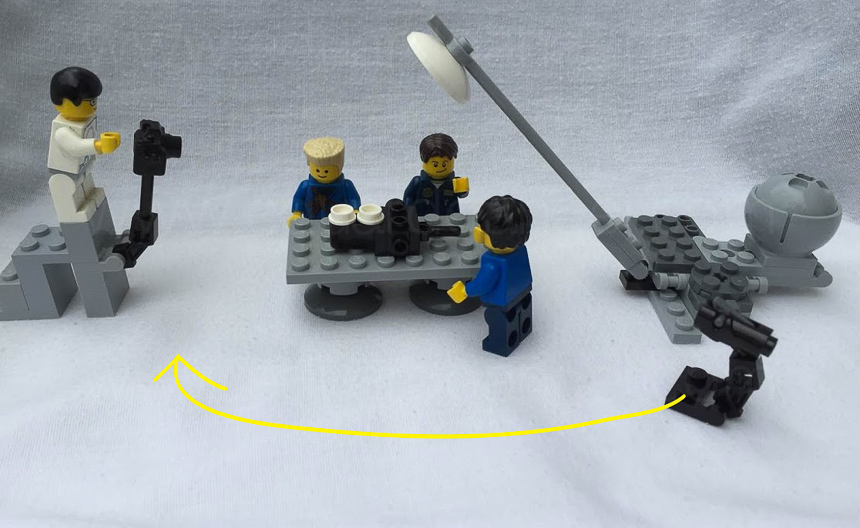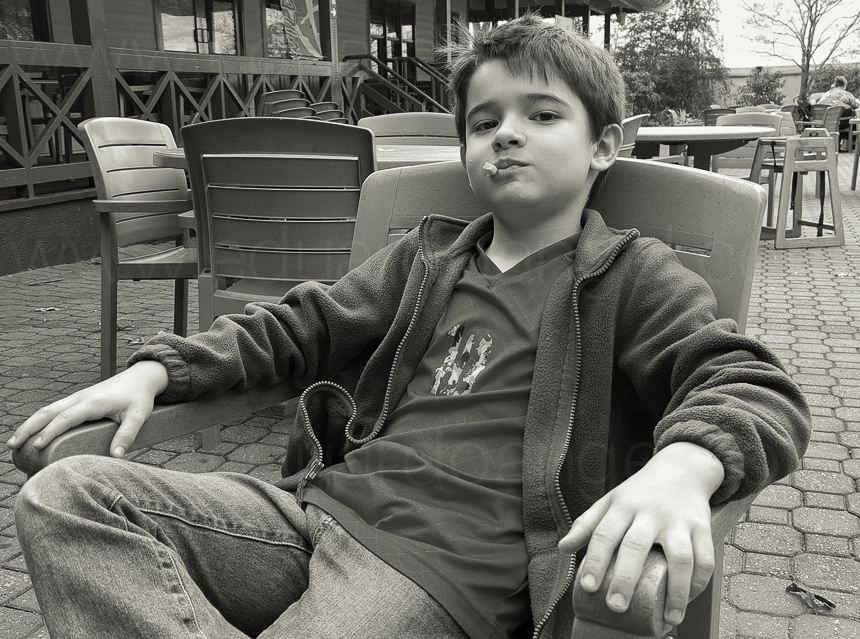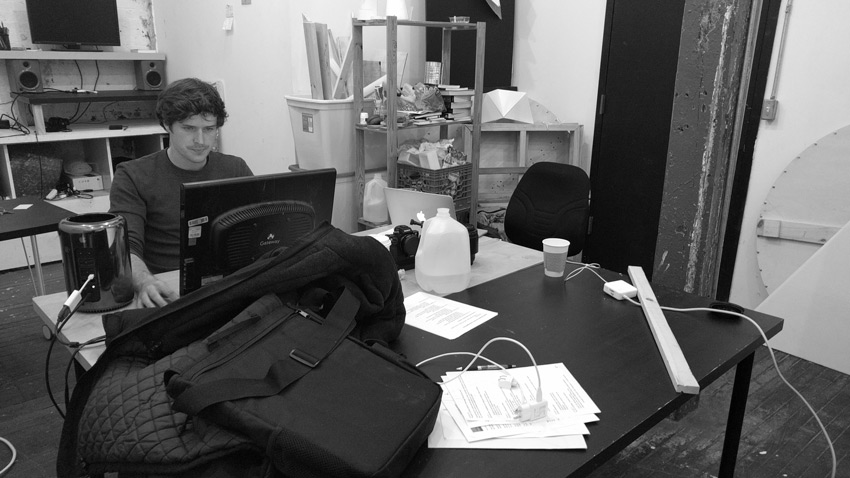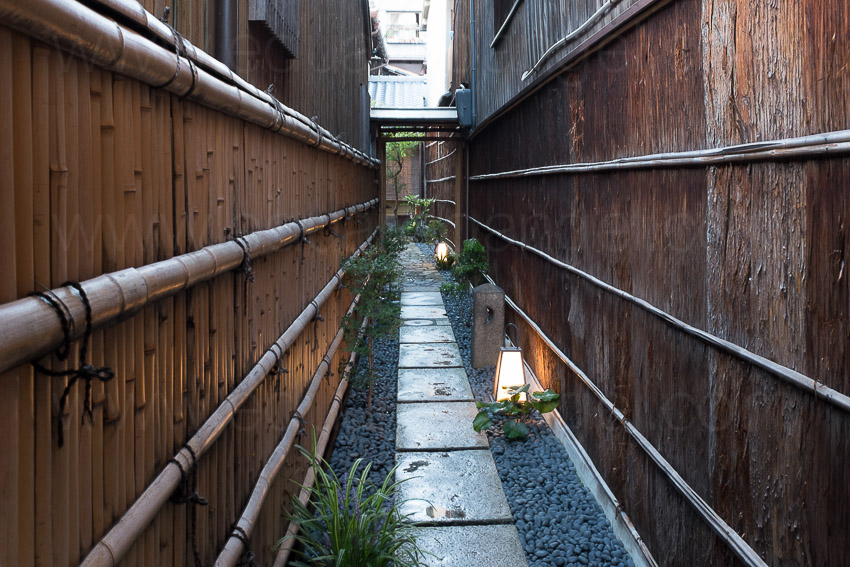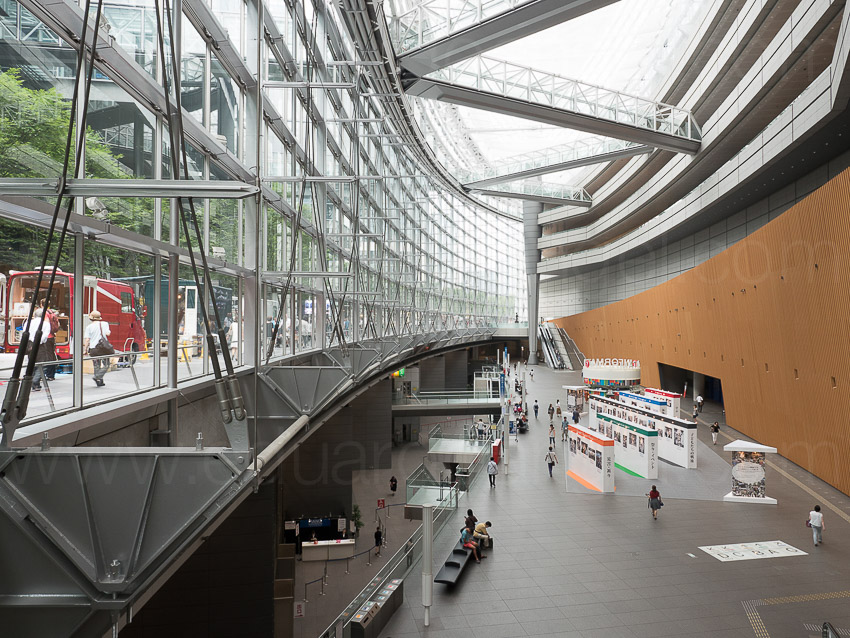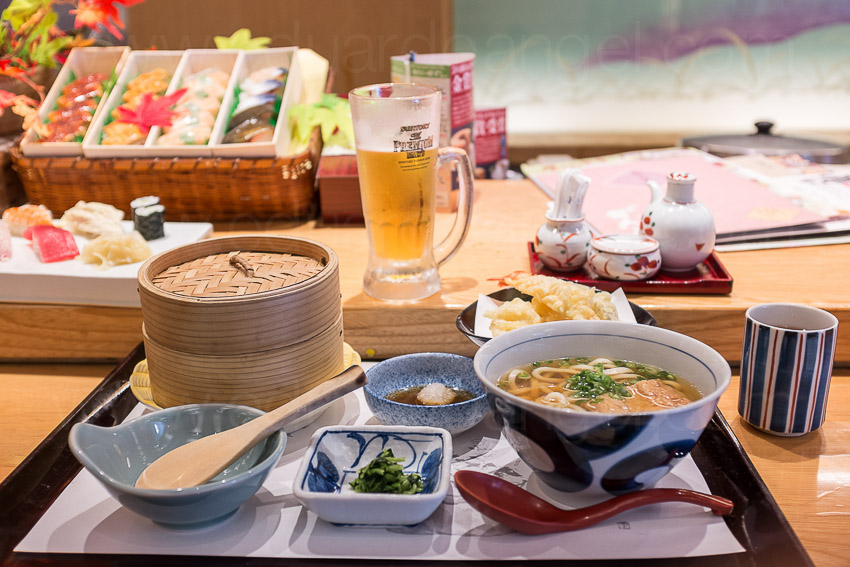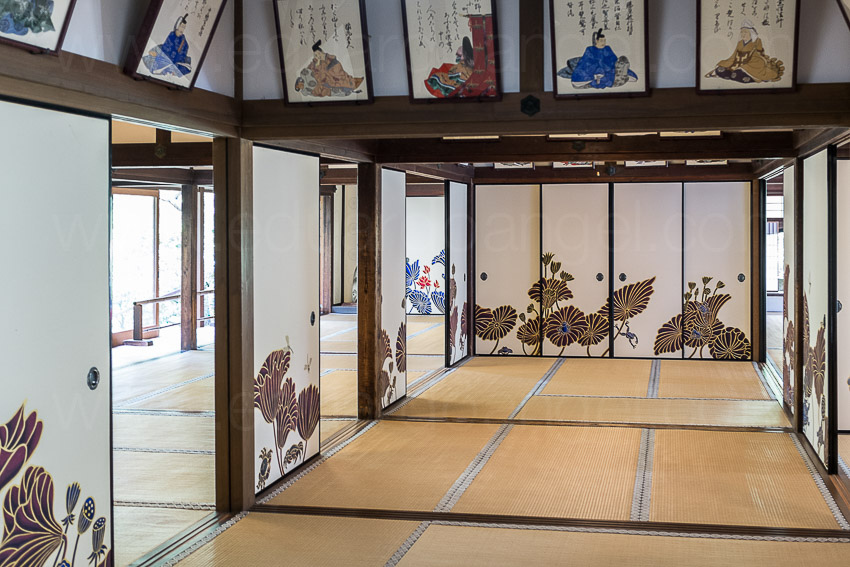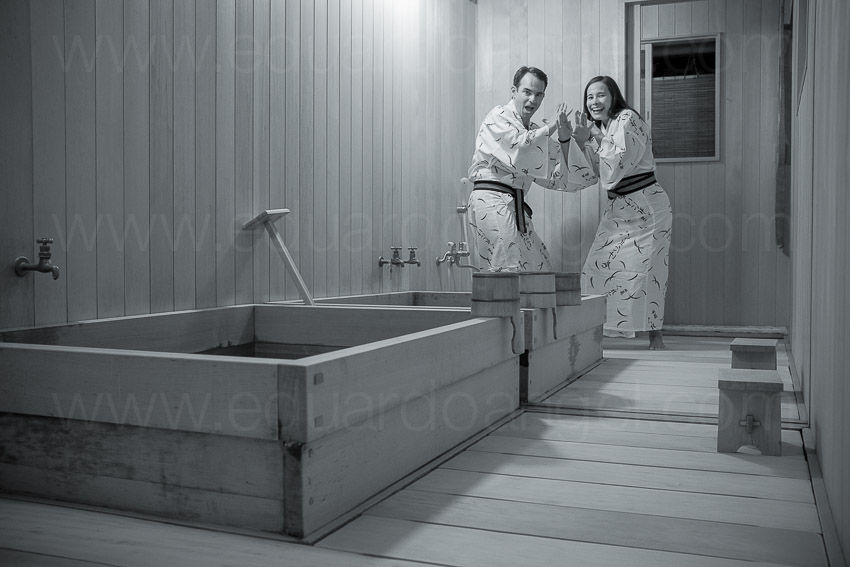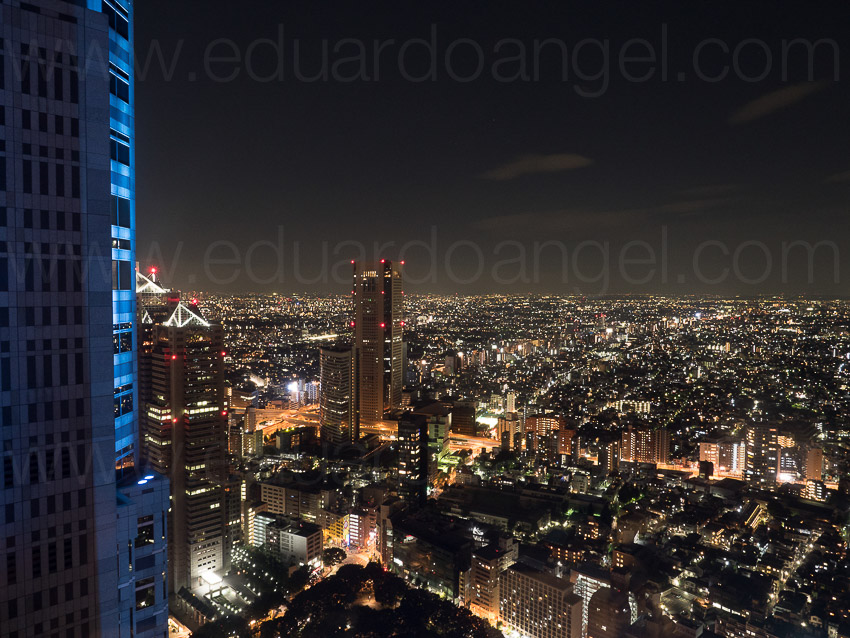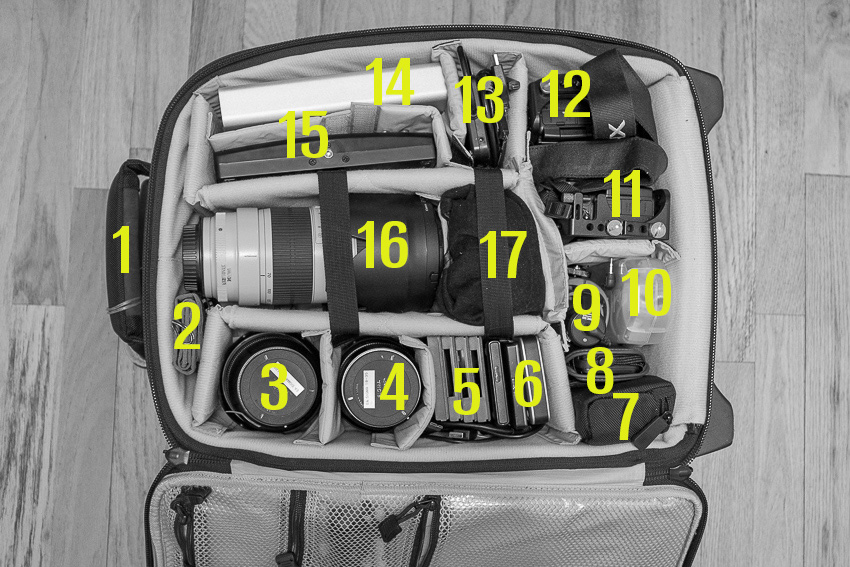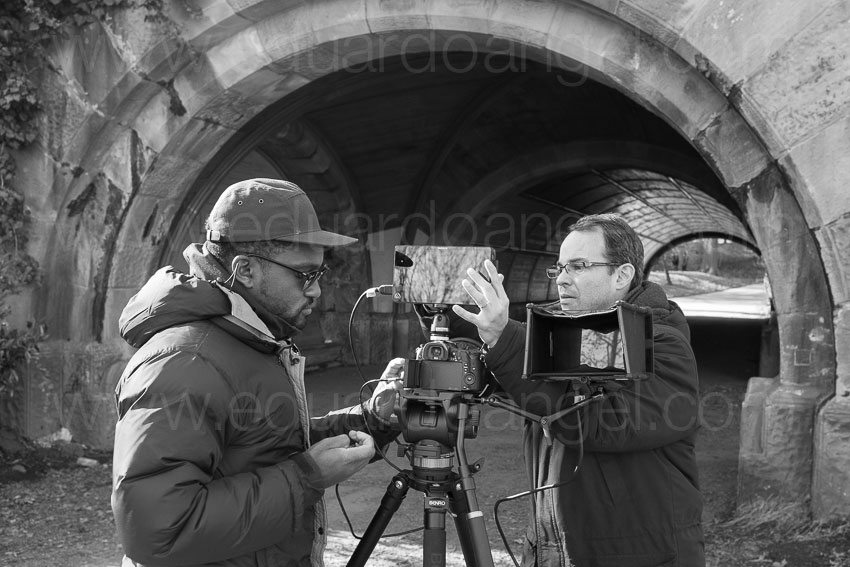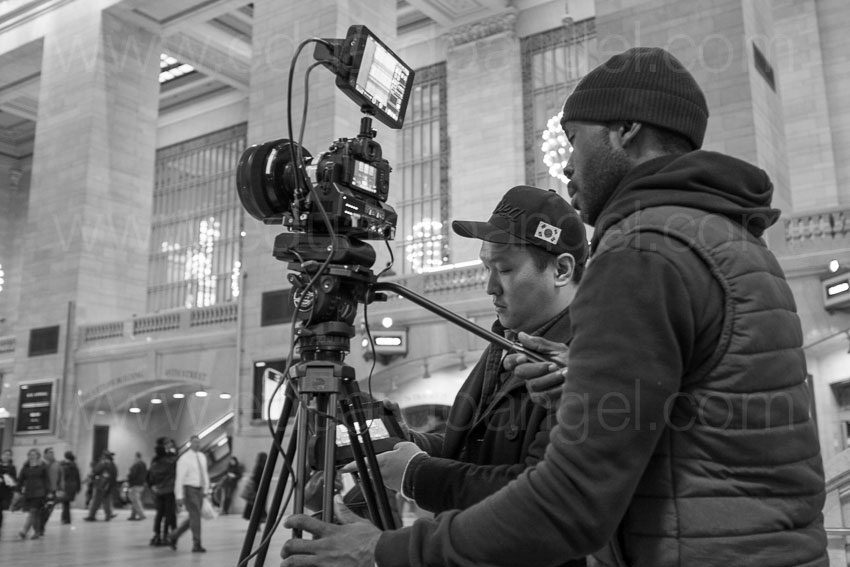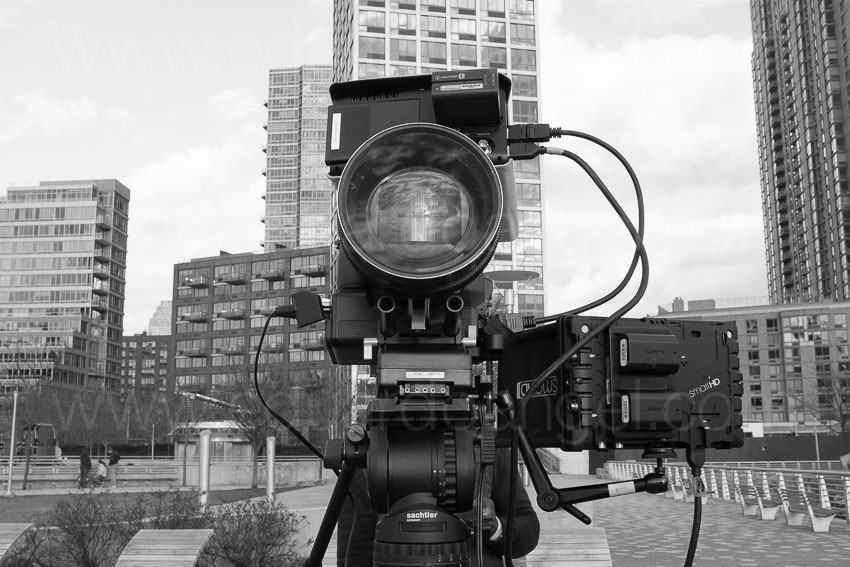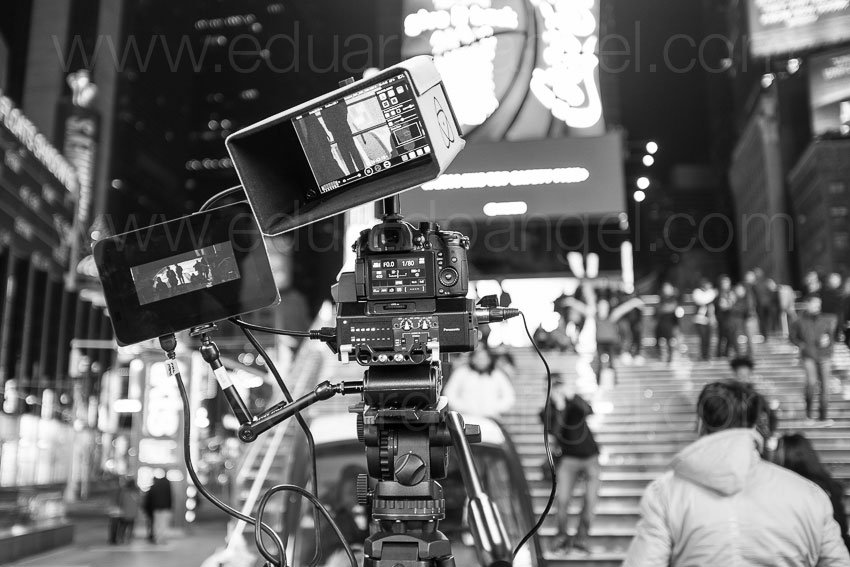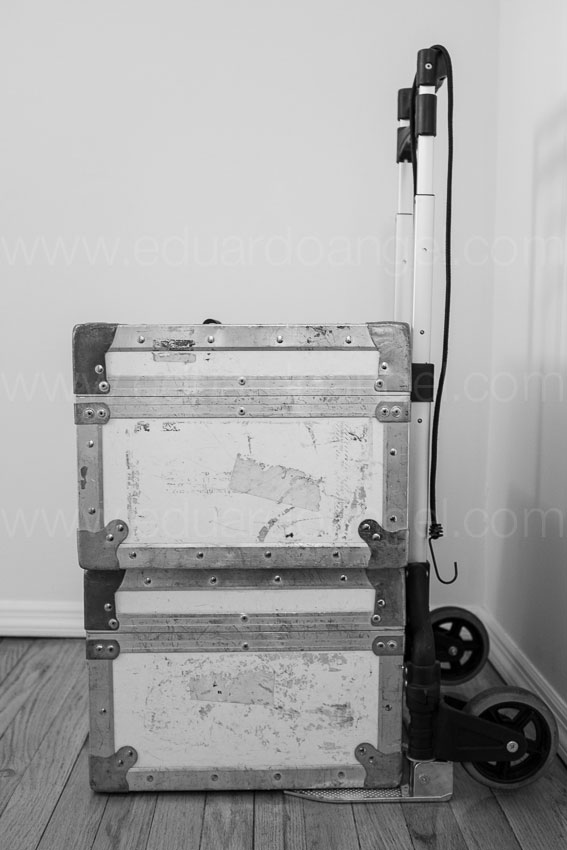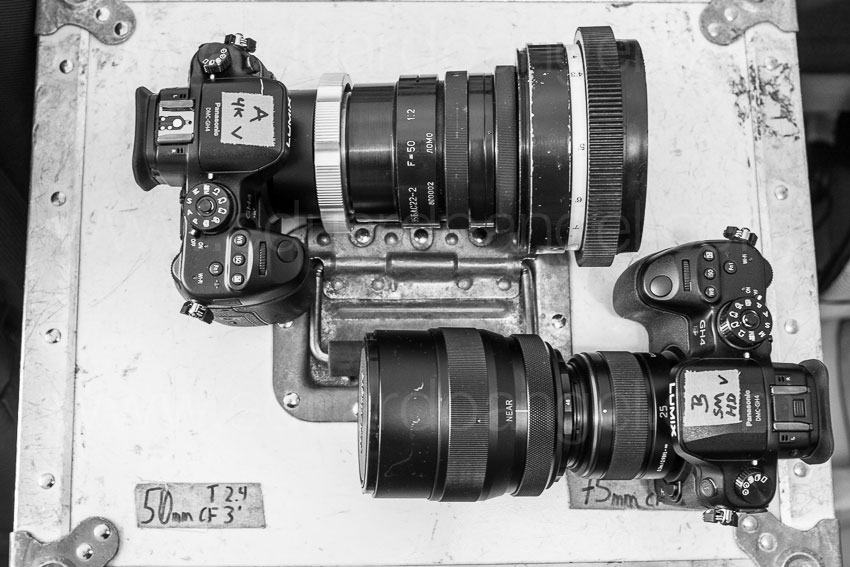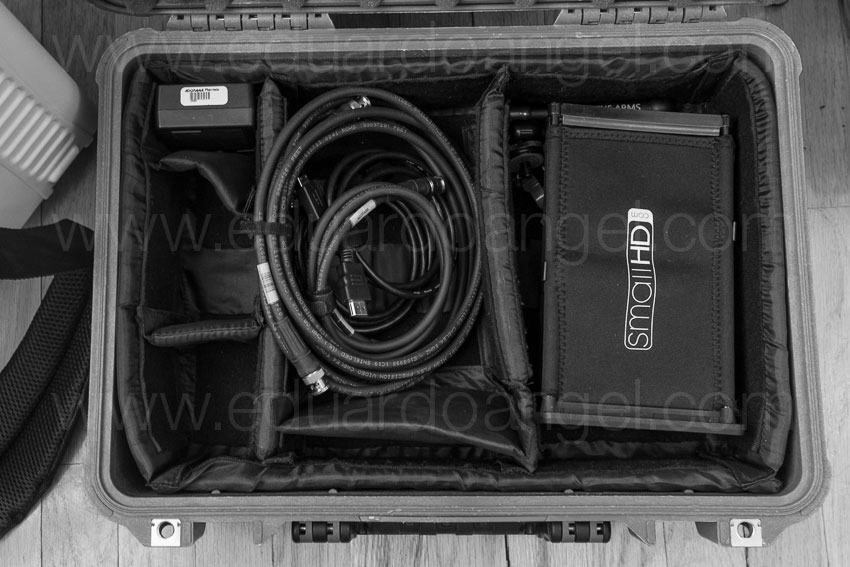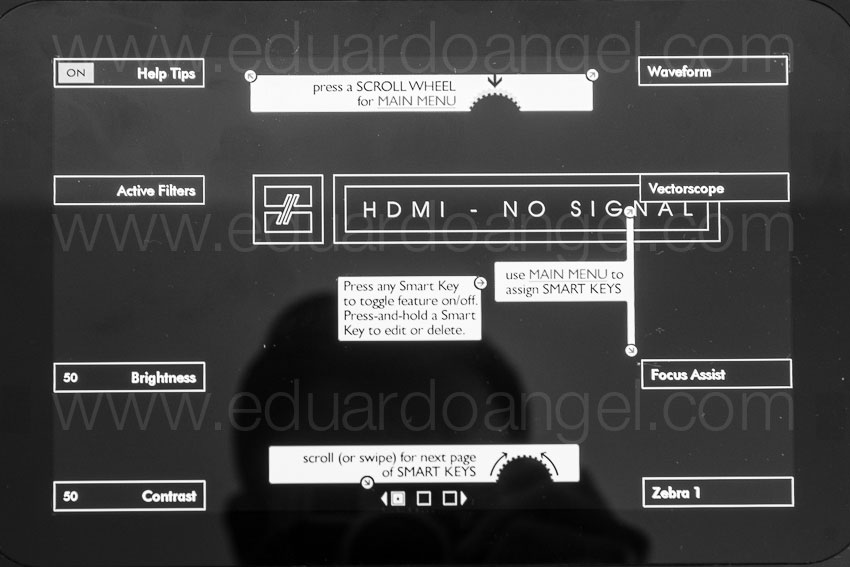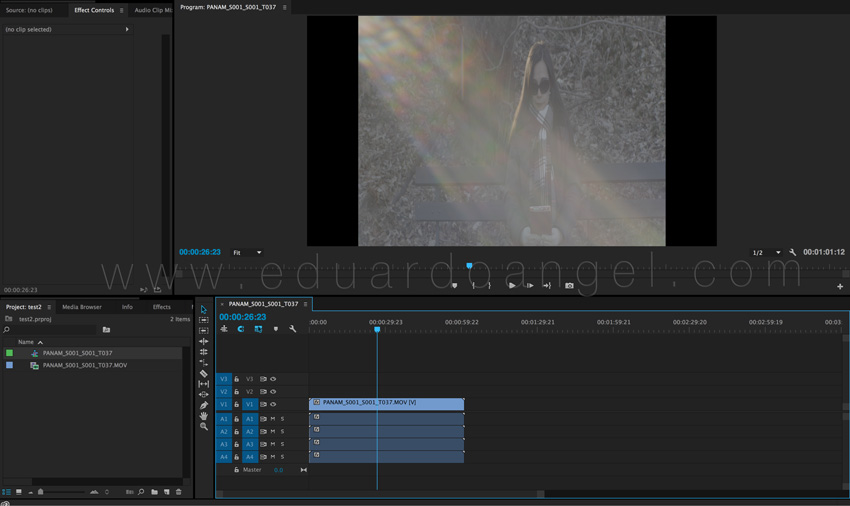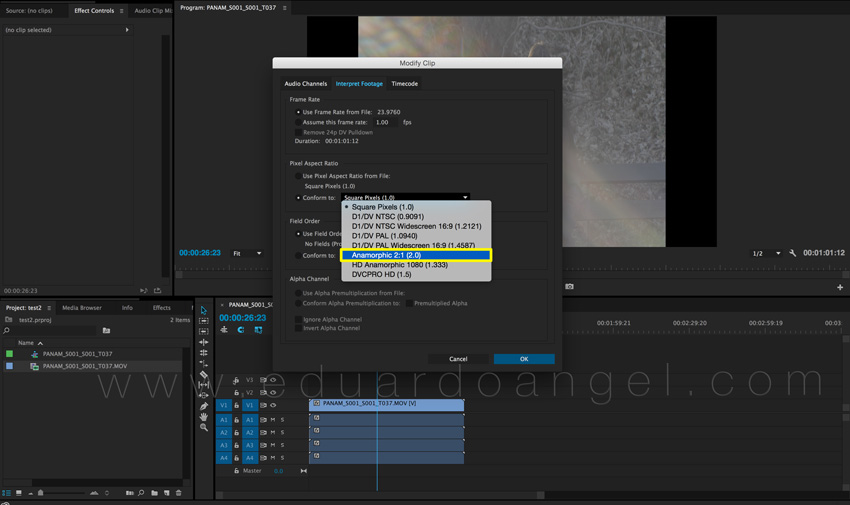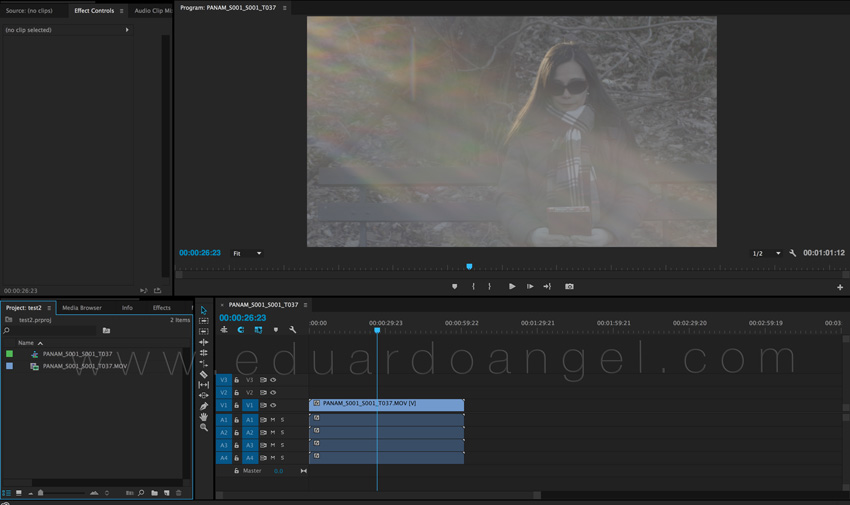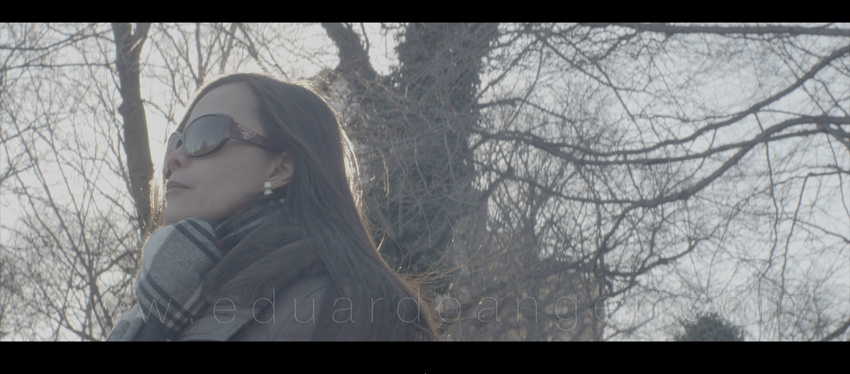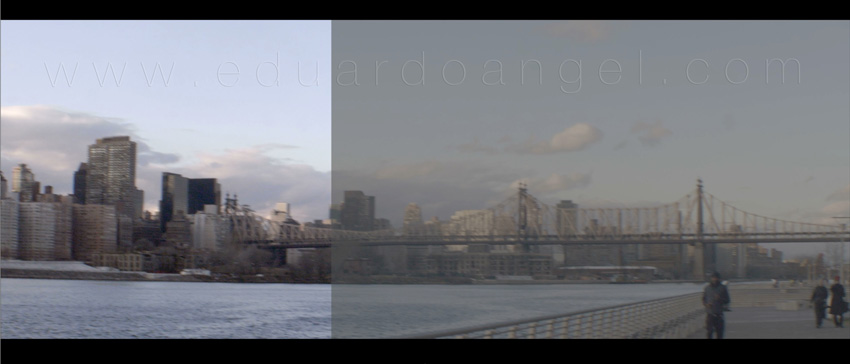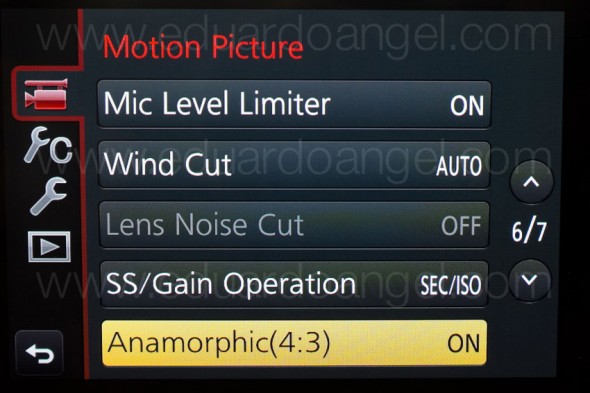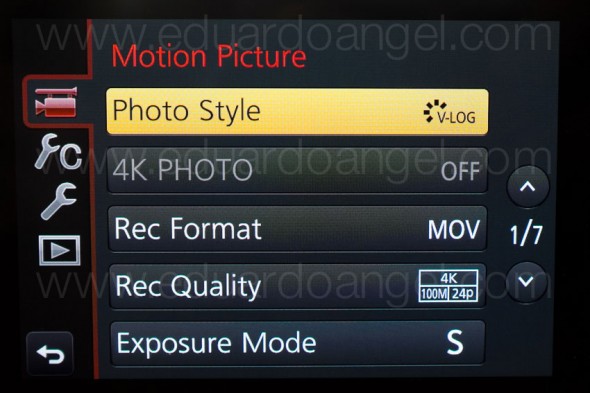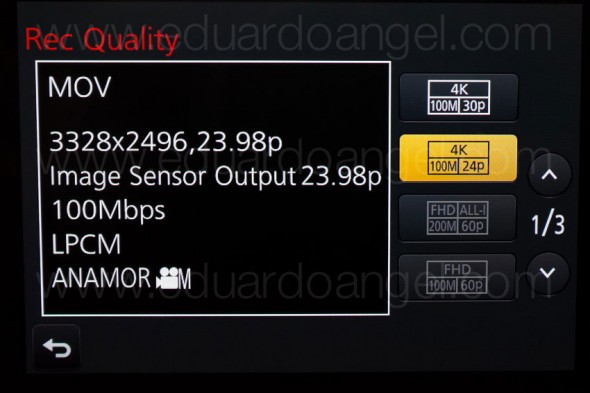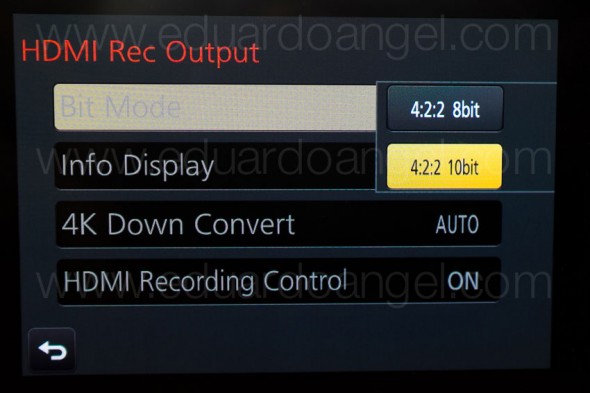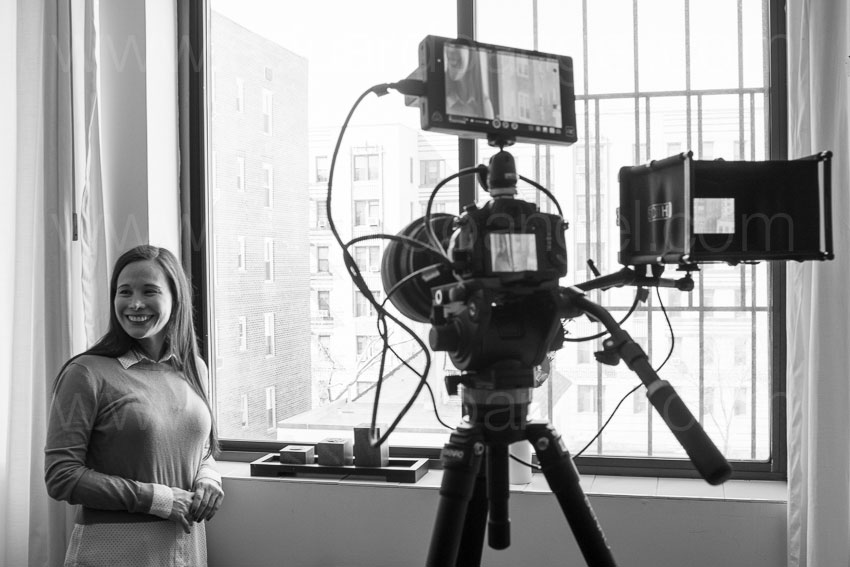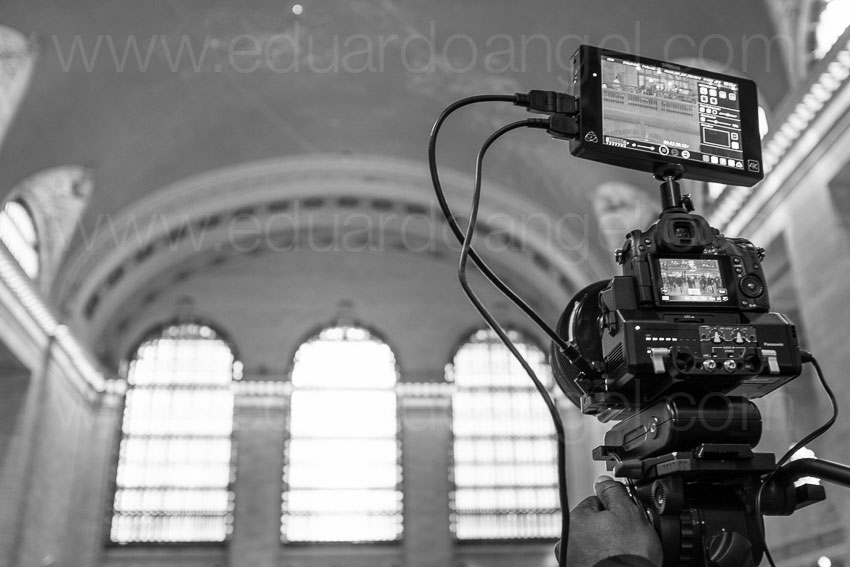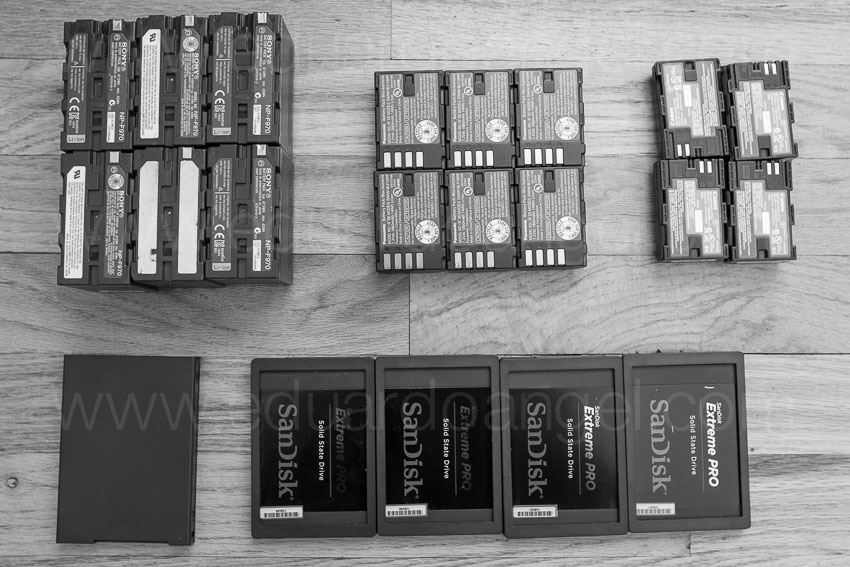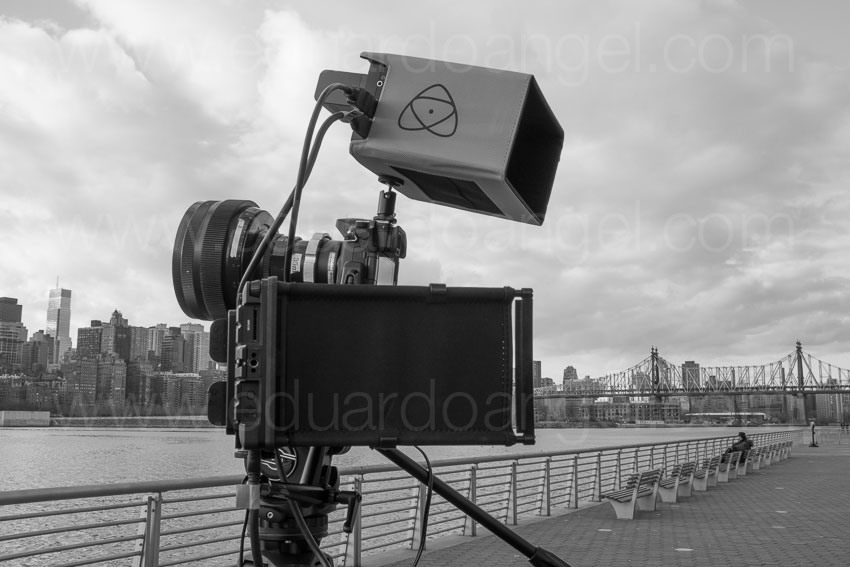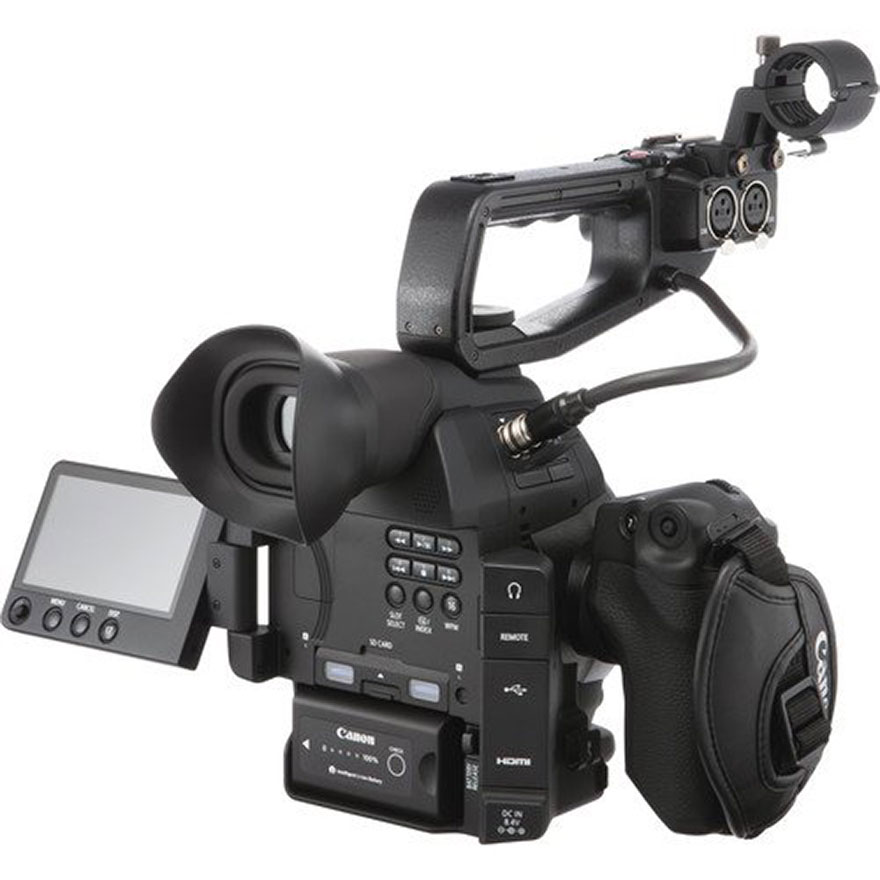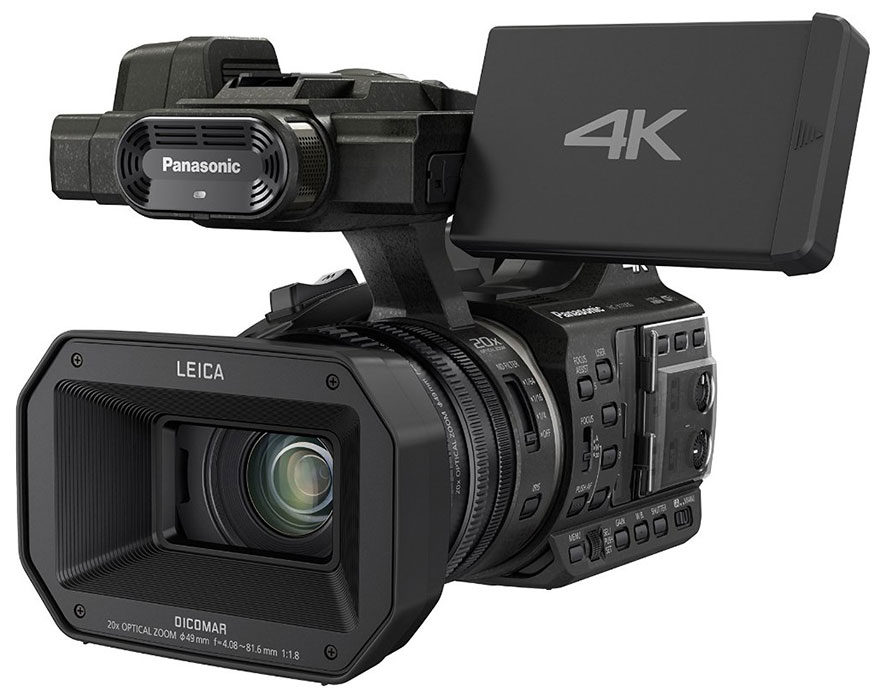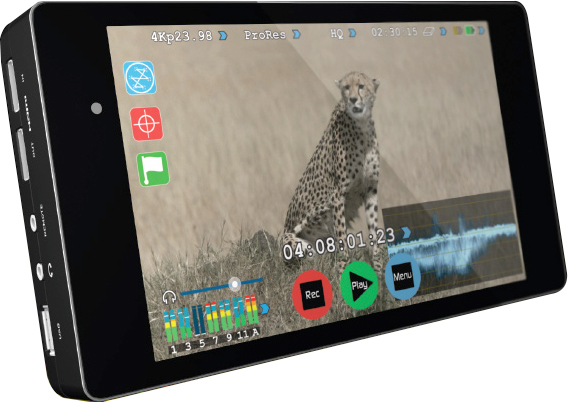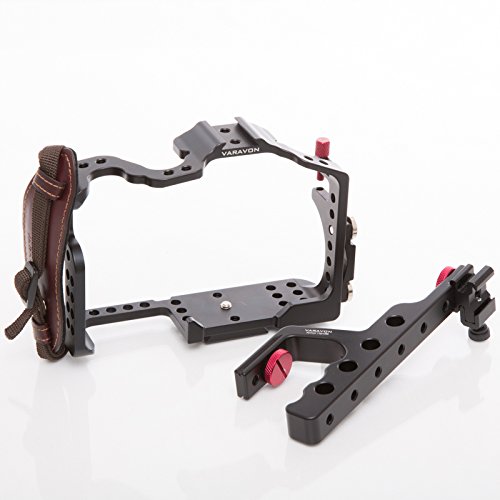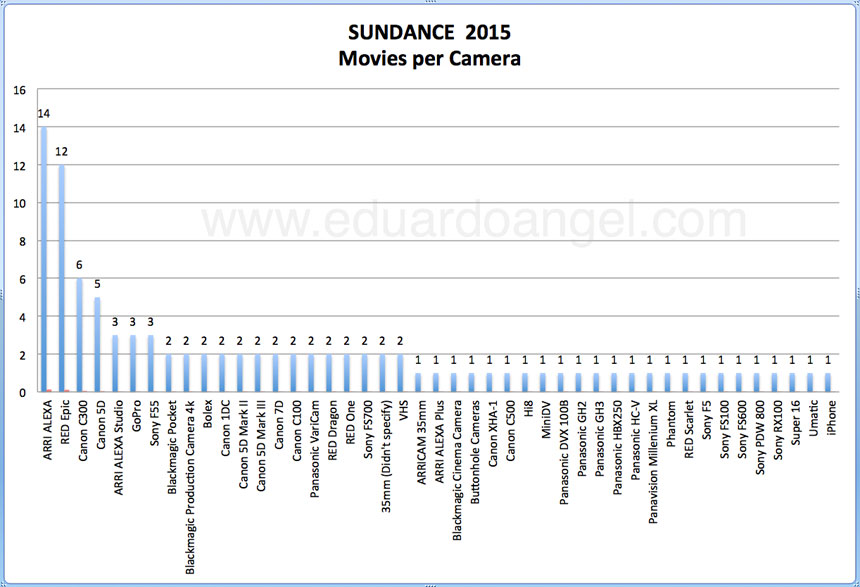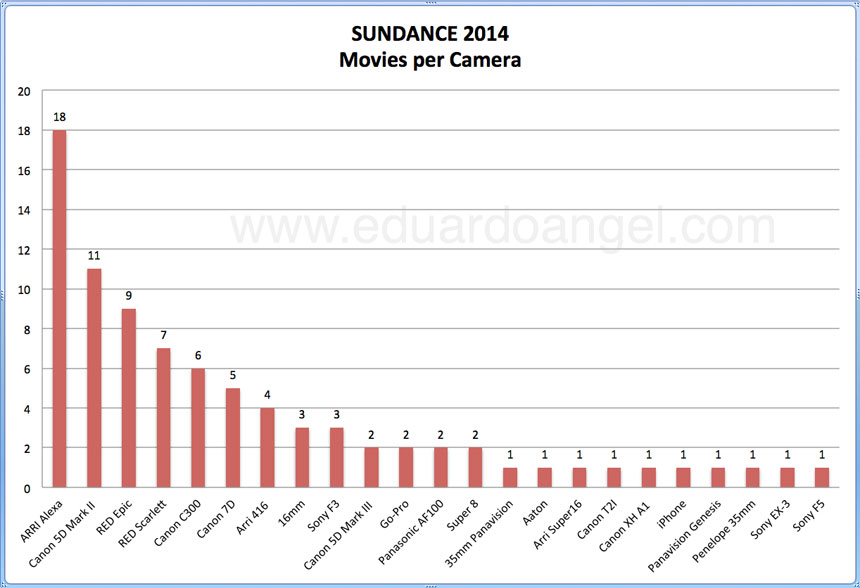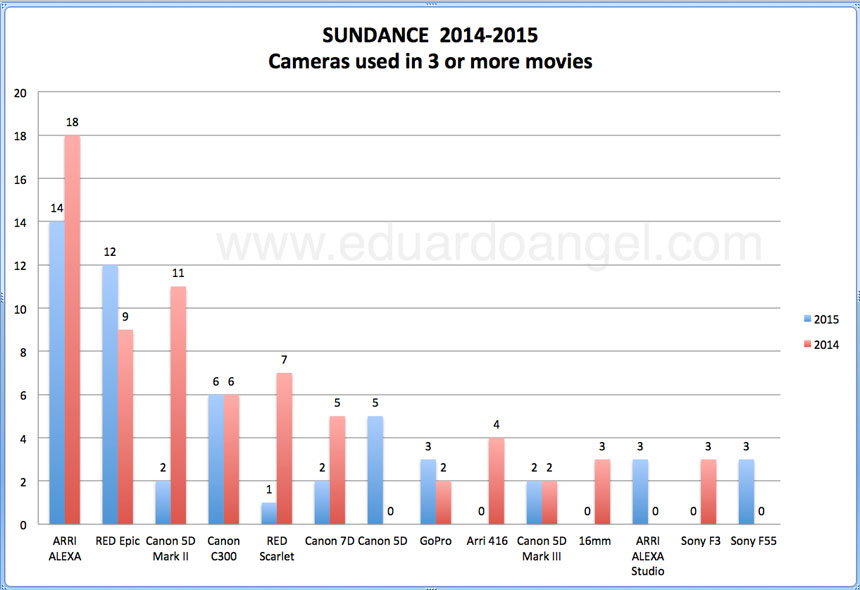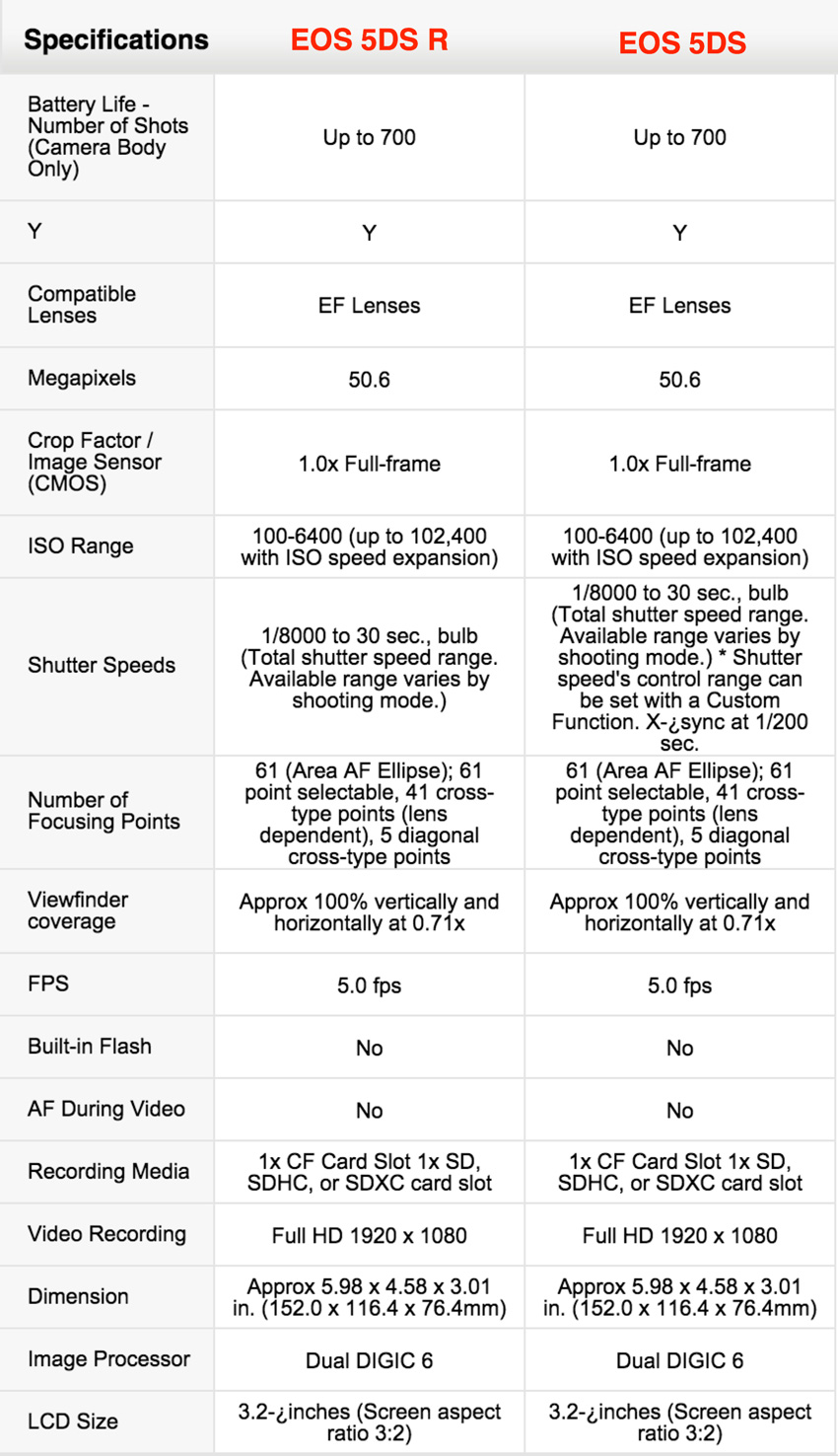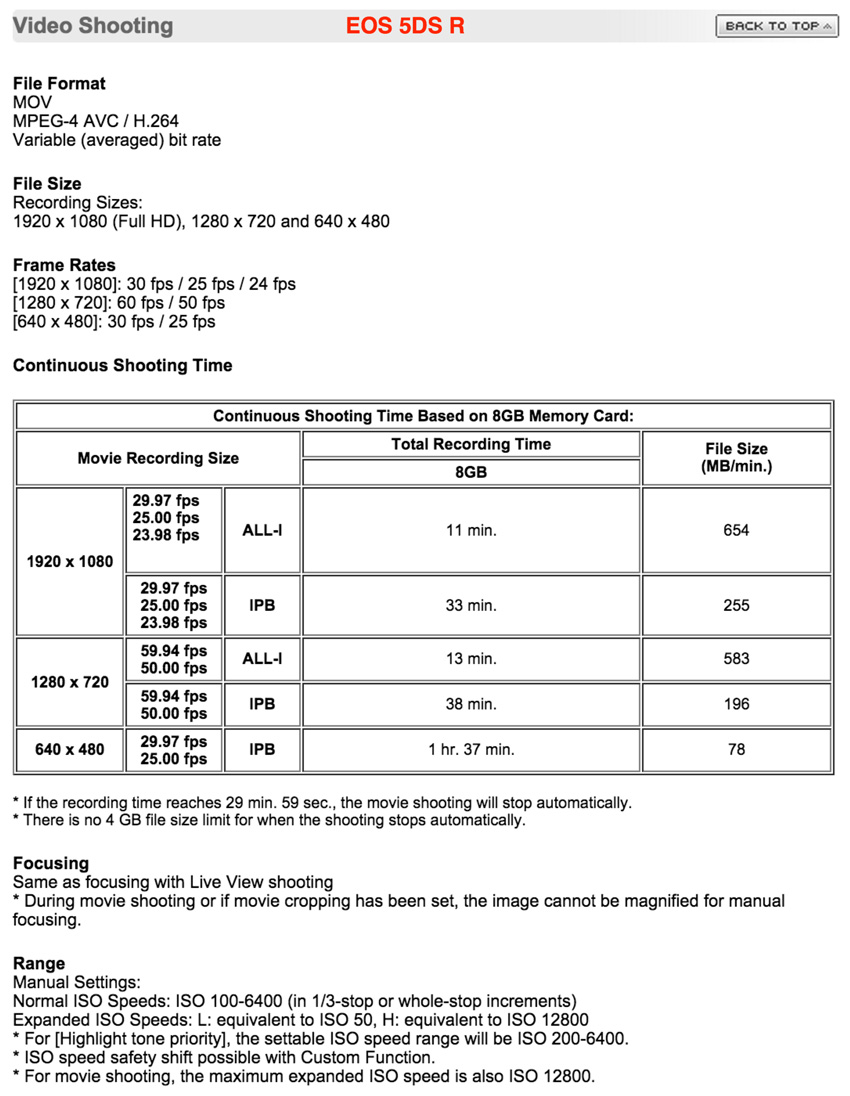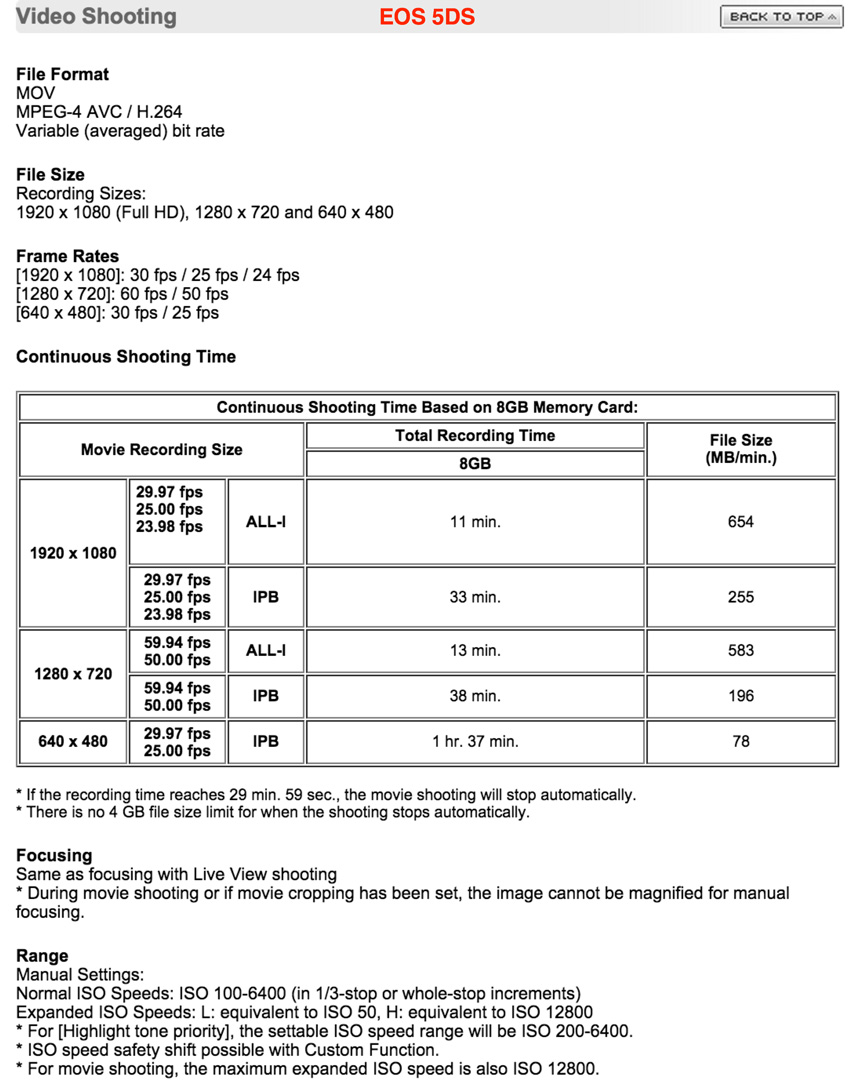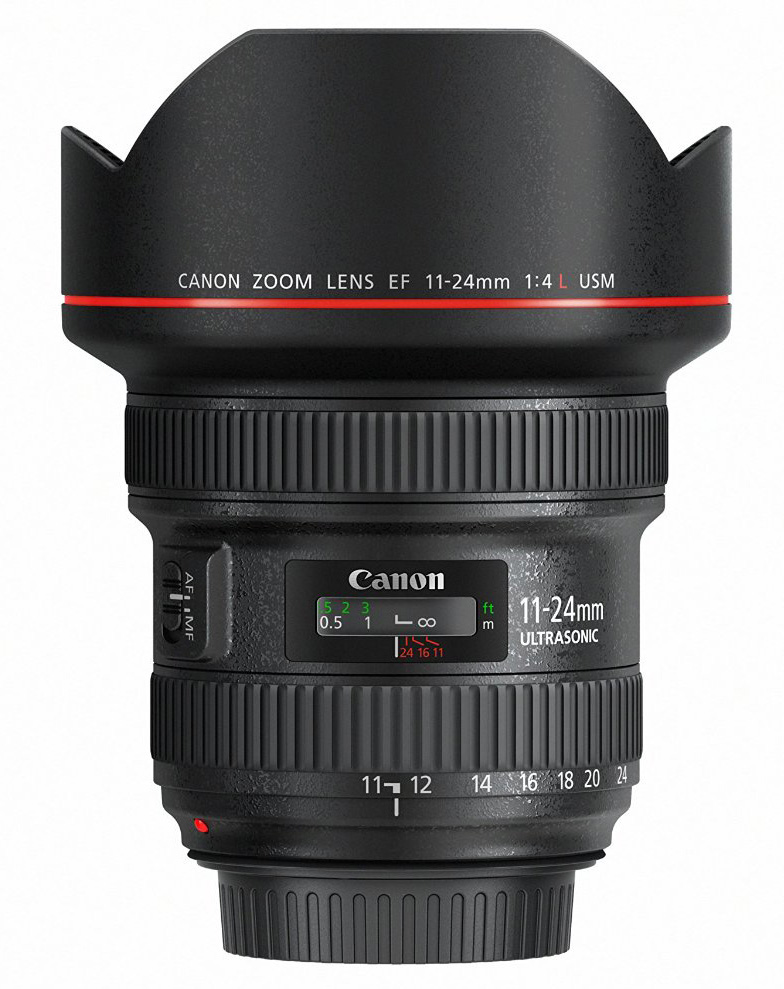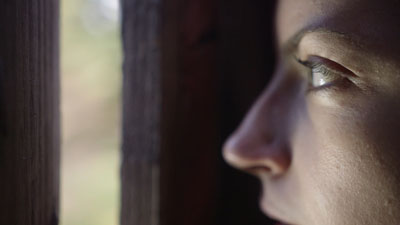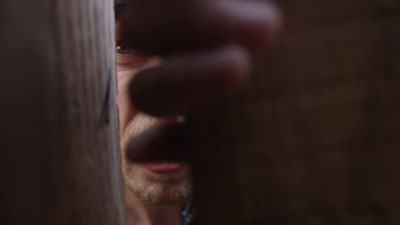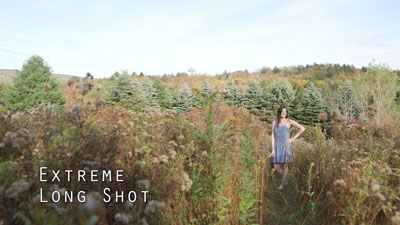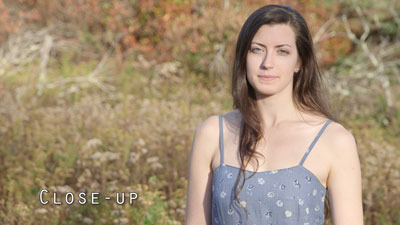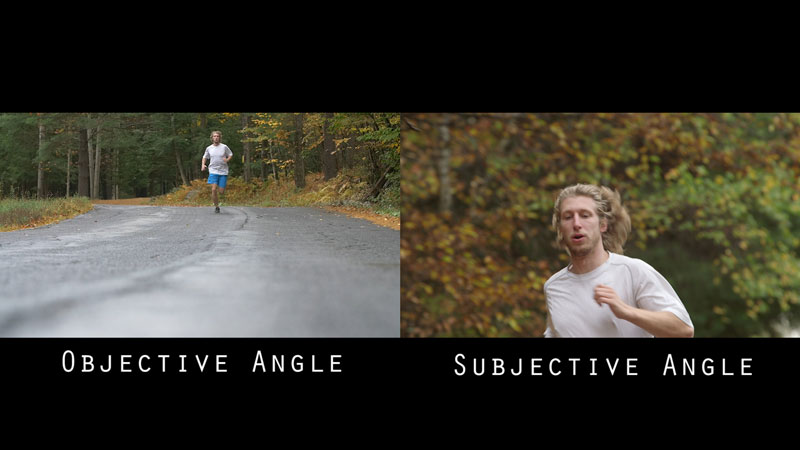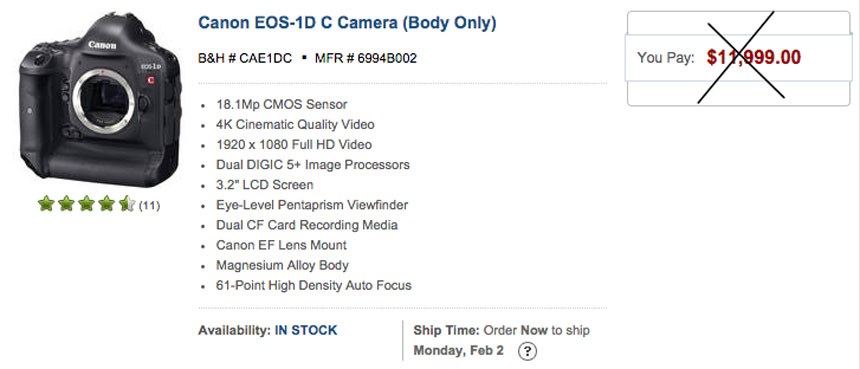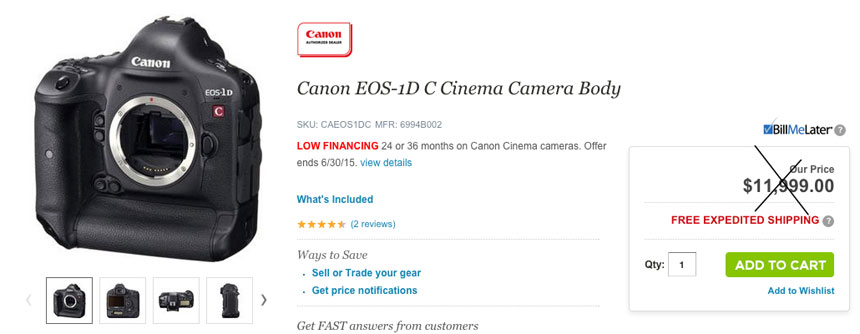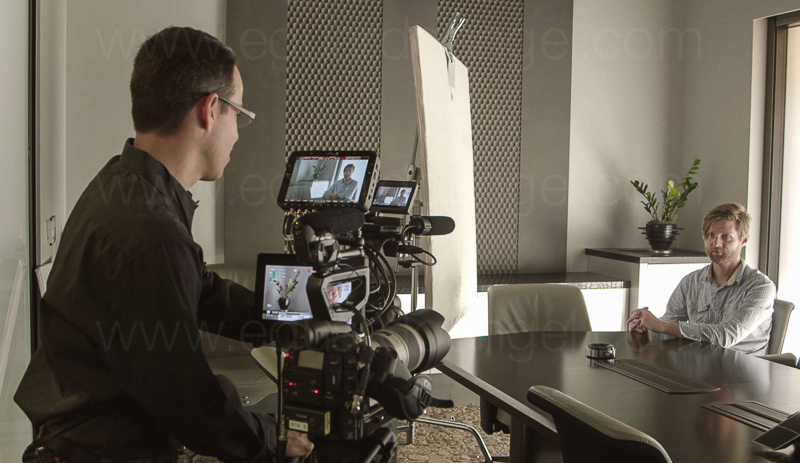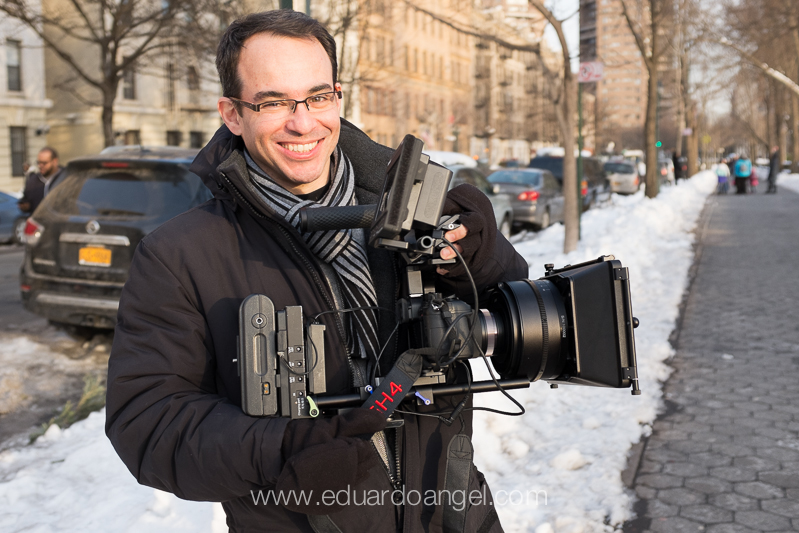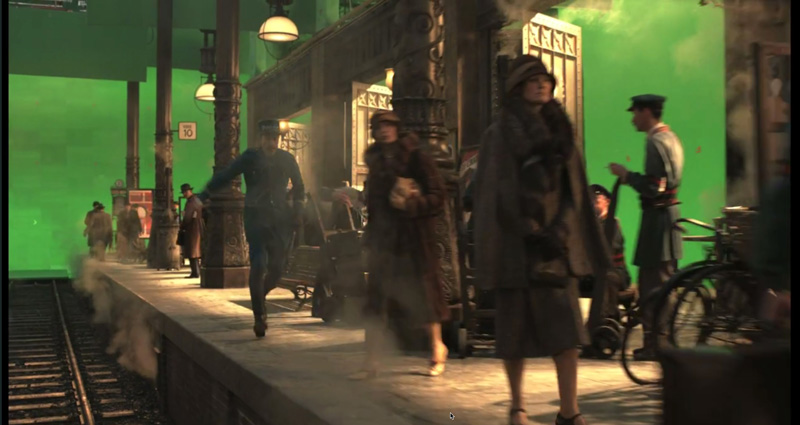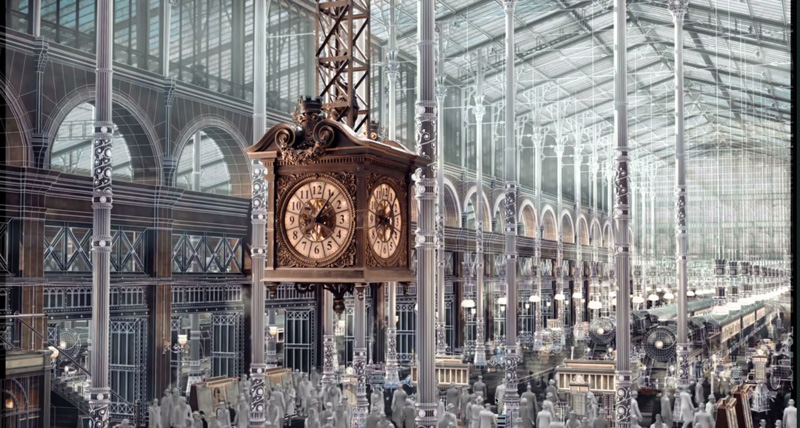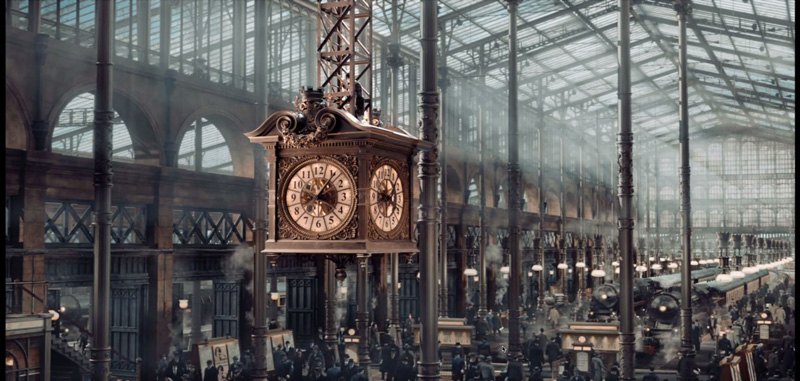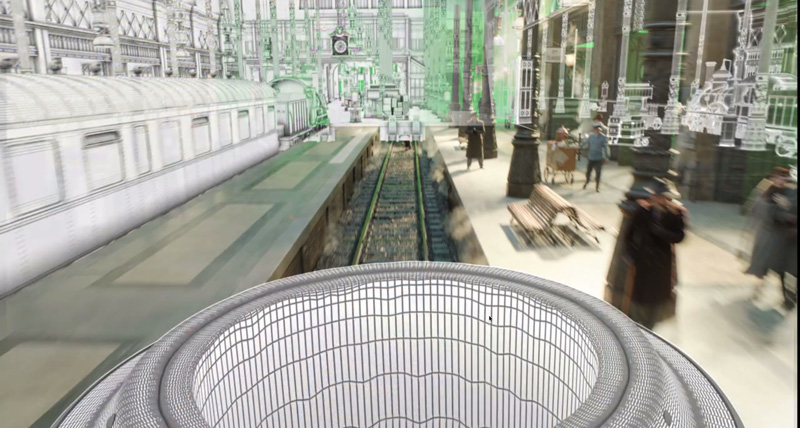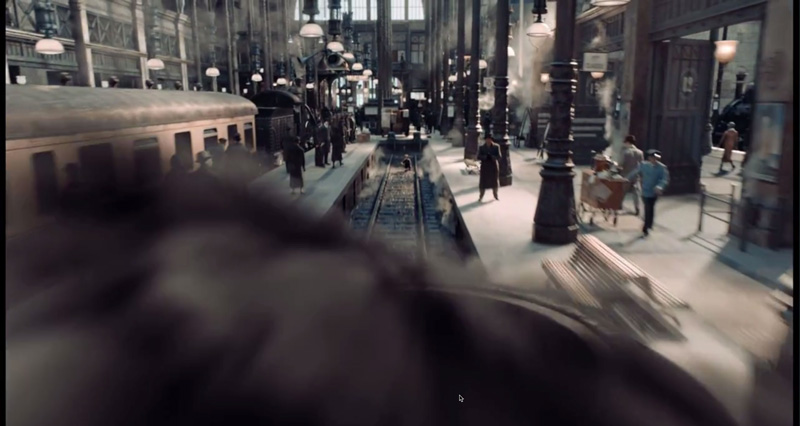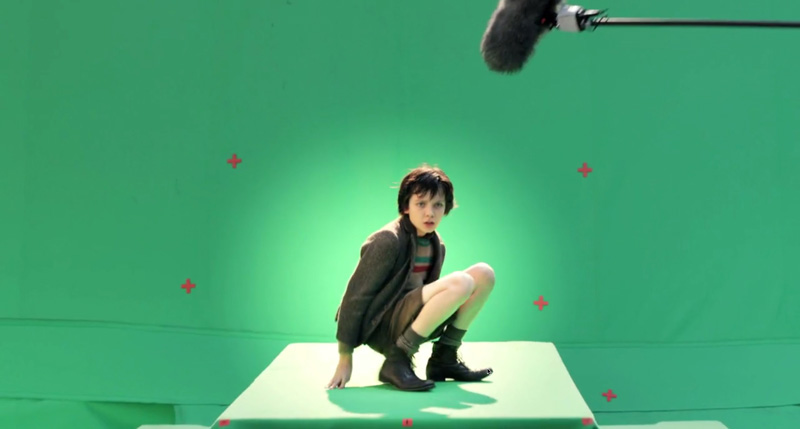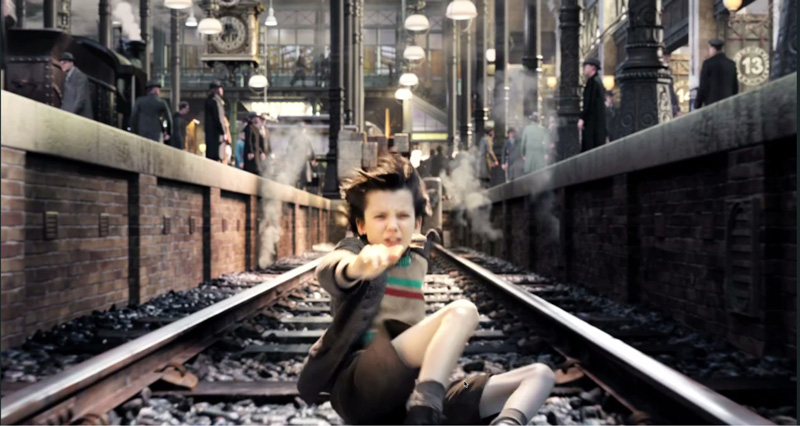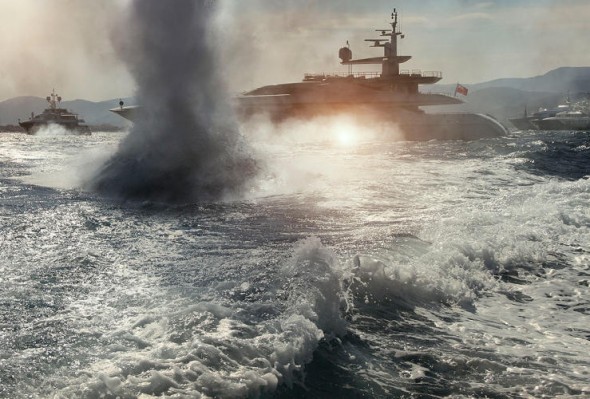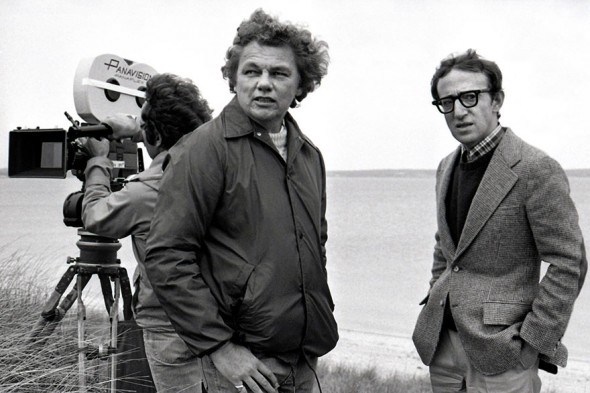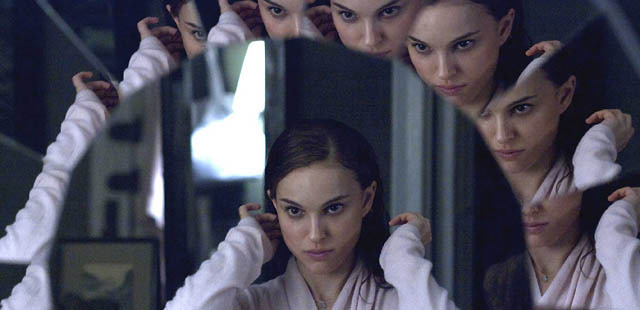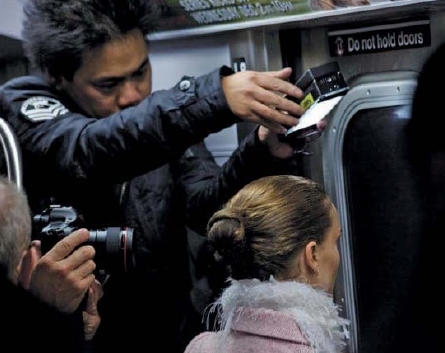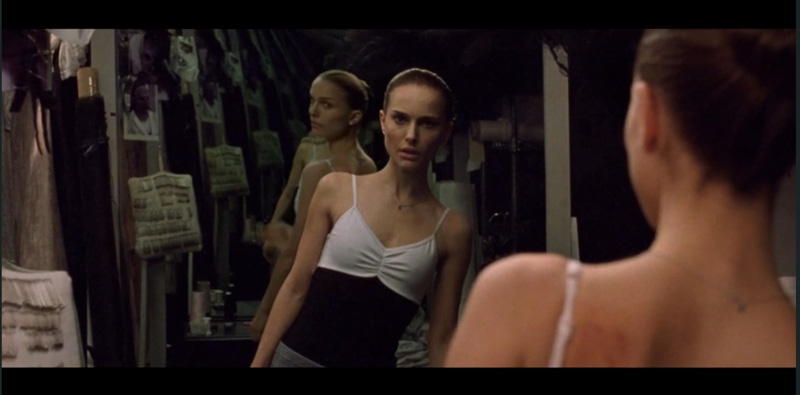Video
NAB 2019 Handouts
As I mentioned on a previous article, I’ll be presenting several workshops at the upcoming NAB Show in Las Vegas.
The handouts for the main three sessions are out of the oven, and we are making them available for free to anyone interested.

We also added two new onlines courses, and updated our two most popular courses:
- Filmmaking Essentials for Photographers (here’s the online course, and here’s the book)
- The 41 Essential Items for Hybrid Productions


There are several mini tutorials (under 90 seconds in length), and ALL are available for free.


Take a look, I’m sure there’s something that will fulfill your needs.
Video
Cool Podcast Interview.
Street photographer Valérie Jardin has a Podcast called “Hit The Streets.”
We had a really nice conversation about the skills necessary to go from still to motion, and why photographers should add filmmaking skills to their arsenal. The conversation is now available as the latest episode of “Hit The Streets.”
Video
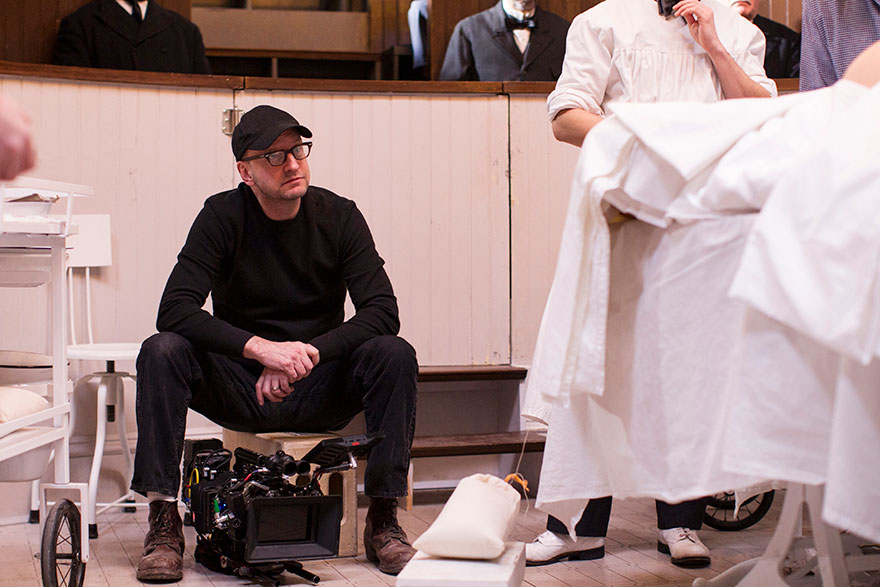
Understanding Steven Soderbergh. Part 2.
On my previous post I wrote about Steven Soderbergh’s professional life. The goal was to give some context on why I consider him a leading force in the future of filmmaking, regardless the quality or financial success of his most recent movies.
I started paying close attention to how Steven Soderbergh works around 2014 when he released the Cinemax show The Knick.
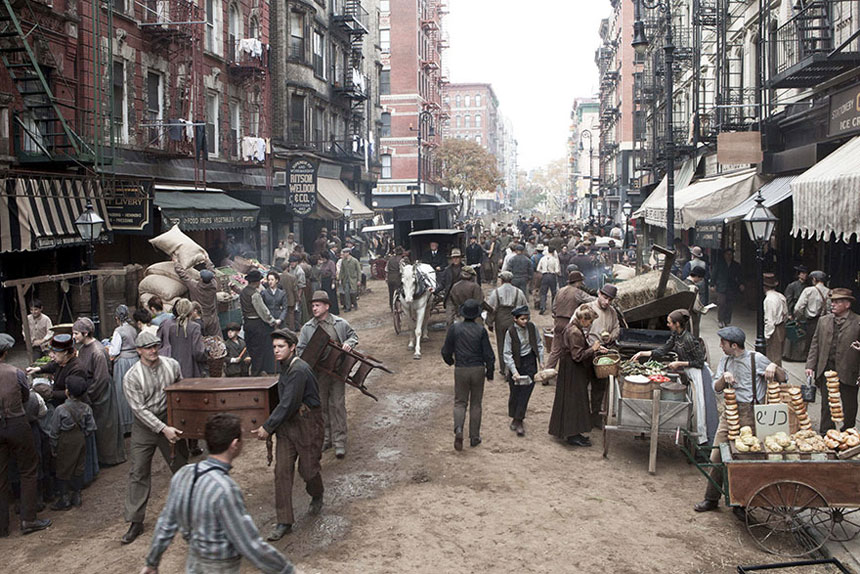
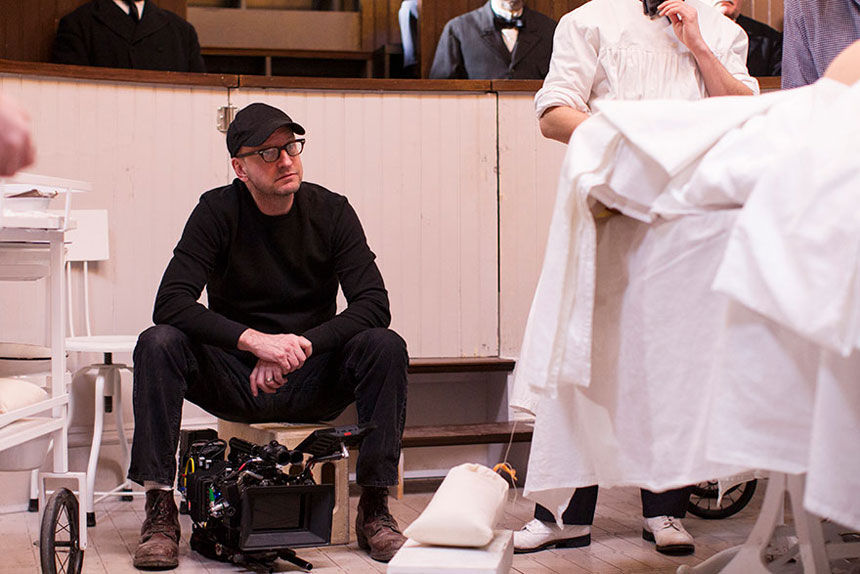
On this post (and the next one) I’ll share everything I know on Soderbergh’s production schedule, using the iPhone to shoot Unsane and High Flying Bird, his approach to scriptwriting, and why he prefers working with skeleton crews.
The huge advantages of small crews.
Let’s start with that last part. By now you know I prefer to shoot with the smallest possible crew and the least amount of gear. So much so that I recently started a new website called the 1 Person Crew. There I shared why Robert Rodriguez is also one of my heroes. But here’s Steven Soderbergh’s take on the advantages of working lean and mean:
“One of my favorite shooting days on High Flying Bird was when we did the opening scene at The Standard hotel. We took a break, and then we started walking downtown New York with a crew of four or five people, and André. I’m walking and I’ll go, “Okay, stop, we’ll put the camera here.” Shoot that, walk, walk, walk, okay, we’re stopping here. It was really fun. It took us two hours to walk and shoot our way down to the World Trade Center.”
Steven Soderbergh
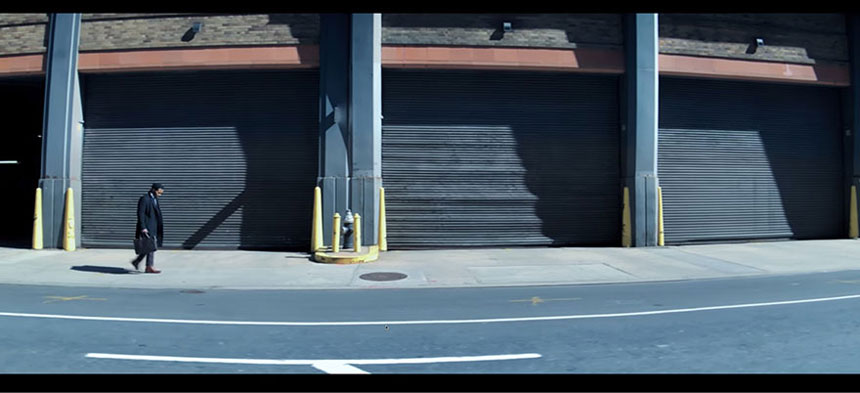
Steven Soderbergh’s iPhone
“‘I don’t want to wait on the tool, the tool should wait on me.”
Steven Soderbergh quoting Orson Welles.
High Flying Bird and Soderbergh’s previous movie Unsane were shot on an Apple iPhone. It’s all about size, and the ability to get the shot he wants in tight quarters. In Unsane when space got particularly tight, Soderbergh would just tape the iPhone to the wall to get the frame he wanted.
The visuals are harsh and uncompromising, but Soderbergh sees that as part of the appeal. Unsane is a great worst-nightmare movie, a tense piece of low-budget auteurship that plops the viewer into an absurd scenario and then ratchets up the tension for the next 90 minutes.”
The Atlantic
For “High Flying Bird” Soderbergh originally wanted to shoot anamorphic, and have a much cleaner, slicker look. But the challenge was gaining access to real-life locations that embodied an affluent world. For a small, nimble production, the advantages of the iPhone outweighed the image fidelity of an ARRI or RED cameras that cost a hundred times more.
“The iPhone seemed to me a pretty natural fit for that approach. It still is, in my mind, in terms of the scale of it, the speed that was necessary to execute it, in the time we had allotted.”
Steven Soderbergh
On High Flying Bird there’s a shot where three actors are walking down an office corridor. As all three break in different directions the camera follows one actor into an office, and then retreats.
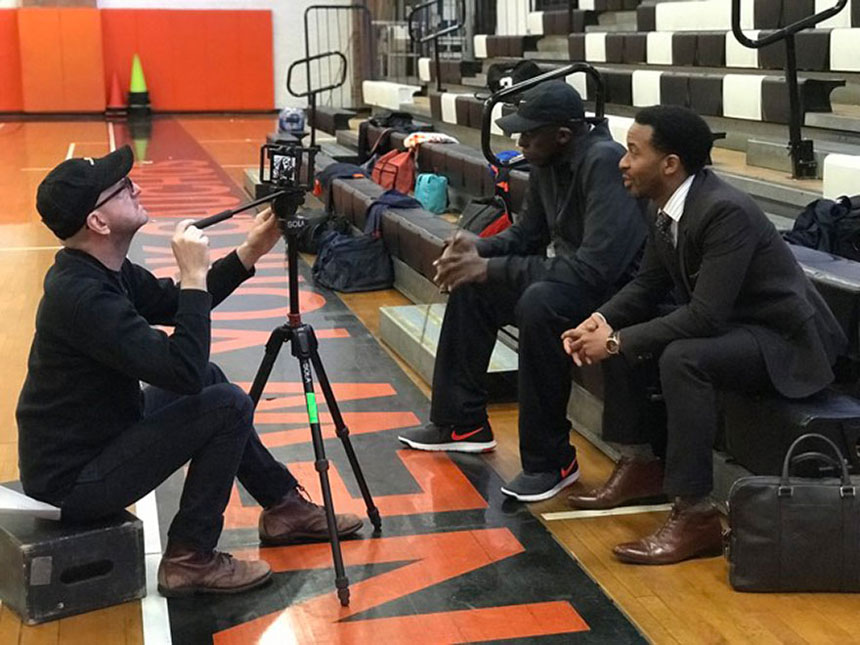
A 350-pounds dolly? Screw that! Instead, Soderbergh sat in a wheelchair, holding the iPhone on this tiny Gimbal mimicking a mini crane movement.
“Using a more traditional approach with normal-size cameras would have been extremely difficult, if not impossible. To get the lens where I wanted, to be moving in certain way or have the camera reach multiple destinations without either somebody getting hurt, or the shot being compromised because of the size of the equipment. A normal size dolly, weighs 350 pounds. Moving quickly can be dangerous and somebody could get hurt. And we could have been there for hours.”
Steven Soderbergh
“I get very frustrated when it takes a long time to execute it. Like, as soon as I feel it, I want to shoot it. And so, that’s one of the biggest benefits of this method — the time from the idea to seeing an iteration of it is incredibly short, like, a minute, like, maybe less. For me, the energy that that creates on set, and I think on screen, is huge.”
Steven Soderbergh
Soderbergh’s lighting package (shooting with the iPhone or proper cinema cameras) has been stripped down to a 12-inch by 12-inch LED panel (like this) in recent years. The look can be more evocative of a filmmaking student than an Oscar-winning director with 30 features under his belt. But this is as much an aesthetic as a practical decision, especially since 2000 when Soderbergh took over the cinematographer’s role on his films.
From Script to Screen.
The Knick’s original script called for 10 episodes. Instead of working on complete episodes one at a time Soderbergh turned the script into a “10-hour movie” shooting the first season in 73 days. In other words, Soderbergh shoot eight to nine script pages a day, double the typical rate for a TV drama. This wasn’t a new approach for him. Back in 2003 each episode for K Street was plotted, scripted, shot, cut, and broadcast in five days. Same exact story for the 2017 Netflix series Godless.
“The original script for Godless was 175 pages. Instead of chopping one of its limbs off, we thought “why don’t we turn this into a series?” So we approached Netflix with the idea and they said “Go. You’re starting tomorrow. Netflix ability to move that quickly and that definitively is their biggest advantage.”
Steven Soderbergh
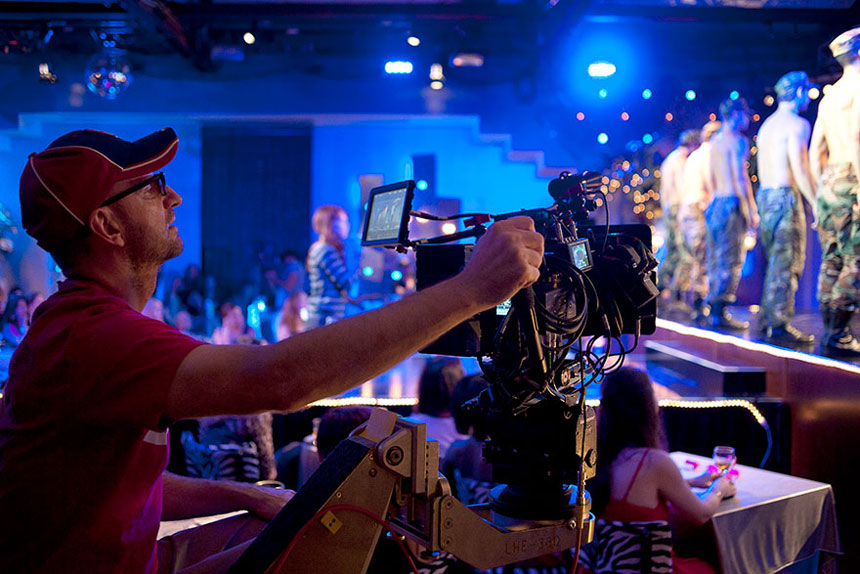
On my next post I’ll share the gear, schedule and workflow Soderbergh used the the Cinemax series The Knick, and why I believe his production approach will be the way how many TV shows and features will be produced from now on.
Video
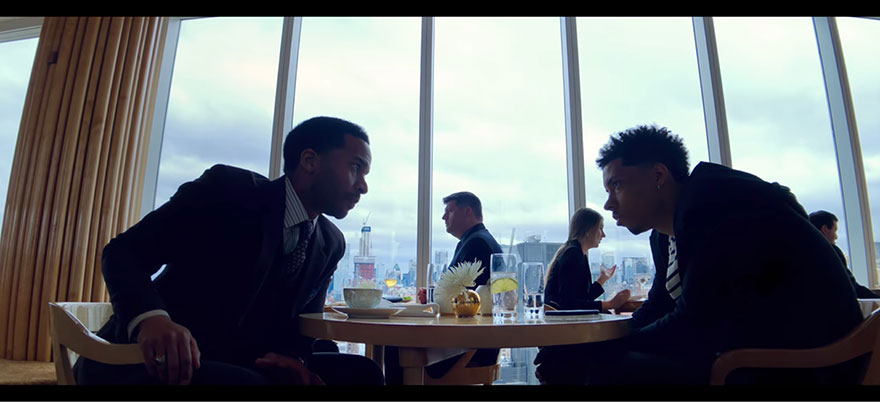
Understanding Steven Soderbergh. Part 1.
Today I’d like to share a bit about Steven Soderbergh’s professional life, and why have I’ve been following him for years. On two upcoming posts I’ll share everything I know about his working methods, including his shooting schedule and preferred workflow and gear. Cool? Let’s go!
Thirty years ago Steven Soderbergh became the pioneer of independent cinema with his first movie Sex, Lies and Videotape. Today he leads the future of filmmaking and might be even shaping the future of the NBA.
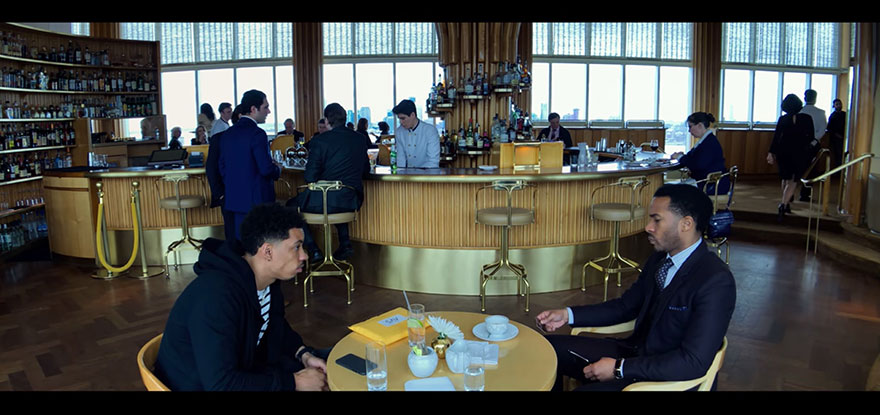
Last week, Steven Soderbergh’s latest film “High Flying Bird” launched globally on Netflix. I waited for weeks to watch it and… let’s say it wasn’t exactly what I was expecting.
To be fair, I don’t follow professional sports, and the film is about an NBA agent and a rising basketball star who try to change the business of professional basketball. With only 72 hours to pull off a daring plan, they try to outmaneuver the other players with a strategy that could change the game forever. The outcome raises questions of who owns , and who should own, the game.
Interestingly, the characters in “High Flying Bird” imagine what could happen if pro players took their careers into their own hands using the power of the internet. Well, that is EXACTLY what Steven Soderbergh has been doing with the Hollywood studio system for a very long time.
For example, back in 2005 (before anyone thought is was possible) Soderbergh released Bubble simultaneously in theaters and as a home release. In 2009 he tried the same approach with The Girlfriend Experience with adult film star Sasha Grey.
In 2017 with Logan Lucky, Soderbergh
“crafted a project that bypassed traditional Hollywood production and marketing formulas, targeted his advertising to find the right audience, edited trailers himself, and ignored the usual branding paradigms.”
The Atlantic
Who is Steven Soderbergh?
He is the guy who once directed Out of Sight, The Limey, Erin Brockovich, Traffic, and Ocean’s Eleven, all within a three-year period.
Many people forget (or don’t know) that in 2000, Soderbergh received two Oscar nominations for Best Picture, and won Best Director for Traffic.
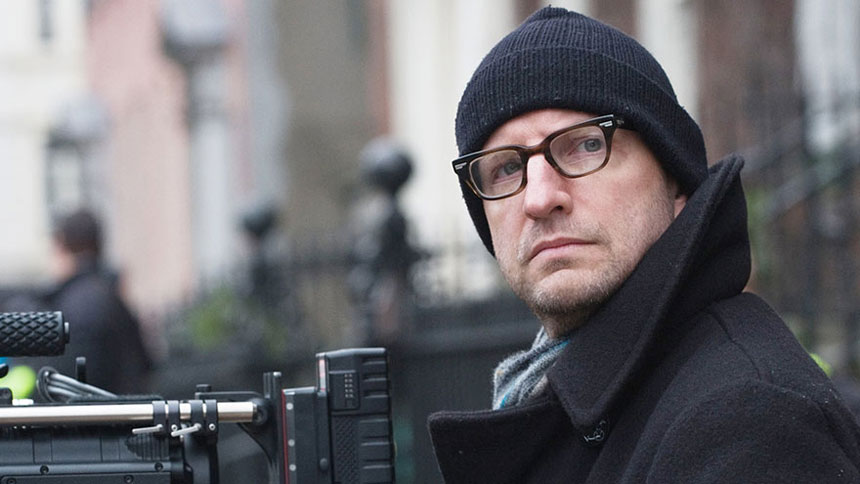
As of right this second, Soderbergh has 42 credits as director, 49 as producer, 28 as cinematographer and 23 as editor. He has 28 features and over 30 hours of TV series. His directorial work alone have grossed over US$2.2 billion worldwide.
“Soderbergh has worked in every genre and at all levels of the studio system. He directed glossy franchise entertainment (Ocean’s Eleven), Oscar-winning successes (Traffic and Erin Brockovich), hard-boiled noirs (Out of Sight and The Limey), and low-budget experiments (Full Frontal, Schizopolis, and The Girlfriend Experience).”
The Atlantic
In other words, Steven Soderbergh is not a human from planet earth.
Steven Soderbergh’s Oscars Acceptance Speech.
“There are a lot of people to thank. Rather than thank some of them publicly, I think I’ll thank all of them privately. What I want to say is — I want to thank anyone who spends part of their day creating. I don’t care if it’s a book, a film, a painting, a dance, a piece of theater, a piece of music… Anybody who spends part of their day sharing their experience with us. I think this world would be unlivable without art, and I thank you. That includes the Academy. That includes my fellow nominees here tonight. Thank you for inspiring me. Thank you for this.”
Steven Soderbergh
That’s a powerful message. So powerful that the Academy Awards recently held it as “the ideal of an Oscar speech” probably because it is short and to the point.
The real-life story behind the speech is fascinating:
“I had nothing prepared because I knew I wasn’t going to win. I figured Ridley Scott, Ang Lee, or Stephen Daldry would win. So I was hitting the bar pretty hard, having a great night, feeling super relaxed because I didn’t have to get up there.”
Steven Soderbergh
So the combination of lots of alcohol and lack of preparation worked well that night. Going back to Soderbergh’s professional life,
On Marketing Logan Lucky.
“Logan Lucky was released on August because historically, it has been a good time to release something of quality. There’s typically a dead zone before Labor Day. The big summer movies have played out, and there are three weeks with some breathing room. You just need a lot of marketing money, more than we had. I was aware it might not work. I learned a lot, and it was absolutely a worthwhile thing to do, to try and create an avenue for projects that don’t fall in any of these tiers or to want to have creative control over everything, with more financial transparency.”
Steven Soderbergh
On my next two post the plan is to share everything I know on Soderbergh’s production schedule, his approach to scriptwriting, and why he prefers working with skeleton crews.
Video
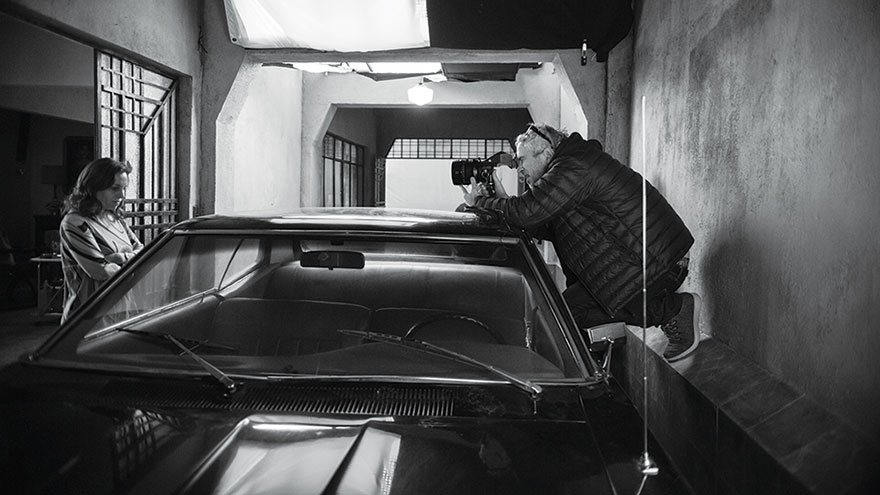
The Sound of Roma.
I started thinking about a “Roma” blog post a few minutes into the movie.
Why Black and White? What do those almost endless pans mean? How similar or different is the composition compared to “Gravity“? What’s the meaning of “water” for Cuaron?

But as I started reading more about the movie, which by the way was written, directed, produced, shot, and co-edited by Alfonso Cuarón, my attention quickly drifted to the film’s sound design.
First things first.
I am assuming you know about Roma. If you don’t, here’s the executive version. Roma is a semi-autobiographical take on Cuarón’s childhood in Mexico City in the early 70’s.
So far Roma has won the Golden Lion in Venice, received 10 nominations at the 91st Academy Awards—including Best Picture, Best Foreign Language Film, Best Director, Best Actress and Best Supporting Actress. It is tied with The Favourite as the most-nominated film, and with Crouching Tiger, Hidden Dragon (2000) for the most Oscar nominations ever received by a film not in the English language.
It also won Best Director and Best Foreign Language Film at the 76th Golden Globe Awards, Best Director and Best Picture at the 24th Critics’ Choice Awards, and at the 72nd British Academy Film Awards won Best Film, Best Film Not in the English Language, Best Direction and Best Cinematography.
UPDATE 20190225: Roma delivered Netflix its highest Oscars prestige yet, contending in 10 Academy Award categories, and wining three: Best Director, Foreign Language Film and Best Cinematography. Alfonso Cuaron gave Mexico its first foreign language film Oscar.

Sound Design.
Now, back to sound design. So it happens, the sound supervisor and re-recording mixer was the Academy Award-winning Skip Lievsay, who also worked on “Gravity“, “Children of Men“, “Y Tu Mama Tambien” and all 18 movies by the Cohen Brothers.
The most informative resource was this interview with Skip Lievsay on YouTube. Here are 3 of my favorite sections:
The full interview.
I highly recommend listening to the complete interview to learn:
- How not having a musical score keeps the audience guessing what will happen next
- Why it was important to Cuarón to have the dialog emanate not just from the screen channels but from all around the audience
- The stunning five-day loop group recording session with 350 actors
- How the final mix of the film took 10 weeks, 7 days a week, 12 hours a day.… wow…..
The technical stuff.
Filmmaker Magazine has another great article on Roma’s sound design. It’s a bit technical but enjoyable.
“In Atmos, we were able to use the x-axis and the y-axis as well as the z-axis. That’s the trick — using the z-axis in terms of extra reverbs or spatial ability.”
Filmmaker Magazine
A (much) deeper interpretation.
If you are interested in a more esoteric approach to Roma, pay close attention to these comments by another maestro, Guillermo del Toro.
Get 60 days FREE of the best music for filmmakers.
Get 30 days FREE of the best collaboration software.
Video

The 20 Best Books on Filmmaking.
Over the years I have been steadily collecting the best books on filmmaking. Most of these titles have been thoughtfully recommended by friends and students. A few have been fortuitous purchases inspired by intriguing reviews found on Amazon. And, of course, there are some that have come to find a home on my bookshelf in other mysterious ways.
1. The Oxford History of World Cinema by Edward O’Neill
“This is NOT a Summer reading book. Over 800 pages and (4 pounds), this one is perfect for rainy afternoons while sipping coffee and dreaming away.”
2. In the Blink of an Eye Revised 2nd Edition by Walter Murch
“One of my favorite and most inspiring books. Anyone interested in video editing, sound design, directing or screenwriting should buy this book immediately.”
3. MasterShots 100 Advanced Camera Techniques to Get an Expensive Look on Your Low-Budget Movie by Christopher Kenworthy
“Effective camera techniques to increase the production value of your productions.”
4. The Filmmaker’s Eye: Learning (and Breaking) the Rules of Cinematic Composition by Gustavo Mercado
“Understanding the rules of cinematography and how to successfully break them.”
5. Directing: Film Techniques and Aesthetics by Michael Rabiger
“An interesting approach (from a director’s persepctive) to script analysis and development.”
6. The Color Correction Handbook: Professional Techniques for Video and Cinema by Alexis Van Hurkman
“Grading is such an important aspect of post-production that understanding the possibilities, and limitations, is key.”
7. The Technique of Film and Video Editing: History, Theory, and Practice by Ken Dancyger
“A “precise look at the artistic and aesthetic principles and practices of editing for both picture and sound.””
8. Rebel without a Crew: Or How a 23-Year-Old Filmmaker With $7,000 Became a Hollywood Player by Robert Rodriguez
“A true inspiration to “stop dreaming and start doing.””
9. Cutting Rhythms: Shaping the Film Edit by Karen Pearlman
“There are so many ways to cut and present a story. Understanding the right “rhythm” of each story is an essential skill.”
10. The Conversations: Walter Murch and the Art of Editing Film by Michael Ondaatje
“Would you pay $20 to hang out with the editor behind “American Graffiti” “The Conversation,” “Apocalypse Now,” “The Godfather,” “The Talented Mr. Ripley,” and “The English Patient?”
Then buy this book.”
11. The Five C’s of Cinematography: Motion Picture Filming Techniques by Joseph V. Mascelli
“First published in 1965 this classic is now more relevant than ever. My go-to textbook on all my Filmmaking Workshops.”
12. Moviemakers’ Master Class: Private Lessons from the World’s Foremost Directors by Laurent Tirard
“Witness the thought process behind Almodovar, Bertolucci, David Lynch, the Coen Brothers, John Woo and Woody Allen. Their processes are all very different and all very effective.”
13. Guillermo del Toro Cabinet of Curiosities: My Notebooks, Collections, and Other Obsessions by Guillermo del Toro
“Guillermo del Toro’s notebook, the genius behind Hellboy, The Orphanage, and Pan’s Labyrinth. Foreword by James Cameron, afterword by Tom Cruise, and contributions from Neil Gaiman and John Landis, among others.”
14. Cinematography: Theory and Practice: Image Making for Cinematographers and Directors by Blain Brown
“Getting this book and Amazon’s Instant Video is like getting an MFA in Cinematography.”
15. The Big Picture: Filmmaking Lessons from a Life on the Set by Tom Reilly
“The book covers 50 short, to the point, extremely useful tips that have helped us save an incredibly amount of time and money on pre-production and production. This book is a fantastic resource.”
16. The Philosophy of the Coen Brothers by Mark T. Conard
“A book about the Coen Brothers. Enough said.”
17. Directing Actors: Creating Memorable Performances for Film & Television by Judith Weston
“Understanding the technical aspects of filmmaking is as important as learning how to communicate with the people you work with, especially when they are NOT professional actors.”
18. Hitchcock (Revised Edition) by Francois Truffaut
“Simply put, this is a book-length conversation between two of the best film directors in history.”
19. The Complete Film Production Handbook by Eve Light Honthaner
“Everything you need to know to set up and run a production. An essential resource if/when you need to work and communicate with much more experienced producers.”
20.Filmmaking Essentials for Photographers: The Fundamental Principles of Transitioning from Stills to Motion by Eduardo Angel (yes, that would be me!) UPDATE: The PDF version is now available here.
To remain relevant and in demand in today’s visually driven world, image makers must learn to craft both still photographs and motion in order to attract clients. While there are many similarities between photography and cinematography, there are key aspects of shooting motion—such as sound and camera movement, to name just two—that are uncharted territory for most photographers.
These are books that I own, have read multiple times, truly enjoy, and highly recommend. My hope is that they help you sharpen your skills, improve your craft, and give you many hours of joy and wonder.
Here’s the complete list on Amazon.com: my top 20 favorite books on filmmaking.
Video

The Pros and Cons of external recorders.
I’ve been using an Atomos external monitors/recorders for a while, and while I had very clear reasons to pick up this device, I’ve found many other very valuable and attractive features. Here I share the most interesting ones in no particular order.
1. Longer recording times
The first and most obvious reason was to record 4K and HD for extended periods of time. The Shogun utilizes 4K HDMI and 12G-SDI inputs to record clean output signals at resolutions up to UHD 4K (3840 x 2160) at 23.98, 24, 25, 29.97, and 30p, as well as Full HD (1920 x 1080) video up to 120 fps with some cameras.
We’ve been shooting a lot of corporate interviews and live events lately and swapping 32GB or 64GB is cumbersome and very inefficient. The additional steps in post to log each and backup each card are fairly simple but time consuming. Yes, SD cards are cheap, with a 64GB costing about $30 (Amazon • B&H) and a 128GB going for about $60 (Amazon • B&H), I was expecting Solid State drives to cost an arm and leg. Wrong!
You can now get an “Atomos approved” (the complete list is available here) SanDisk Pro 240GB drive for only $120 (Amazon • B&H) and a SanDisk Pro 480GB drive for only $200 or less! (Amazon • B&H). Both drives come with an impressive 10-year warranty. And here’s a special Shogun kit that includes TWO 240GB Solid State Drive for FREE. A no brainer if you ask me.
It is worth mentioning that shooting 1080 in ProRes 422 on a 240GB drive (with the Panasonic Lumix GH5 on Amazon • B&H) gives you almost 3.5 hours of recording time. Using the same drive but recording in ProRes LT gives you almost five hours.
The Shogun also allows other systems like Sony’s a7S (Amazon • B&H)that are not capable of recording 4K internally to send the 4K signal to the external device via HDMI.
2. Adding XLR ports to your cameras. No need to sync audio in post.
The first “ah-ha!”moment was recording audio directly into the Shogun via the provided XLR breakout cable (with two 3-pin male and two 3-pin female XLR). The Shogun provides Phantom Power which is essential when using our trusted Rode Lavalier mics (Amazon • B&H).
The Shogun can record 8 channels of digital audio embedded in the HDMI signal and 12 channels of digital audio embedded in the SDI signal. There’s also a 3.5mm output that doubles as a Line Out or Headphone jack. The headphone’s volume can be controlled separately within the menu. Pretty clever!
We have used the Shogun mostly with Sony and Panasonic effectively adding XLR ports to our tiny cameras. This is important: we noticed a delay or off-sync between the footage and the audio being recorded into the Shogun. After extensive tests we also noticed that the audio delay was different for Cam A and Cam B even though both were the same brand and model, and running the same exact firmware version.
Thankfully Atomos includes a very easy fix; simply go to the Audio menu and from there navigate to the “Audio Options”where you will see an “Audio Delay”preset. We finally settled on 4 frames for the Audio delay.
For our one-person interviews and the most recent Lynda.com courses we used one shotgun boom mic on XLR A and a wireless lavalier set on XLR B. This is what the correct settings on the Shogun should look like:
3. Standardizing editing codec and no need to transcode
On most projects we try to use the same camera model. So if we need three cameras we would use three identical brand/models. We try to keep it simple.
But on a recent shoot in Portland we were shooting with two Canon C200s, had a “behind the scenes”crew using two GH5s, had one Sony A7s doing time-lapses and used one Sony FS7 for some slow-motion sequences. Not the ideal “workflow” situation.
Normally this would be a post-production nightmare for our editor and/or a huge time waste for us having to transcode all that footage every night on-location. We simply attached a Shogun to each camera, shot ProRes 422 with clean audio and the only post step required on our end was backing up the Solid State Drives into our TWO G-Tech drives (Amazon • B&H). Why two? One is set as the Master and at least one as our Backup. When possible, we bring additional Solid State Drives with us so during the shoot we can leave the footage on them as a third backup.
The only disadvantage I see from this approach is the huge file size of the ProRes compared to the native on-camera files, but when taking into account the time wasted transcoding and syncing audio the investment for bigger and faster hard drives more than pays off.
A handy tip: if you will be renting SSDs often, I suggest getting a battery-operated screwdriver to make the process of getting the drives into the Master Caddy II much faster and easier. The best bargain can be found at Ikea.
5. Camera Settings
Here’s something VERY important to consider when using the Shogun with Panasonic cameras.
1. In the camera’s “Motion Picture”Menu, navigate to the fourth screen (as of this writing).
2. Go to “HDMI Rec Output.”If for any reason you are planning to record in 4:2:2 8 bit, make sure to go to “Info Display”and turn it off. Failing to do this will record the camera’s menu into the footage.
3. If instead you are planning to record in 4:2:2 10 bit, go to “HDMI Rec Output” then “Bit Mode,”select “4:2:2 10 bit”and then “yes.”
6. Focus, Exposure and LUTs
We purchased the Shogun thinking that it would be much easier to monitor focus on a 7”screen. It does work wonderfully in that regard, but we got a lot more than we bargained for. The touchscreen is very minimalist and easy to navigate, the color accuracy is extremely good. Actually, the monitor’s color standard is REC 709 and it can be calibrated with an optional Atomos Spyder.

The additional benefit of having more reliable and customizable Focus Peaking is very handy. There are three flavors for peaking: Color, Monochrome, and Outline. In terms of monitoring exposure, especially when shooting outdoors, False Color is key. This feature assigns different colors to areas of different exposure in the image: overexposed areas appear as red, and underexposed appear as blue.
The ability to load LUTs and show the client what the footage will look like after grading is priceless. It is important to know that the LUTs loaded into the Shogun simply previews what the footage would look like, but the media being recorded is not affected. Here’s a short film featuring Panasonic’s recently released Anamorphic mode, and the yet to be released V-Log L gamma file color space.
7. Batteries
In a nutshell, get plenty of juice. Perhaps the biggest complaint from many users has been regarding battery life.The battery provided with the kit only lasts about 45 minutes, making it mandatory to buy additional ones. We went the “cheapo”route and purchased a too-good-to-be true Kastar kit on Amazon that included two batteries, a charger and a car charger for only $34. Unfortunately this time the “you get what you pay for”maxim held true. The batteries last about the same as an original Sony NP-F970, but the Kastar charger is completely worthless. An original Sony battery costs around $120.
We got stuck on location with a ton of dead batteries and a bad charger. Not a pretty day. The lesson: buy at least one good charger and always bring the Shogun’s AC charger with you (it is included in the kit).
8. Conclusions:
Clearly, the Shogun is an outstanding (but not perfect) product. While it is very light (a mere 16 ounces without batteries), which is great when used on a monopod or gimbal, it is also very fragile. Our monitor broke during our second on-location shoot and we always take great care of our gear.
If you are planning to use the Shogun in broad-daylight I’d also STRONGLY recommend getting a sun hood, which was NOT included with our original kit.
There are at least a couple of additional features we haven’t tried yet: the optional Wi-Fi Remote Control to start/stop recording from an iOS or Android device, and flagging the footage on the Shogun as favorite/reject. Apparently this gets exported within the footage’s metadata and will work with Final Cut X and Adobe Premiere Pro CC. I can definitely see this as a time-saving feature, especially while working on interviews and marking sections with the best takes or sound bites.
For a couple grand, I believe one gets a LOT of value out of this device, especially if you can get the current deal that includes two FREE Solid State Drives.
Comments? Questions? Let’s chat on Twitter.
Video
OK Fuji, now you have my attention.
I have used Fuji cameras in the past (and love them), but only for stills. Today Fuji announced a very interesting camera for video and hybrid shooters. The new X-H1 shares the same 24-megapixel APS-C X-Trans III sensor from the popular X-T2, but adds a number of important improvements like five-axis in-body image stabilization and log capture.
The X-H1 records both DCI (23.98 and 24p) and UHD 4K (up to 30p) with Rec.2020 at 200Mbps, but only at 8 bits.
A cool feature is that Fuji has included specific shutter speed options for video on the X-H1. For example, instead of 1/25 or 1/50 of a second, users can select 1/24 sec or 1/48 sec.
Slow-mo fans have to stick to 1080p, but can enjoy up to 120fps.
Key Specifications
• 24MP X-Trans APS-C sensor
• DCI and UHD 4K capture at up to 200 Mbps
• Slow motion 1080 (from 120 and 100 fps)
• 5-axis in-body image stabilization (rated at 5EV)*
• 3.69M-dot OLED viewfinder
• Touch sensitive rear LCD with two-axis tilt
• Twin UHS-II-compatible card slots
• Anti-flicker shooting mode
• Internal F-Log capture
• 24-bit audio capture
• Eterna/Cinema Film Simulation mode
• Timecode
• No-blackout continuous shooting
• Wi-Fi with Bluetooth for constant connection
Here are the complete specs on Fuji’s website.
First Impressions
I was told that the X-H1 is limited to 15 minutes of 4K shooting, but I haven’t test this yet. Even if this is accurate, I don’t believe it is a big issue for most people, unless you plan to shoot interviews or live events.
It is not clear if autofocus work in movie mode, and if it does, how fast and accurate it is. We’ll see.
I’m also curious to see if the new internal microphone is better than previous models. Apparently there’s no headphone jack on the body itself, so you will need the additional battery grip to monitor audio. Again, this isn’t a huge deal as the additional battery power is always welcomed when shooting video, but it’ll cost you an extra $300 USD.
Fuji also announced two new cinema lenses, the Fujinon MKX 18-55mm f/2.9 ($4,000 USD) and the Fujinon MKX 50-135mm f/2.9 ($4,300 USD).
The X-H1 (body only) costs $1,900 USD (less than the Panasonic GH4, Panasonic GH5s and Sony A7S II), and $2,200 USD as a kit with the battery grip.
I’d like to see real life examples of Fuji’s “Eterna/Cinema” Film simulation and F-Log footage. If you find a good one, please share the link.
All the items announced today should start shipping in two weeks.
If you are a stills shooter getting into video, considered watching some of our many free online tutorials.
Video
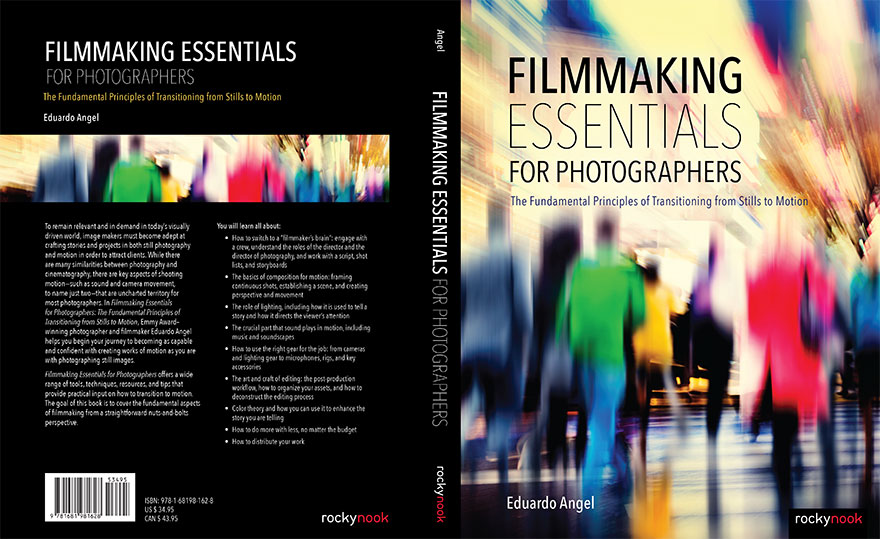
Filmmaking Essentials for Photographers (PDF Edition)
To remain relevant in today’s visually driven world, image makers must master photography and video.
While there are many similarities between photography and video, there are key aspects of shooting motion—such as sound and camera movement, to name just two—that are uncharted territory for most photographers. In Filmmaking Essentials for Photographers: The Fundamental Principles of Transitioning from Stills to Motion, Emmy Award–winning photographer and filmmaker Eduardo Angel helps you begin your journey into as confidently as you are with shooting stills.
Filmmaking Essentials for Photographers covers a wide range of tools, techniques, resources, and practical tips on how to transition to video.
Even though this is not an in-depth book on editing, directing, or even lighting, we cover the fundamental aspects of filmmaking from a straightforward nuts-and-bolts perspective. You will learn all about:
- How to switch to a “filmmaker’s brain”
- Truly understand the director’s and director of photography’s roles
- How to work with scripts, shot lists, and storyboards
- The basics of composition for motion: establishing a scene, creating perspective and moving the camera
- The role of lighting to enhance stories and direct the viewer’s attention
- The crucial role of sound in motion
- How to use the right gear from cameras and lighting gear to mics, rigs, and key accessories
- The art and craft of editing
- Post-production workflows and how to organize your assets
- Color theory and how you can use it to enhance the story you are telling
- Lastly, how to do more with less—no matter the budget
Increasingly, opportunities come to those who can create multimedia content.
The book covers some of the new business opportunities that will open up to you. With your newfound skills in motion you will tackle educational content, interviews, short films, stock footage, and commercials.
Filmmaking Essentials is now ranked among Amazon’s top 50 books for photographers and filmmakers!
Video

How to Pack Light.
A substantial challenge within small-crew, low-budget productions is how to travel as light as possible, but still carry a full production and post-production setup that is literally on your back.
In this FREE half-hour lecture I share my most valuable packing tips, the gear you can not leave behind, and even how to approach subjects in foreign countries.
This presentation was recorded live at NAB 2016 Post|Production World, the leading training event for content creators and designers.
Duration: 23 minutes
A complementary companion PDF with valuable information is also included.
Video
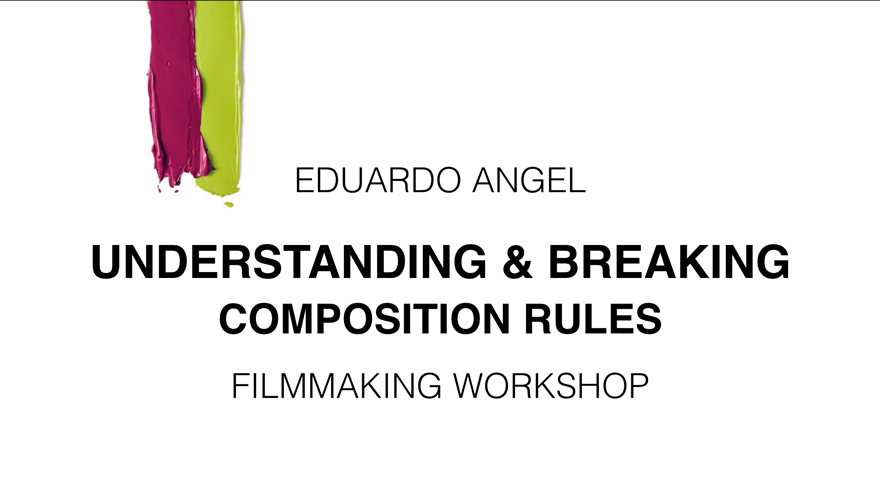
Understanding and Breaking Composition Rules.
Cinematic composition is one of the least understood yet most important aspects of video. Like good storytelling, in order to achieve good compositions you have to make every detail count and keep the audience engaged in your story.
Beginning with basics such as shot size, depth of field, and the rule of thirds, in this seminar we explore how to establish a scene, play with perspective and movement, and incorporate some of the most common shot types, including close-ups and group shots.
“Understanding and Breaking Composition Rules” was recorded live at NAB 2016 Post|Production World, the leading training event for content creators and designers.
Duration: 56 minutes
A complementary companion PDF with valuable information is also included.
Video
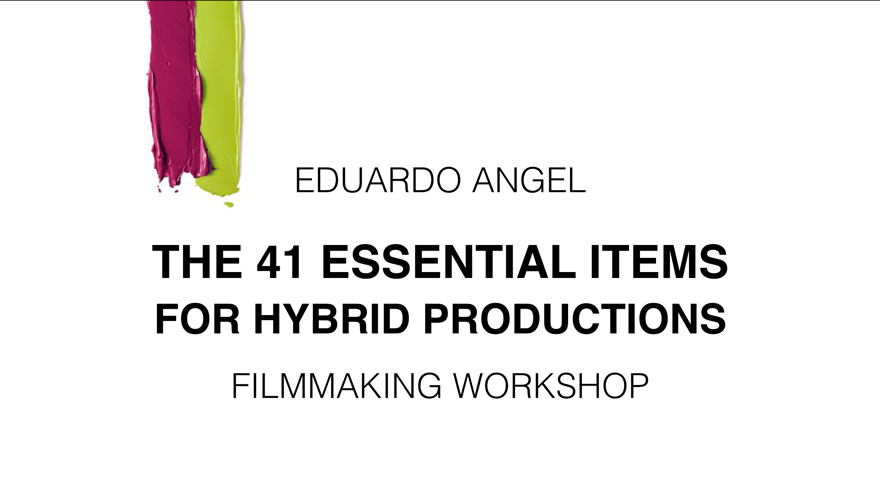
The 41 Essential Items for Hybrid Productions.
Hybrid productions where one person is required to be the photographer, filmmaker, sound engineer, producer, and even editor are increasingly popular. Getting stellar content and capturing the shots that really matter is essential, as there are no second chances.
This presentation was recorded live at NAB 2016 Post|Production World, the leading training event for content creators and designers.
Duration: 68 minutes
Two companion PDFs with valuable information are also included.
Video
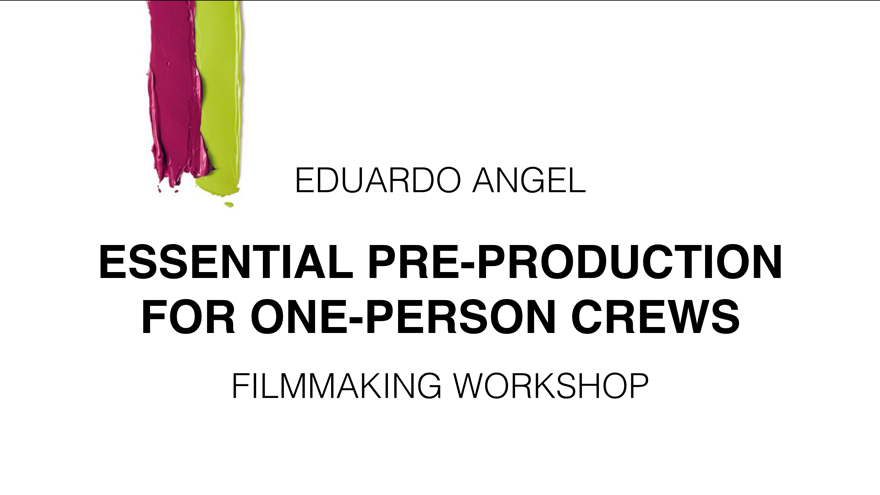
Essential Pre-Production for One-Person Crews.
Not spending enough time and resources in pre-production usually translates into more mistakes, delays and over costs during production and post.
In this hour-long seminar we cover how to work on a shoestring budget without compromising the integrity of the story and I shares insights on the most essential steps required even before arriving at each location. From pre-shooting and rough editing, to the mobile apps that stand out from the pack, and even backup strategies, there’s a lot of useful info packed on these seminars.
I truly believe anyone involved in run and gun scenarios like weddings, events, corporate, documentary, red carpet premieres, product launches, sporting events, and even video podcasts will benefit from the topics covered.
This presentation was recorded live at NAB 2016 Post|Production World, the leading training event for content creators and designers.
Duration: 68 minutes
A companion PDF is included
Video
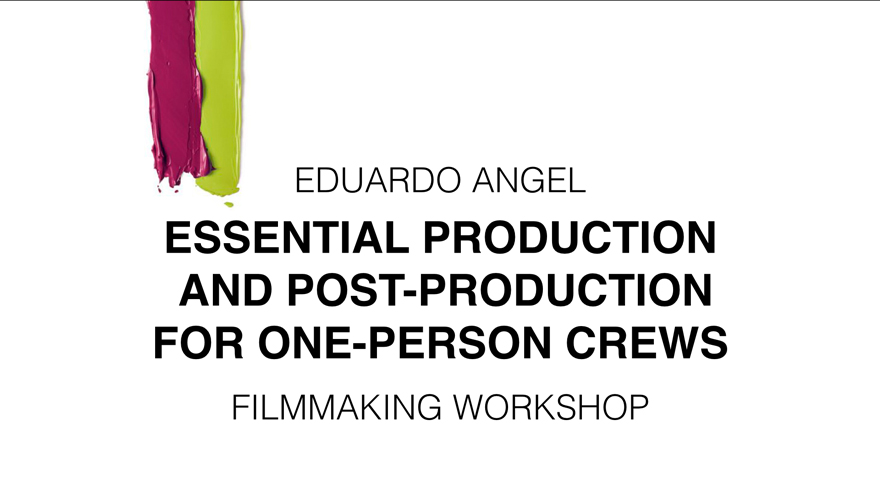
Essential Production and Post-Production for One-Person Crews.
These presentations were recorded live at NAB 2016 Post|Production World, the leading training event for content creators and designers.
Duration: 58 minutes
Two companion PDFs with valuable information are also included.
Video

The “41 Essentials” Digital Guide.
We’ve been wanting to do something like this for a very long time, but never seemed to find the time.
Well, today’s the day.
To take the guesswork out of your next gear purchase we’ve picked the best tools for photographers and filmmakers in our “41 Essential Items” Guide. The complementary download is available HERE.
Enjoy!
Video
Gear, gear and more gear.
Pretty much after every single consulting session, workshop and webinar we offer, a group of people will ask: what do you recommend for _____?
My answer is always the same “it depends.” Are you shooting alone? Only video or stills also? Do you need to move from location to location? For how long? What’s your budget? Do you already have lenses? If so, what kind/brand/mount?
You get the idea. So as a solution I decided to spend several hour compiling all the gear we use very frequently into 3 short lists: a) when shooting alone, b) when changing locations often and c) when spending more time at each location.
I added a few thoughts on each and every item. I truly hope these lists serve as a guide and more importantly, save you time while researching gear, and lots of money wasted on unnecessary toys.
Simply click on the image to access all three gear lists.
If I’m missing some essential items or you have further questions don’t hesitate to shoot me a note or send me a tweet. Happy shooting!
Video
Filmmaking Essentials for Photographers. Mini Courses.
Why Filmmaking Essentials?
One of the main challenges photographers face when starting to shoot video is to focus too much on hardware and software, and forget about the most important part: the story. While this informative course includes some technical information, the main goal is to provide an overview of the many aspects of filmmaking, and identify potential business opportunities with motion. Click HERE.
The “Filmmaking Essentials for Photographers” course is based on a popular event we have been presenting for several years, but it has been greatly enhanced with additional visuals and examples. Some of the clients and sponsors for the live event include Adobe, Adorama Pro, B&H Photo, Cinevate, Future Media Concepts, Gulf Photo Plus (Dubai), HOW Design Conference, International Center of Photography, Lynda.com, McCann Erickson, NAB Show, Panasonic, Photo District News, PhotoPlus Expo, Photokina (Germany), Savannah College of Art and Design, School of Visual Arts, Sony, and X-Rite, among others.
Video
Filmmaking Essentials for Photographers. Online Intro Course.
In 2011 I was invited along with National Geographic photographer David McLain to present a series of two-day workshops nationwide. The events were produced by Photo Quest Adventures and sponsored by PDN, Sony, Adobe, and other leading brands. The main goal was to help photographers transition into video by simplifying key concepts and providing shortcuts, resources, and advice on what gear to buy.
I have been honored to teach “Filmmaking Essentials” at all major industry events, from PhotoPlus to Imaging USA to NAB, from South America all the way to Dubai, Hong Kong, and Thailand, and at home in New York.
Few people know that I never use the same presentation twice. Each and every time I add things I’ve learned, plug in valuable feedback from attendees, students, and this website’s readers, and I strive to improve the educational experience with better examples and shorter explanations.
When looking at the advancements in digital technology since those first workshops it seems like decades have gone by. Today, we have access to a variety of brands and models of very compact cameras that can see in the dark, shoot 4K or higher resolutions, offer incredible frame rates, and even offer GPS and WiFi features so they can be easily controlled by smartphones and tablets. The future is definitively here.
But something quite odd has been happening to my personal and professional focus. The more gadgets we have at our disposal, the more I’ve shifted towards the craft of storytelling. Instead of getting more stuff, I’ve been increasingly interested in constructing and enhancing my stories to better engage the viewer. Naturally, this approach has been reflected in the educational content I produce.
Now, and for the first time, I’m proud to offer an awesome version of my one-hour presentation online. Click HERE.
The “Filmmaking Essentials for Photographers” course is based on a popular event we have been presenting for several years, but it has been greatly enhanced with additional visuals and examples. Some of the clients and sponsors for the live event include Adobe, Adorama Pro, B&H Photo, Cinevate, Future Media Concepts, Gulf Photo Plus (Dubai), HOW Design Conference, International Center of Photography, Lynda.com, McCann Erickson, NAB Show, Panasonic, Photo District News, PhotoPlus Expo, Photokina (Germany), Savannah College of Art and Design, School of Visual Arts, Sony, and X-Rite, among others.
Who is this course for?
Well, as the name implies, this version of “Filmmaking Essentials” covers concepts already mastered by advanced filmmakers or by experienced photographers who are very technically savvy. But I’m confident everyone else could learn a thing or two.
As often as possible we’ll be adding new courses, covering topics like pre-production and post, tips for one-man crews (like journalists) working stills and video assignments, advice on getting started with Color Grading, and many other fascinating subjects. As mentioned above, most of these courses are not and probably won’t be hardware or software driven, but would focus predominantly on answering the why’s, not the how’s, of the fascinating craft of filmmaking.
Also as a first, we are offering several mini-courses (averaging three minutes each and many of them for free) for those who need concrete answers to very specific questions.
So, if this is the kind of content and format you desire, vote with you wallet and let your voice be heard.
Thank you for your continued support. Click HERE to start learning.
Video

Film Anatomy. Location Scouting Apps.
Since we wrote about scouting locations a few weeks ago, many of you have asked about the apps we used. Here are our favorite ones.
Flying cross-country to scout locations is obviously impossible with our micro budget. The great news is that nowadays we don’t need to do that, or even bring a lot of gear to scout a location.
Google Earth Pro is now completely free includes a considerable amount of features including computing distances and areas using measurement tools and adding map addresses with a Spreadsheet Importer. With Google Earth we can access any location and determine accurate sunrise and sunset times, interesting vantage points, and even find nearby restaurants and hotels for our production. I can’t think of any other tool that has saved me so much money over the years.
A recent acquisition to or arsenal is Sun Seeker (for iOS) or Sun Surveyor (for iOS and Android OS) helps determine the sun’s movement and allows one to pick the best spots and plan out shots.
Smartphone apps like Artemis (for iOS and Android OS) or Pocket AC, mimic a “director’s viewfinder” and offer additional features such as interactive Depth of Field calculators, media management, shot logging, and even virtual slates. I also use them to determine which lenses we might need to rent.
A recent addition to our arsenal is Adobe Capture (for iOS and Android OS), available for iOS and Android OS. With this app it is extremely easy to create color themes, custom brushes, vector graphics and unique Looks, simply by taking a snapshot with your cellphone.
Once we have a good idea of the location and gear needs, another great tool is Shot Designer (for iOS and Android OS)which does a fantastic job blocking a scene as well helping determine where the camera will be placed. It saves time communicating the director’s vision with the DP’s technical interpretation of that vision to the supporting crew.
And once all those pieces are in place on last app that I can recommend is Martini QuickShot. Martini is essentially a storyboarding plug-in for the most popular NLEs. It comes with many pre-designed and pre-laid out shots that you can tweak and add to your timeline.
We’ll be pre-shooting our short film this coming weekend and we’ll use some mobile apps to quickly shoot and edit the project. Let me know if you are interested in knowing more, and we’ll share them here with you as well.
FOLLOW US
LinkedIn – Our Serious Resume
Vimeo – Our Video Portfolio in collaboration with The Digital Distillery, Inc
Twitter – Our Daily Updates
Facebook – A mix of News and Upcoming Events
PhotoShelter – Our Photo Portfolio
Video
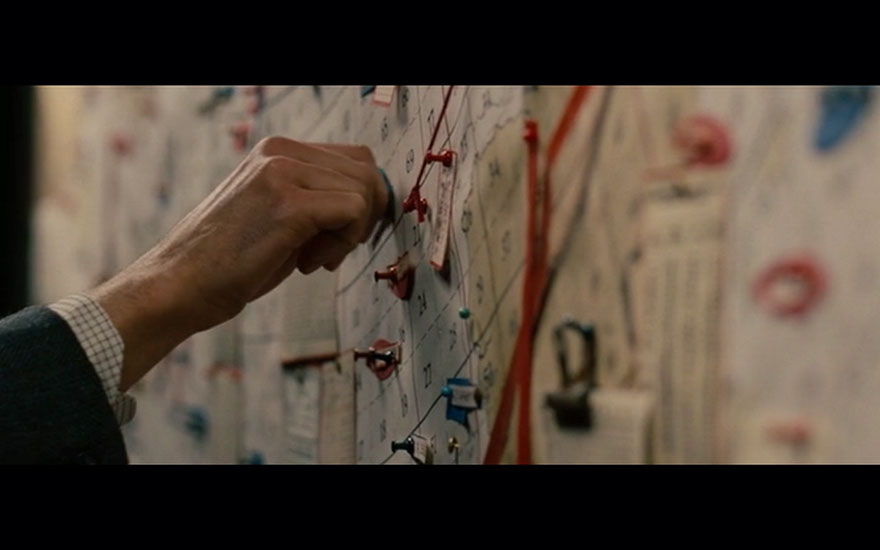
Why you need 300 people to make one movie.
Last night I watched “The Imitation Game” directed by Morten Tyldum and beautifully shot by Oscar Faura. The story is inspired in Andrew Hodges’s book “Alan Turing: The Enigma” which I read recently and found fascinating. Not to be confused by this other book to be released in a few months by different authors. Here’s Turing’s Wiki page which has pretty much the same info as the movie.
But the point of this quick post is not about the movie itself, but the amount of people involved to make it. Not being a Michael Bay or James Bond movie, I was kinda shocked to see the final credits go on and on and on and on….
Curious (as always) to know WHY exactly did they need so many people, I found the complete “cast and crew” list and organized them by department.
Almost 300 people worked on this film. With a $14 million budget the movie already has grossed over $91 million. Not a bad investment if you ask me!
I’m gonna watch all the DVD extras, and if there’s anything interesting I’ll add it to this post.
Video
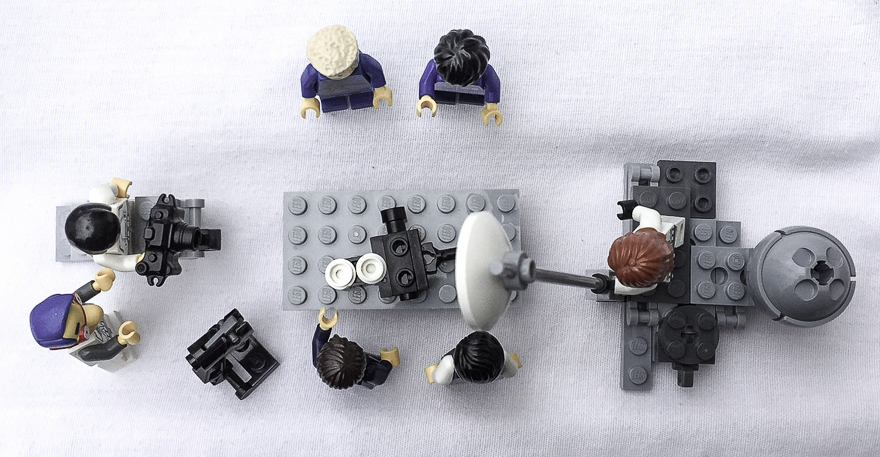
Film Anatomy. Location Scouting.
Last week was unseasonably warm and beautiful, and we went to scout one of our top locations. It was only 50 miles from my place in Brooklyn, but with New York’s traffic it took over 2 hours to get there. As a rule of thumb, when scheduling our shoots, we DOUBLE the estimated travel time by Google Maps. The worst scenario is arriving early, which often leads to a shorter than expected day or having a bit more time to set up, neither too bad if you ask me.
For our short film we essentially need three locations, all interiors. Why? Well, because we’ll be shooting in New York the middle of January so the chances that the weather will be as nice as last week are rather slim.
The house we scouted is almost perfect. It provides two of the three locations we are looking for, and we might be able to fake the third one through some movie magic. An added bonus is that the basement is full of old furniture and appliances that we could use as props. There’s a B&B nearby which would be perfect to house the crew, and there are a few good restaurants in the area. For us, good food is a top priority on any video production. A well fed crew will always work better, and I truly believe that a happy people make better products.
I’ve been getting some interesting emails/questions regarding this project and “how much do you plan in advance” is one of them, so the specific answer will be our very next post. Stay tuned!
FOLLOW US
LinkedIn – Our Serious Resume
Vimeo – Our Video Portfolio in collaboration with The Digital Distillery, Inc
Twitter – Our Daily Updates
Facebook – A mix of News and Upcoming Events
PhotoShelter – Our Photo Portfolio
Video
Film Anatomy. The cover image.
Since the plan for “Film Anatomy” is to be a series of articles, besides the title we thought we should have a strong image that holds the articles together.
I spent a lot of time browsing my +100k Lightroom Catalog and found a few interesting options, but wasn’t completely happy. I woke up in the middle of the night (literally at 4:13am) with a great idea; I should ask Juan Jose, my 8-year old nephew, who happens to be a Master Lego builder, to design a film set mimicking an operating room.
Needless to say, he was SUPER excited with the assignment. As he was building, we chatted online and together tweaked the pieces until he built the perfect film set, and image, for the series.
What do you think? Feel free to share your thoughts with us on Twitter or Facebook.
And the final version:
Here’s our set designer extraordinaire. He’s SO cool!
FOLLOW US
LinkedIn – Our Serious Resume
Vimeo – Our Video Portfolio in collaboration with The Digital Distillery, Inc
Twitter – Our Daily Updates
Facebook – A mix of News and Upcoming Events
PhotoShelter – Our Photo Portfolio
Video
Film Anatomy. Post 0001.
And we are on!
Matt Stanton and I have been bouncing around several concepts for a short film for a long time. Sadly, with our hectic travel and shooting schedules these personal projects usually find their way to the back burner.
Today we met in East Williamsburg, at a cool studio where he’s been working on another awesome project (more on that later). The list of topics we needed to iron out was extremely long, but right away things fell in place. After just a few hours of very productive conversations, yummy tacos for lunch, and several phone calls, we settled on a strong concept, a potential location and solid timeframe for the project.
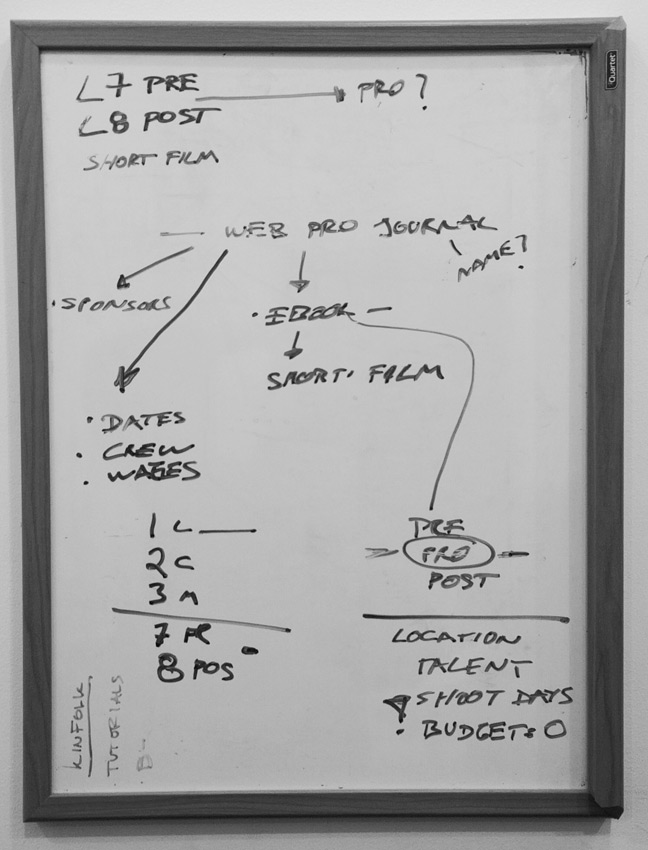
The whole project in a nutshell. Very clear, right?
We both will have a pretty busy beginning of the year, so one of the conditions is that we must be extremely efficient. To spice things up, we’ll be documenting the complete pre-production and post-production steps and compile them as two new Lynda.com courses.
Inspired by Robert Rodriguez and his book “Rebel Without a Crew” and by Steven Soderbergh latest TV show on Cinemax “The Knick” we would like to write as often as possible and share our journey with you.
Anatomy is the study of the structure of living organisms, especially as revealed by dissection and the separation of parts. Since we are essentially dissecting the steps of making a short film, we’ll call this series “Film Anatomy.”
The very next step will be working on the script, finding the talent, recruiting a very small group of friends to give us a hand and determine how are we going to shoot it.
FOLLOW US
LinkedIn – Our Serious Resume
Vimeo – Our Video Portfolio in collaboration with The Digital Distillery, Inc
Twitter – Our Daily Updates
Facebook – A mix of News and Upcoming Events
PhotoShelter – Our Photo Portfolio
Video
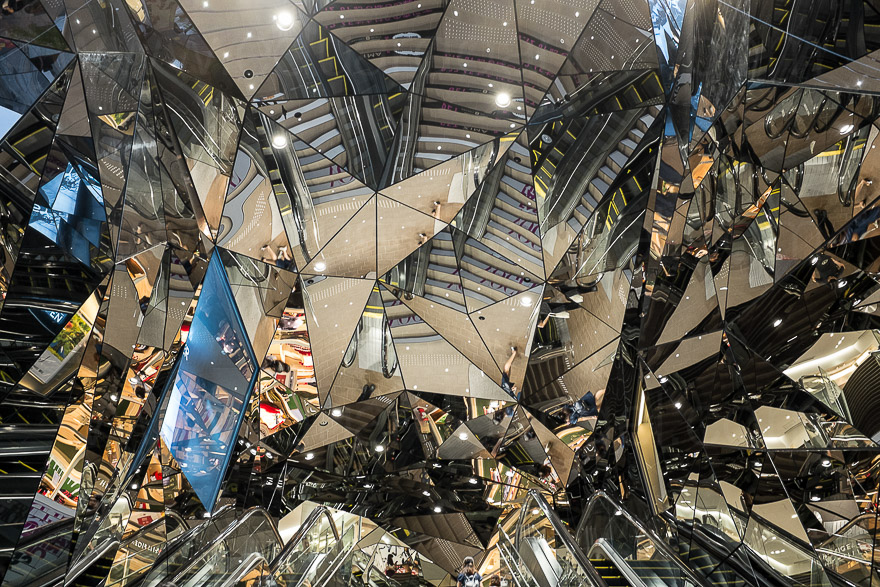
A filmmaker’s perspective on Japan.
Back in 2011 I made the best decision of my life: to get engaged. Wanting to “pop the question” at an unforgettable location, I asked my wife, then girlfriend, to write down her top five destinations that she had not yet visited. Coincidentally, and even though we both have traveled extensively, her first pick matched mine: Japan. The decision was made, air tickets were purchased, and hotels booked, but the timing was off. Just a few days before our departure, and with the ring well hidden in my camera bag, the Tohoku earthquake hit Japan. It was the fourth most powerful earthquake in the world since modern record keeping began in 1900, and the most powerful earthquake ever recorded in Japan.
A few weeks ago we FINALLY had the chance to visit this incredible country and culture, and on this article I’d like to share some of the most amazing things we learned and saw. Like some of my previous videos there’s a generous mix of stills, videos, soundscapes, music and narrations.
First things first
Most of us learned in school that Japan closed its borders in 1639 for more than 200 years, keeping only one seaport open for foreign trade exclusively with Dutch and Chinese sailors. A lot has changed, of course, and the country is currently the world’s third largest economy after the United States and China. This is truly a miracle for a nation that consists of more than 6,800 islands, has a population of 127 million people, and is smaller than the states of Montana or California.
As a little kid I spent countless hours poring over my grandparents National Geographic magazines. I dreamt about far and exotic places like “Antofagasta,” which I related to cannibals, “Ushuaia,” which to me was a synonym for the end of the world, “Oaxaca,” which I imagined full of little skulls everywhere, “Marrakesh,” with stunning belly dancers and crazy sword-fighting warriors, and “Kyoto,” elegant, peaceful, and extremely expensive. I loved the sound of each place.
Now, a “few” years later, I’ve had the privilege to visit all of these magical places and work in well over 700 cities in 50 countries, covering 40% of the world (according to Tripadvisor). Compared to my childhood pipe dreams, some countries have been much more interesting (Hong Kong and Thailand), and a few hugely disappointing (Russia and Vietnam top that list). There are no cannibals in Antofagasta, you can see little skulls in Oaxaca for “Dia de los Muertos,” and Ushuaia can’t be described in words. But Japan, in fact, so far, has been the one experience to closest match my dreams.
A World of Contrasts
If I had to define the country in a single word it would be contrast. Not necessarily as in the wide social and economic disparities one sees in India, China, or South America, but in the everyday culture itself; super-modern buildings next to architectural crimes, decadent meals followed by inedible dishes, massive pedestrian crossings and jam-packed subway cars followed by serene gardens, and very polite and quiet people during the daytime that get insanely wild and loud after dusk.
Random Fun Facts
Coming from New York, it always strikes me how clean and quiet other large cities are in comparison. Even Los Angeles and Houston seem muted in comparison. In that regard, Tokyo, the most populated metropolitan area in the world, is impossibly silent. And spotless. And huge. For example, Tokyo doesn’t have an actual downtown, but 23 of them, some with a daytime population seven times higher than their nighttime population.
Having been born in Colombia and experiencing first hand the country’s well documented violence during the 90s, it is hard to grasp how Japan, with the tenth largest population in the world can have the second lowest homicide rate, with only TWO gun-related homicides per year, and a conviction rate close to 99%. My brain can’t even process that information.
There are many fascinating things about Japan, from the expected, like magnificent temples, pristine gardens, and stunning package and lighting design, to the highly unexpected like the super-salty cuisine, and the lack of English speaking people and information in English even in popular tourist areas. Regarding tourism, we based most of our itineraries on Frommer’s and Fodor’s guides, which proved to be excellent sources of information.
We also tried to understand why there are virtually no public trash cans, but no garbage on the streets, millions of people everywhere, but no benches, and restaurants with vending machines, but no napkins. I’m still looking for those answers. Please hit me on Twitter if you have a good guess. And, speaking of Japanese vending machines, one can use any of the 5.5 million to buy beer, wine, canned coffee, cigarettes, food, comic books, toilet paper and even “adult literature and pleasure products.”
To widen our Japanese experience, we stayed at a high-end hotel in Tokyo, and at a Ryokan in Kyoto. The Ryokan, a traditional Japanese inn with tatami floors, paper blinds, a low table for tea and super tiny pillows, provided a unique, but not very comfortable, experience. As an added bonus we located a Ryokan that offered a private Onsen, or spring bath, that was masterfully built with exquisite wood, and harvested the local volcanic waters. Of course, Japan being Japan, even this relaxing moment had many strict rules to be followed in precise order before even touching the water. Overall it was an interesting experience, especially after walking 30,000 steps each day (according to my wife’s pretty handy Fitbit).
One early morning we got the rare opportunity to attend sumo training. As architecture buffs we used some rainy afternoons to visit buildings and stores by our favorite Japanese designers. We tried hard to cover as much of the Japanese culinary spectrum as possible, from quick lunches at shopping centers’ basements, vending machines, and food trucks, and dinning at traditional Izakayas where we tried delicious Yakitori and horse sashimi.
We obviously “had” to fit in a few Michelin-rated restaurants as the respected “foodies” publication has awarded Tokyo the most stars of any city in the world. More than the food itself, the service, presentation, and attention to detail are what truly offers a remarkable experience.
More Random Facts
Japan imports 85% of Jamaica’s annual coffee production, but the fancy coffees we tried were consistently inconsistent. I might get shot for saying this, but the $1 coffee at 7-Eleven was MUCH better than most of the $8 fancy brews we tried. And I’m Colombian, I do know my coffee.
Japan is also the world’s top importer of reggae music and has the largest proportion of jazz fans in the world. We treated ourselves with a jazz concert (and grossly overpriced drinks) at the Park Hyatt‘s bar, from “Lost in Translation” fame. The city views from the fancy bar are great, especially at nighttime, but you get pretty much the same view for free only two blocks away, from Tokyo’s Metropolitan Government Building, where you can also get a very filling lunch for about six dollars.
Gulping down your drink and slurping is NOT considered bad manners (mom, are you reading this?), but somehow eating or drinking while walking down a street is considered very rude and nobody does it. The Zen proverb “When walking, walk. When eating, eat” is silently but effectively enforced all the time, and everywhere. One day we had to go back to our hotel, just a few blocks away, to finish our Bento box lunch.
We did enjoy bowing on meeting someone, but sitting on the floor with your hands in your lap and your legs tucked under you, not so much. Perhaps because I’m less flexible than a tree. When wearing my first kimono I created a small “fashion emergency” with the Ryokan’s owner, as one should always wear the left side over the right side. The opposite of this is only observed at funerals. Something similar happens with chopsticks; do not point them at other people, never wave them in the air or stick them upright in the rice, since they’ll look like sticks of incense at a funeral. How are you supposed to know all this?
Cash is definitely king, and many ATMs in Japan do not accept international debit cards, with the wonderful exception of the ATMs found at the 10,000 7-Eleven stores. Coins are required for buses, trams, and lockers. We had read that Internet access was horrible, but I have to disagree. Both our hotels, many subway stations and bus stops provided free Internet access. If all you need is checking your map or access something on Dropbox you should be fine. If you are planning to stream movies or video games, stay home.
Packing Tips
In terms of packing, we broke a new personal record for this trip. We were able to fit everything into ONE suitcase. In case all the women reading this article are wondering, yes, my wife wasn’t too happy at first, but she came to appreciate my logic while navigating major transport hubs like Shinjuku, which serves 4 million passengers a day, and holds the title as the world’s busiest station.
In addition to the single suitcase, my wife had a very light daypack, and I brought my favorite photo backpack.
Regarding photo and video equipment, I’ve been traveling extremely light and small. This time I brought two Panasonic GH4s (Amazon • B&H), two Panasonic Lumix lenses (Amazon • B&H) , and a Fuji X100S (Amazon • B&H). This is pretty much the same gear I’ve used on assignments in Europe (article on Sigma’s website), Turkey, and commercials like this.
Something I failed to pack (and struggled to find in Tokyo) was a “3-Prong to 2-Prong Adapter.” Considering one can get two for $6 on Amazon, it was very painful to waste precious time walking from store to store and trying to explain what a “3 prong” means with body language and childish drawings. To connect multiple devices I ALWAYS bring two essential items: a mini power strip to charge phones, batteries, and laptops using a single outlet, and a compact USB hub, to connect multiple hard drives to my laptop. This year I’ve been using these small and cheap external hard drives on my travels, and so far they’ve worked perfectly. If you are interested in seeing what’s inside my camera bag, I wrote an article with “The Essential 41 Items” for photography and video assignments.
The Final Product – The Video
Shooting stills, and video, and recording soundscapes while traveling alone is hard, I’m not gonna lie. Doing all that with your (extremely patient) wife is even harder, but totally worth it.
Obviously it’s impossible to understand a country, city, or even a neighborhood in just a couple of weeks. I’ve spent nine years in New York and every weekend we find something new to do, see, or eat. But, we only have one chance to get a first impression, and I believe those first reactions are great ways to identify interesting trends and cultural differences.
The video below has tons of additional information about Japan in general and our travel adventures in particular. If you like traveling—and eating delicious food—I’m sure you will enjoy it, and if you do, please SHARE the love!
If you are looking to expand your creative options by adding video into your skills set or enhance your craft, don’t miss these courses on Lynda.com.
Video
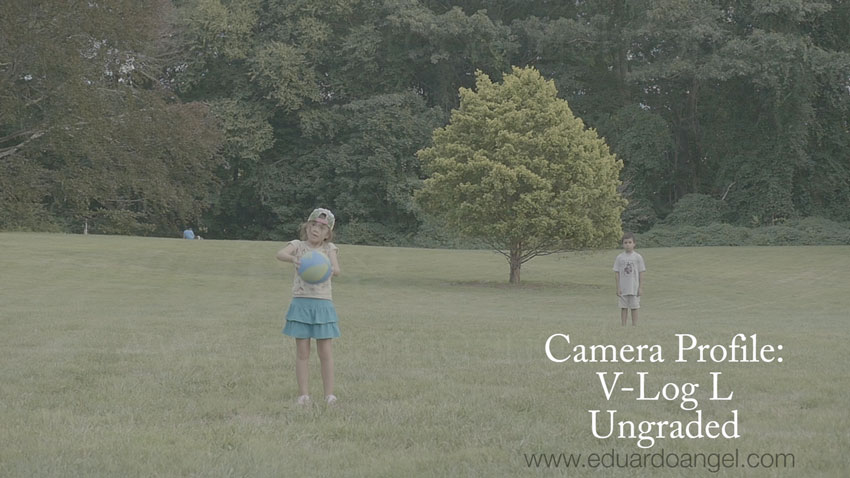
The Panasonic GH4 V-Log L. Graded and Ungraded Samples.
A few tests comparing the Panasonic GH4’s default camera profiles with the brand new V-Log L.
The (very quick) grading was done on Premiere Pro CC 2015 and the super awesome Lumetri Color Engine.

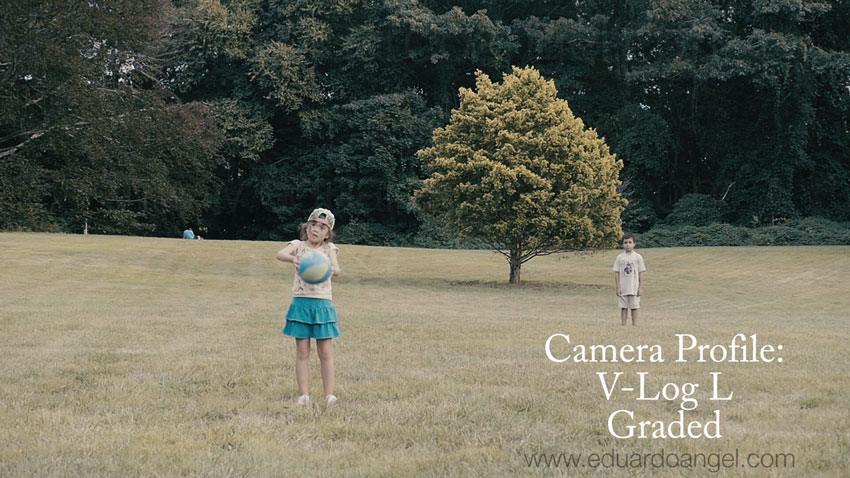
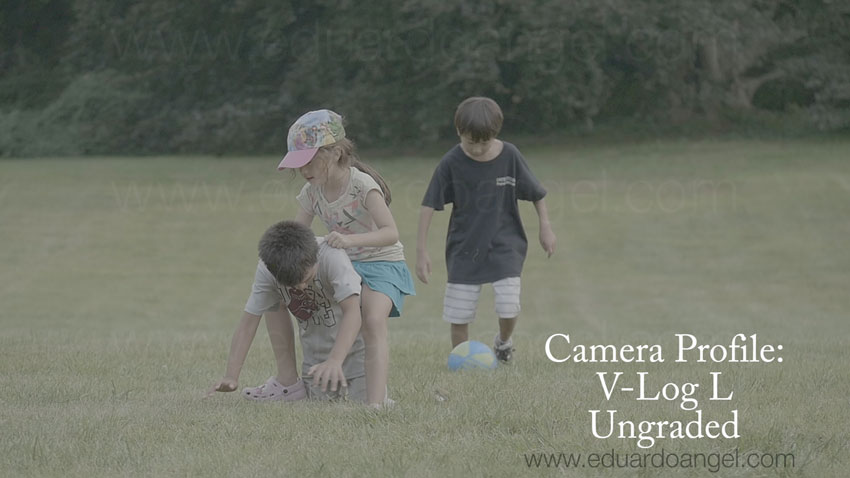
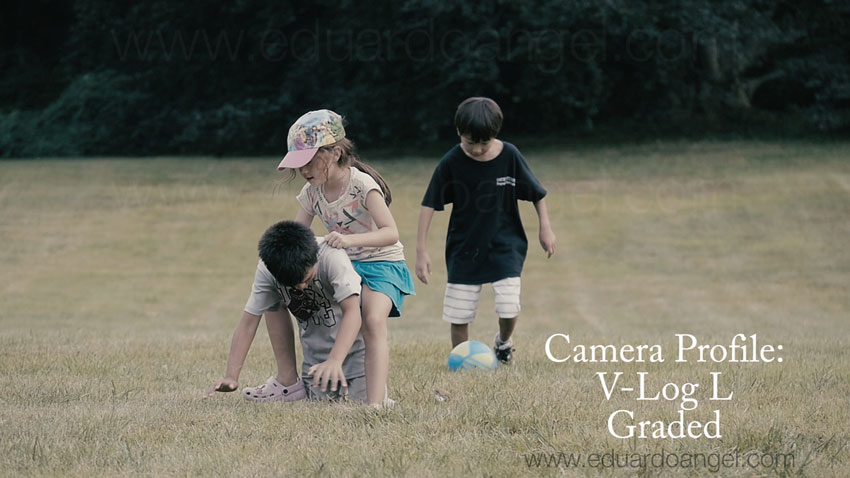
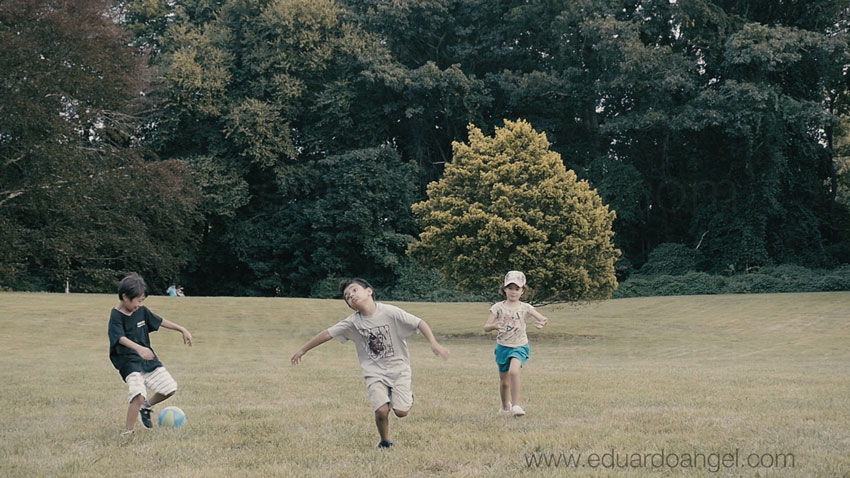
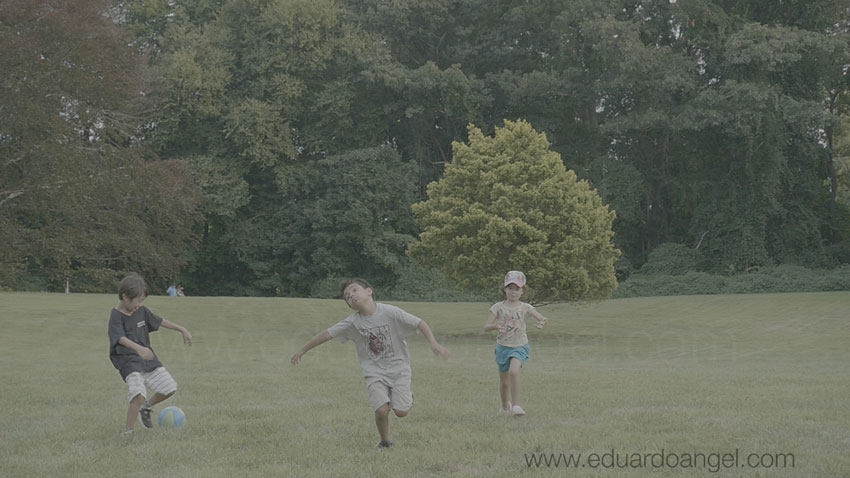
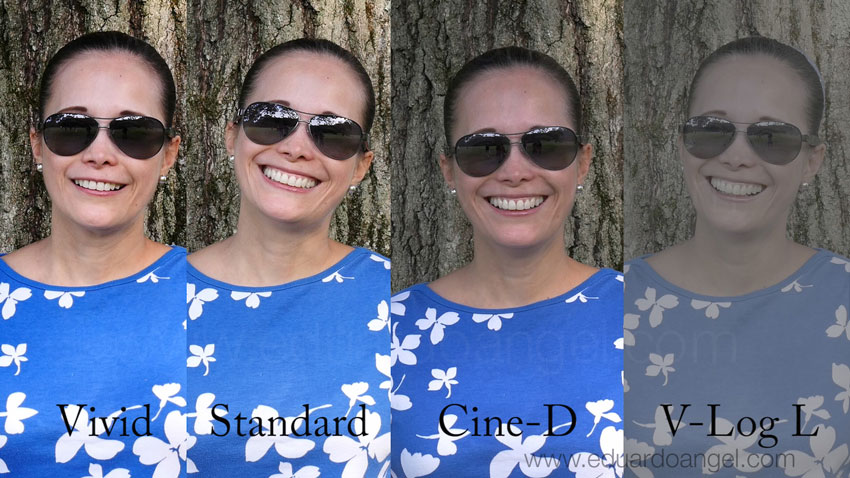
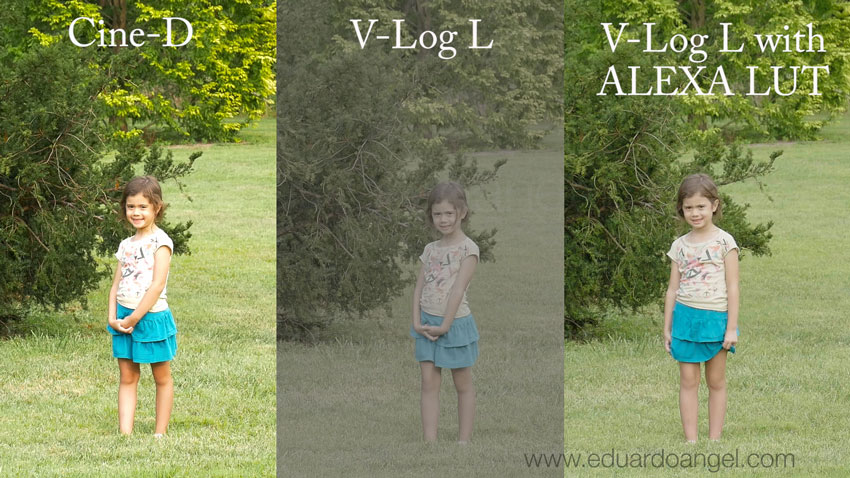
Why is V-Log important? Why should we care about camera profiles and external recorders? Read this and watch this to learn more.
Installing V-Log L on your GH4 is far from intuitive and user friendly, but we’ve got you covered. A complete step-by-step tutorial is available for free right here.
The GH4 firmware update (version 2.3) including V-Log L will cost $100, and it will be available in 2 weeks. You can pre-order it now right here.
Related Posts
- Hybrid Assignments Equipment List: The Essential 41 Items.
- The eternal quest for “the best” digital camera.
- Shooting Anamorphic and V-Log with Panasonic’s GH4. Valuable Lessons.
- 7 things we discovered after shooting 4K with the GH4. You won’t like #4.
- The Pros and Cons of external recorders: Atomos Shogun.
- 4K video under $2K. Meet the Panasonic Lumix GH4.
- I Just Got a Panasonic GH4 – Now What? Hard Drives.
- I Just Got a Panasonic GH4 – Now What? Batteries.
- I Just Got a Panasonic GH4 – Now What? Memory Cards.
Video
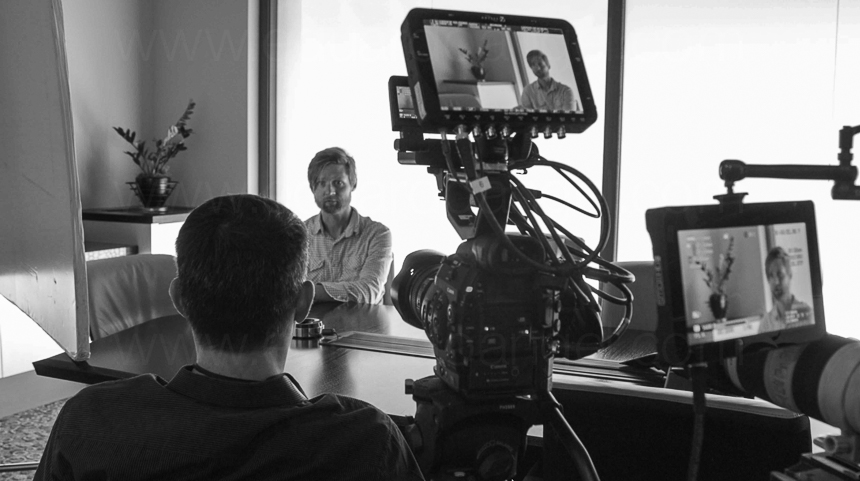
Video for Photographers: Filmmaking Essentials.
As we have covered in numerous articles before, still photographers can reasonably quickly learn the most essential filmmaking techniques and greatly expand their creative options and the range of professional services.
In our latest Lynda.com course we help bridge the gap between still pictures and moving images, by explaining and showing, what it takes to transition from one craft to the other. We tried our best to include the most essential video productions techniques; from framing and lighting for continuous shots to directing the viewer’s attention and incorporating camera movement and sound, and even offering a brief overview of our post-production workflows.
This course, our fifth on Lynda.com is the “theory course.” Our goal is to explain why certain techniques, steps or tools are important. Other topics include:
• Understanding the 5 Cs of cinematography
• Choosing the right camera
• Framing for continuous shots
• Lighting techniques
• Using camera movement to enhance your story
• Leading the senses with sound
• Working with different microphones
• Editing and post-production considerations
A follow-up “practical” course (available in a few weeks) will cover hands-on composition, camera movement, sound and lighting techniques, among other useful tips like packing and working with very small budgets and crews.
Enjoy!
Video

Shooting 4K Anamorphic and V-Log with Panasonic’s GH4. Ten Valuable Lessons.
UPDATED: I just added two video tutorials: one comparing “Panasonic’s V-Log L vs. Cinelike D” and the second one “Conforming 4K Anamorphic Footage in Adobe Premiere Pro.”
Anamorphic is enjoying a huge comeback. The reasons to go this route vary from project to project, but generally it’s the desire to achieve a different look and use as many pixels from the sensors as possible. Panasonic’s Firmware Update v.2.2 (available here) enables an Anamorphic (4:3) Mode capable of recording video in 3328 x 2496 pixel (equivalent to approx. 8.3-megapixel) resolution at a frame rate of either 23.98, 24, 25 or 29.97 fps. With an anamorphic lens such as 2x Lomo lenses (see below) we now can capture and un-squeeze a 3356×2496 image in post-production. To make things even better, 4:2:2 / 10 bit HDMI output is also available.
Just like in 2013 when we had the opportunity to field test a GH3 in the Middle East and last year when we shot with one of only three prototypes world-wide of the GH4, for the past couple of weeks I had the privilege to work with director Davis Northern, DP and tech wizard Sean Davis and many other talented people on one of the very first GH4 Anamorphic AND V-Log L projects, shot exclusively for Panasonic North America and produced by The Digital Distillery.
Panasonic 4K Anamorphic and V-Log L – Official Video from The Digital Distillery Inc. on Vimeo.
The project was exciting and very challenging, as working with hardware prototypes and beta versions of software or firmware always is. We had a lot of moving pieces and an extremely tight deadline, but I’m proud of the final results and very satisfied with the lessons learned. This article covers some of the most significant ones, and it is written from my very own personal perspective. As always, I try my best to be as objective and brand agnostic as possible. The lessons aren’t in any specific order and some links will take you to articles with additional information . Please consider using our links to help support our very time consuming articles and tutorials.
Ready? Let’s go!
1. Shooting Anamorphic
It can definitely be achieved by a very small crew on a small budget. We mostly shot with a crew of three, with very limited gear and time. I’ve always assumed you needed a 2-ton truck and a crew of 30 to pull this off. Clearly, this was not the case for us.
2. Lenses
In terms of lenses, we opted to keep a “low profile” while keeping our options open. In other words, we rented a set of vintage anamorphic Lomo lenses (35, 50, and 75mm) and tested an SLR Magic as well as a Letus AnamorphX 1.8X Pro Adapter and a Veydra Mini Prime.
A. Lomo:
The lenses are huge and heavy. Lomo 50mm + 75mm with case = 25lbs. Lomo 35mm with case = 35lbs with each case weighting about 30lbs. Not ideal for the “guerilla” approach we needed for this project. They definitely have a unique look, but are very hard to focus, especially when using a very flat profile. We rented the set for $500/day or about $1,700 for a week including tax. Not cheap by any means but definitely worth the investment in terms of time and quality.
If I were to shoot this project again (or on upcoming anamorphic projects) I probably would test the Cooke Anamorphic/i Lenses (25, 32, 40, 50, 75, 100, and 135mm with a 2x squeeze). Unfortunately these lenses cost about $30,000 each, and the rental rate is about $500 per lens, per day.
B. SLR Magic:
We had access to a very nice selection of Panasonic glass that we wanted to use with an SLR Magic adapter. The first challenge was that the front diameter on all the lenses has to be below 62mm in order to use the step down rings. The second limitation was (for the Panasonic lenses) that anything wider than 28mm would vignette. We could have used the Panasonic 12-35mm lens, at 28mm or longer (kind of pointless), but for some odd reason with the SLR Magic adapter it vignetted all the way even at 35mm. The Panasonic 35-100mm didn’t vignette at 35mm. Go figure. The next usable lens on our Panasonic arsenal was the beautiful 42.5mm Noticron f/1.2, but we needed a step DOWN ring (from 67mm to 62mm) that wasn’t included with the kit. The last option was the Panasonic 35-100mm f/2.8 lens, which worked well but focusing was a MAJOR issue (not Panasonic’s fault). I found the SLR Magic system very finicky and unreliable and unfortunately I can’t recommend using it.
C. Letus Anamorphx:
The Letus Adapter worked much better than SLR Magic but it was also cumbersome. A matte box is pretty much required and there was an issue with one of our widest lenses. The lesson here is, if you are shooting anamorphic, use the real thing.
3. Storage
There’s some heavy math involved when shooting Anamorphic. An anamorphic lens produces roughly a 2X horizontal squeeze of the image onto film. Traditional anamorphic lenses were designed to work on a 4:3 standard. The anamorphic footage captured with the GH4 on the Atomos Shogun is 3840×2160, so not technically 4K but pretty close. Shooting internally (to an SD card) the footage is 3328×2496, so greater vertical resolution than the 4K standard, but not full 4K horizontal resolution. To keep things in perspective, the 4K footage out of the GH4 4096×2160.
As you would expect, the files are huge. Shooting ProRes 422 you need about 4GB per minute of footage. Two cameras: 8GB, after only one backup you are at 16GB per minute. So somewhere around 20GB per minute is a pretty safe storage estimate for a two-camera setup. As always, we trusted all our very valuable assets to G-Tech Hard Drives.
Regarding Solid State Drives, Atomos has a great chart with all the supported drives for the Shogun and other devices. Make sure you triple check the chart before investing in one.
One SECOND of footage takes about 50MB so even if you are shooting into seemingly endless Solid State Drives, being smart about when to start rolling and when to stop can save a lot of storage.
4. HDMI
As we were shooting, Atomos was literally finishing writing the Shogun’s firmware update (available in May or June as a free download) will enable a number of awesome features:
- Anamorphic de-squeeze for Panasonic GH4 and standard lenses
- RAW recording to ProRes, DNxHR and Cinema DNG for compatible RAW formats
- Expanded RAW compatibility to include Sony FS series, Canon, Arri and AJA
- 3D LUTs on HDMI/SDI output
- Cinema 4K DCI support
- Uncompressed V210 support
- Genlock
We had to use a Small HD Pro7 (to de-squeeze) and the Shogun (to record in 4K). The setup seems pretty obvious after a lot of trials but it wasn’t at first. Here’s the executive summary that will hopefully save you some time and stress:
1. Micro HDMI to Standard HDMI cable from the GH4’s HDMI OUT to the Atomos Shogun HDMI IN
2. Standard HDMI to Standard HDMI cable from the Atomos Shogun HDMI OUT to the Small HD HDMI IN
3. In the Shogun, the 4K downconvert option should be OFF while connecting the Small HD and turned ON when everything is properly connected.
Our Small HD had a nasty tendency to constantly lose signal for no apparent reason, so step #3 had to be repeated many times throughout each shoot.
5. Premiere Pro CC 2014 Workflow
To be totally honest, I was shocked by how easy it was to conform the footage in post. Here’s what you need to do:
1. Import the footage the way you normally do.
2. Select the anamorphic clips.
3. Go to clip > Modify > Interpret Footage
4. Under “Pixel Aspect Ratio” select “Conform To” and “Anamorphic 2:1 (2.0).
5. Create a “new sequence from clip” and start cutting.
6. Done and done. Wow!
Here are some screen grabs from the camera’s LCD:
6. Focus
Focus is super, extra, hyper critical, especially when shooting with a very flat profile like the one we used. Unfortunately we couldn’t trust the SmallHD and had to rely 100% on the Shogun at a 1:2 zoom.
7. Accessories
• A sun hood for your external monitor is absolutely essential (if given the option get the black version).
• Obviously you will need lens adapters if you are planning to use the SLR Magic or Letus AnamorphX options.
• Make sure you get plenty of batteries, The small battery that comes with the Shogun lasts about 30 min only and we got about one hour of recording time with TWO Canon batteries on the Small HD. Instead of buying tons of batteries I’m a big fan of renting them (more here). The same goes for additional Solid State Drives.
8. Bonus lessons:
• Shooting anamorphic takes a lot practice and fine-tuning. I’d recommend scheduling at least a full day to test all the gear before a shoot.
• If we keep a small footprint and move fast, we can get a lot done.
• The “shoot without lens” on the GH4 must be turned on in order to work with the Anamorphic lenses.
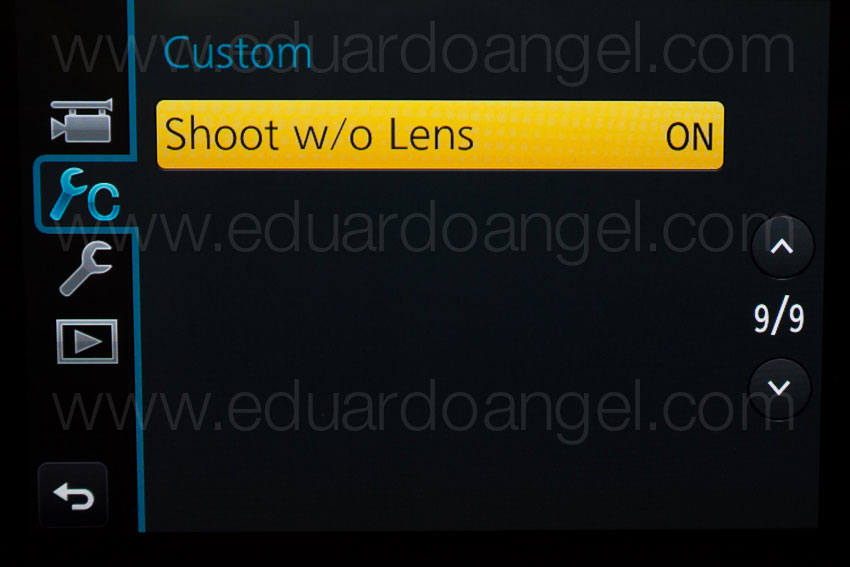
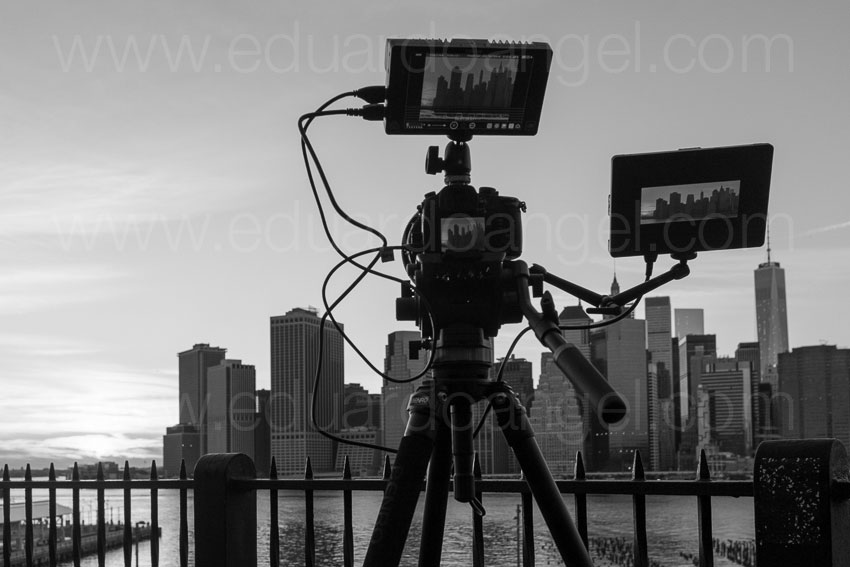
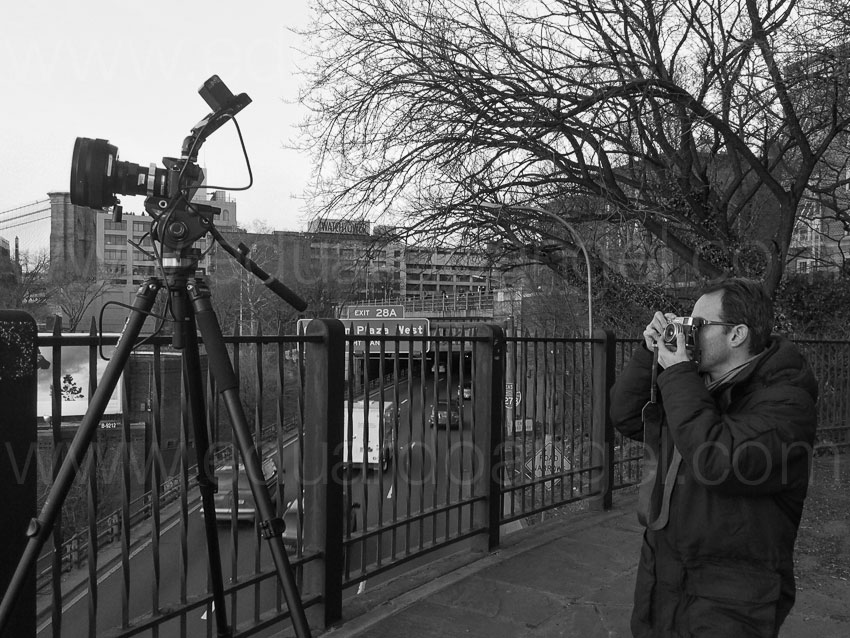
And…..here are two more videos (not anamorphic) shot with the Panasonic GH4. Check them out and let me know if you have any questions or comments via Twitter (@EA_Photo)
Video
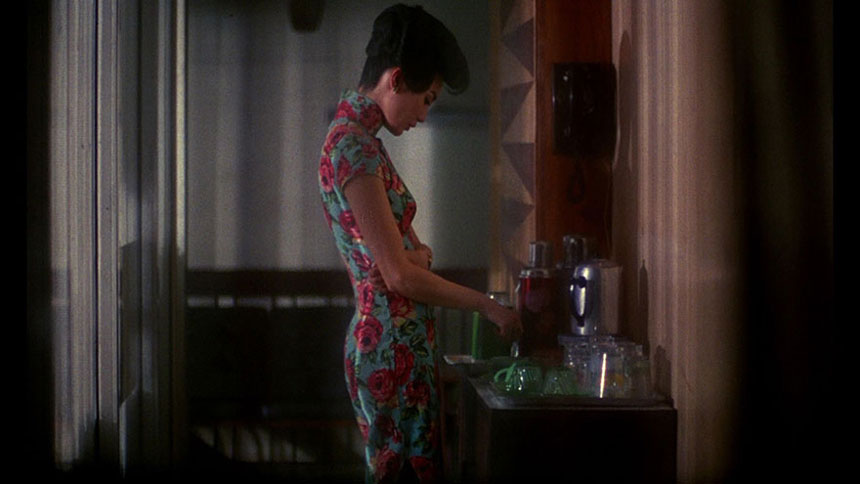
In the Mood for Love Redux.
I love Asian cinema and I feel a strong and special attraction and respect for Wong Kar-Wai’s work, especially his earlier collaborations with Chris Doyle. Wong Kar-Wai is known for his “romantic and stylish films that explore—in saturated, cinematic scenes—themes of love, longing, and the burden of memory.” In terms of photographing urban landscapes, especially at night, I can’t think of a better cinematographer than Doyle.
For the past couple of months I’ve been revisiting his movies, his video interviews, and reading as much as possible about his production methods and unconventional approaches to filmmaking.
Check out the following books to learn more about this amazing director:
“The Sensuous Cinema of Wong Kar-Wai” by Gary Bettinson
“Wong Kar-Wai: Auteur of Time” by Stephen Teo
“Wong Kar-Wai” by Peter Brunette
The long-awaited and complete Kar-Wai retrospective with more than 250 photographs and film stills will be released in September but it can be can pre-ordered now.
In order to better understand his compositional and directorial choices I imported “In the Mood for Love” into Premiere Pro and selected my favorite scenes, including those critical to the story, those that are brilliantly original, and scenes that are flawlessly executed or contain a number of technical achievements (like the impeccable use of dolly moves). I then re-cut all my favorite scenes from the original 94 minutes into a single 18-minute clip (below), always trying to keep the integrity of the story. My goal here is to help someone who hasn’t seen the movie grasp its (very convoluted) story in one 18-minute clip.
If you haven’t see the movie, I highly recommend it, and I’d love to hear from you once you see it.
If you have seen the movie, did I leave any key cinematic moments out?
Video
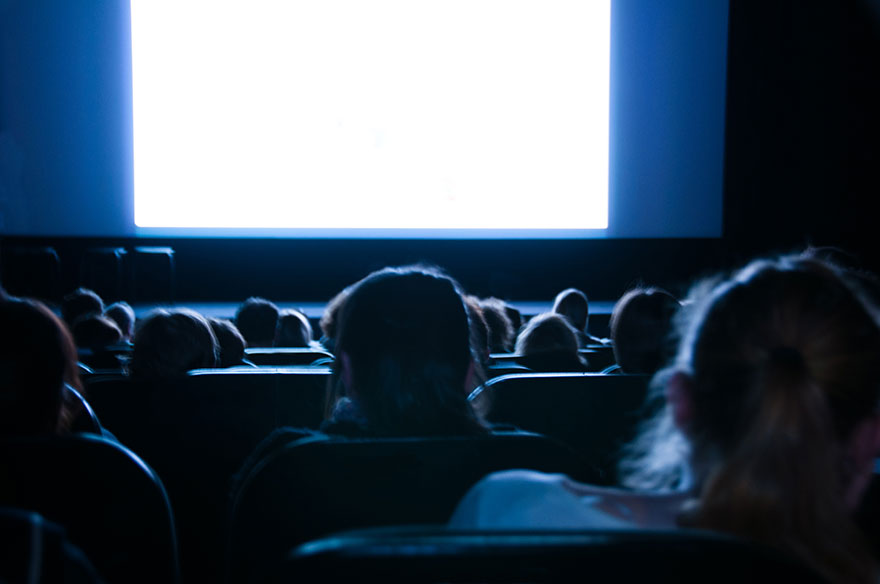
The eternal quest for “the best” digital camera.
I often receive emails asking for advice about “the best lens” or “the best camera” or even “the best laptop.” I believe it is simply impossible to determine a “best” of anything as there are too many random factors such as experience, budget, expected lifetime of the product, intended use, availability of accessories (like lenses or batteries), and even tech support in certain areas. That’s not even considering more subjective factors like personal preference, sense of loyalty to certain brands (or dislike for others), and even the size or weight of such tools. Interestingly, we are currently experiencing one of those “what’s the best” dilemmas ourselves, and not a minor one by any means; we are reconsidering our standard camera package for 2015–16.
Renting vs. Owning:
For many reasons, I believe renting is one of the best options for most people. When all you have is a hammer, the solution to every problem requires a hammer. That’s a very limiting factor to your creativity and a disservice to clients. Sometimes you can get the job done with a Swiss Army Knife like MacGyver, sometimes you need a nice toolbox, and sometimes the best approach is to have a professional plumber do the job.
Another huge reason to rent is to keep overhead as low as possible. Unless you are shooting several times a week with the same system, having something that is guaranteed to quickly decrease in value simply collecting dust in a drawer isn’t the best financial move. Unfortunately, renting is not an easy or affordable option in many small cities.
Lenses:
In terms of lenses I own a nice selection (from 8mm all the way to 200mm) of mostly Canon L glass, some Sigma ART lenses (with Canon mounts), as well as a couple of Panasonic Lumix lenses. I also have one Metabones Speedbooster adapter (Canon EOS to MFT).
Accessories:
We own a set of LED lights and basic accessories that I use frequently and will last a long time like monopods, tripods and a few camera movement tools. I also own a complete audio kit simply because we use it quite often. Audio tools tend to be fragile, and we have a very specific preference for brands and settings. Ultimately, because sound is such an important element of any video project, completely trusting it gives me an additional peace of mind. But I digress. The point of this article is not audio equipment, but cameras.
Cameras:
We own a Panasonic Lumix GH4 bodies and still have a couple of GH3 bodies. They have served me extremely well on hybrid assignments. I am very happy with the quality of the footage and always having the option to shoot 4K, HD, built-in slow-motion, and time lapses with the same camera and media. For video-only productions we usually rent Canon C100 Mark II or C300 Mark II bodies, which I also like very much.
The Challenge:
Several upcoming projects will require a more “complete” camera package, and we seem to have enough projects in the pipeline that it might make sense to own instead of rent, not only financially, but to save time picking up/returning and to be certain that the tool we plan on having in pre-production is the same tool we use on location weeks or months later. So, what’s the best cinema camera (for us) right now?
Technically speaking, we will need a main camera (Cam A) that ideally shoots 4K and has all the standard bells and whistles like XLR ports, HDMI, a good viewfinder, variable frame rates, peaking, ND filters, etc. Great low-light performance is key. For several projects we’ll need to shoot high-quality behind the scenes footage, so we will need a second camera (Cam B) that is either the same or very close to the quality of Cam A.
To make the riddle even more interesting, some of these projects will be “hybrid” projects that require on-location, mostly unplanned, and available light shooting with a very small crew (two or three people max). So the gear package needs to deliver great stills, great footage, and be easily operated by one person, which means light and compact.
Possible Solutions:
I will only discuss the main components of the package, so additional batteries, cables, memory cards won’t be included in the total price.
1. Canon
The first and obvious move would be to buy a couple of Canon C100 Mark II bodies. We already know and like the system, and own the lenses, so there’s no need for adapters. Unfortunately the C100 Mark II does not offer 4K, it is good but not great in low-light performance, it is small but not super light or compact, and it does not shoot stills, so I’ll need to get a Canon EOS 5D Mark III or at the very least a Canon EOS 70D. I’ll get the cinema features I need on only one of the systems.
1x Canon C100 Mark II = $5,500 (Amazon • Adorama)
1x Canon EOS 70D = $900 (Amazon • Adorama)
Total = $6,400
2. Sony
The second option would be to get a Sony FS7 AND a Sony a7S as a B Cam (and also for stills and BTS). The first one seems to be the new cool kid on the block, with raving fans and over the top reviews. It seems portable enough for a cinema camera and matches most of our technical requirements (I still need to test the low-light performance). Its little sister, the a7S shares the same outstanding reviews, it is clearly number one in low-light performance and it can even capture 4K to an external recorder. The catch, and this is a big one, is the cost. The FS7 goes for $8,000 and the a7S goes for $2,500. In order to use my existing lenses I’ll need two Metabones Speedbooster adapters (Canon EOS to NEX) at $650 each, but I will not have AF capabilities when shooting stills, which is a major issue. Also, in order to fully use the a7S as the B Camera we probably would need an Atomos Shogun adding a lot to the budget.
1x Sony FS7 $8,000 (Amazon • Adorama)
1x Sony a7S $2,500 (Amazon • Adorama)
2x Metabones adapter (Canon EOS to NEX) $800 (Amazon • Adorama)
1x Atomos Shogun $2,000 (Amazon • Adorama)
Total = 13,300
3. Panasonic
A third, and more affordable option would be to get a second Panasonic Lumix GH4 body and keep them as A Cam and B Cam (4K, HD, and stills) and something like the Panasonic HC-X1000 as a C Cam for BTS. I am still missing the “standard bells and whistles” I mentioned above, and I still have to test the X1000’s performance under low-light. Getting the YAGH (“brick”) wouldn’t make much sense in terms of money, size, weight, and additional power sources.
1x Panasonic Lumix GH4 $1,500 (Amazon • Adorama)
1x Metabones Speedbooster adapter (Canon EOS to MFT) $600 (Adorama)
1x Panasonic HC-X1000 Camcorder $3,200 (Amazon • Adorama)
Total: $5,300
4. Blackmagic
We briefly considered Blackmagic systems but found too many cons to even add them here. Another topic for another day.
Conclusions:
Honestly, there aren’t any. Not yet, anyway. We are still trying to figure out what to do. The Panasonic Package (#3) is the cheapest and easiest as we would have a very small learning curve (with the HC-X-1000) but low-light performance remains to be seen (and it is good but not great on the GH4). The price is great but we would only have the cinema features we need in one of the three cameras.
The Canon Package (#1) is right in the middle, but we would lack 4K, slow motion, a codec over 50mb/s, and only one of the two cameras offers the bells and whistles we are looking for.
Sony (#2) seems to offer the best solution, but costs twice as much as Option #1 and $8,000 more than Option #3. We would lack autofocus for stills, only one camera will have the cinema features, and the FS7 could require a significant learning curve.
An alternative, suggested by an experienced filmmaker, would be to keep using our GH3 with the Panasonic lenses as our stills camera ($0), use the GH4 with our Metabones and Canon and Sigma glass as Camera B, and simply buy one Sony FS7 ($8,000) and a second Metabones (Canon EOS to NEX) adapter $400 for a total investment of $8,400. Altogether we would get AF for stills, 4K, slow-mo, no need for new lenses, but only OK low-light performance, and only ONE system with XLR ports, ND filters, etc. I am also seriously concerned with the additional time (and expense) in post to make everything look somewhat close.
Money and lenses are obviously very important considerations, but there are many other things that have to be factored into camera choices like post workflows (software and hardware), internal codecs, etc. Color science is something else we tend to overlook, and we shouldn’t, as certain camera choices will multiply the amount of time you need to spend in post to get them to look like what you’re used to.
So, clearly, there isn’t a “perfect” camera that will meet all our requirements. So the best approach is to consider what we have (budget, lenses, software, hardware, accessories, etc.) what we need, and what we are willing to sacrifice. So, what is “the best” camera package for us, giving our existing gear, ideal requirements and upcoming needs? Now I need YOUR help to figure this one out.
UPDATE 01: Since I wrote the first draft for this article I’ve been hearing highly reliable complains about the FS7 working with lens adapters and Canon lenses. That pretty much kills the Sony package option for us.
UPDATE 02: There are strong rumors that Panasonic will be announcing an updated version of the AG-AF100 at NAB, which apparently would include 4K. That could be a great solution for our full blown cinema camera.
UPDATE 03: Another strong rumor is that Canon will replace/update the 3-year old 5D Mark III with a 4K version. Kinda cool, but it still doesn’t solve our “bells and whistles” camera dilemma.
UPDATE 04: For the past 3-4 weeks I’ve been using the Atomos Shogun (Amazon • Adorama) and I must admit I’m VERY impressed. This gadget not only provides an exquisite 1920 x 1080 ultra sharp (and fairly accurate) image, but it’s main purpose is being a 4K (or HD) recorder via Solid State Drives. The best price/quality I’ve found are these 240GB Sandisk for $146 with a 10-YEAR warranty. Not bad at all.
Something I didn’t consider when getting the Shogun is that now I have XLR options, making the GH4 a much more powerful beast. The provided batteries only last about 30 minutes of recording time. I got this off-brand ultra cheap ($36) set of 2 batteries with chargers and so far they have performed perfectly. To keep in perspective, a single Sony battery costs $199….
UPDATE 05: The Varavon cage for the GH4/GH3 works perfectly with a Metabones Speedbooster. This set up and the Atomos Shogun are making me rethink my camera strategy. Now I can have a very comfortable grip, add a shotgun for run and gun or a monitor/recorder with XLR mics on sticks. Hmmmm this is getting REALLY interesting!
More to come.
Video
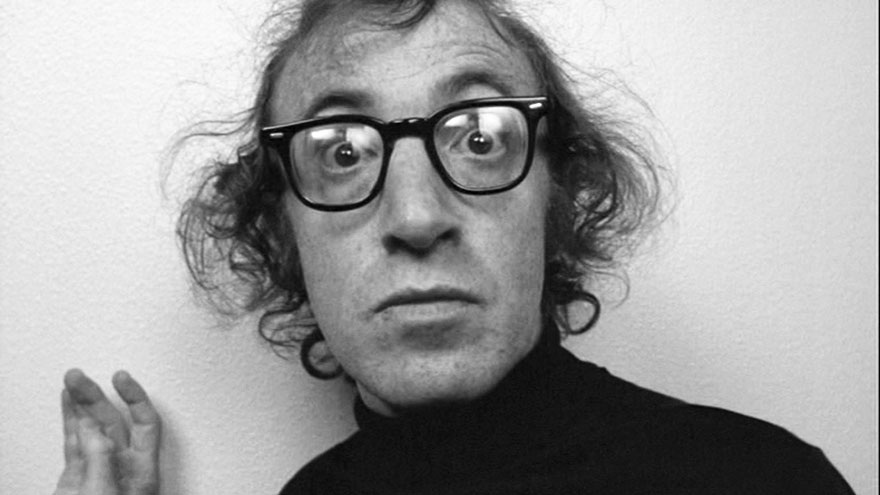
On Film Directors and Styles.
According to Woody Allen there are two kinds of film directors: “the ones who have it, and the ones who don’t.”
It is well-known that there are two other kinds of movie directors: the ones who write their own material, like Tarantino, and the ones who adapt, like Alfred Hitchcock or Steven Spielberg. The Coen brothers are crystal clear on this: “We are willing to write for other people, but we would not direct a script that has been written by somebody else.” To Scorsese “the script is the most important thing, but it is not everything. What matters is the visual interpretation of what you have on paper.”
John Boorman believes that “directing is really about writing, and all serious directors write.” But there are extremely serious directors who do not work with scripts, like Wong Kar-Wai. “I write as a director, not as a writer, so I write with images. I start with a lot of ideas but the story is never clear. I know what I don’t want, but I don’t know what I want. The shooting process is the way for me to find all the answers. Sometimes I find them on the set, sometimes during the editing, sometimes three months after the first screening.”
Martin Scorsese has, as usual, something interesting to say about the difference between being a director and a being filmmaker. According to him, a director is “someone who only interprets the script and transforms it from words into images.” A filmmaker is “someone who is able to turn his own or somebody else’s material and still manage to have a personal vision come through.”
From a more technical perspective, we have directors who arrive to the set knowing exactly what they are going to shoot, with how many cameras and which lenses (like the Coen Brothers) and there are others who arrive with simply an idea and then follow their gut instincts (like Woody Allen).
When it comes to directing styles there are also antagonistic approaches. Some directors watch the actors rehearse and then decide with their DP where the camera should be, and how many shots will be needed. Fellini is a prime example of this approach. Scorsese disagrees: “you need to know where you are going and you need to have it on paper.” But some directors do the exact opposite. They walk around the set, decide where the camera goes, where the action will take place, and then ask the actors to accommodate.
Wim Wenders used to spend “every evening painstakingly preparing the next day’s shoot, making detailed drawings mimicking storyboards.” After “Paris, Texas” he has taken the opposite approach, “finding the scene construction in the action, and arriving on set without any preconceived ideas about the shots, and only deciding where to place the camera after working with the actors.”
There are some filmmakers who prefer to edit “in the camera,” such as Clint Eastwood or Hitchcock. Others, such as David Fincher, have no problem shooting 50 takes of a single scene and then figuring it all out later in the editing room over the course of months or even years. Woody Allen’s take on this is “it’s a grave error to start shooting a film with a script that is weak or not ready and think, “I’ll fix it on the set or in the editing room.’”
I could probably add two additional kinds of directors: the ones who make films because they have something to say, and the ones who make movies to find out what they have to say, but that would be a whole different article!
Video
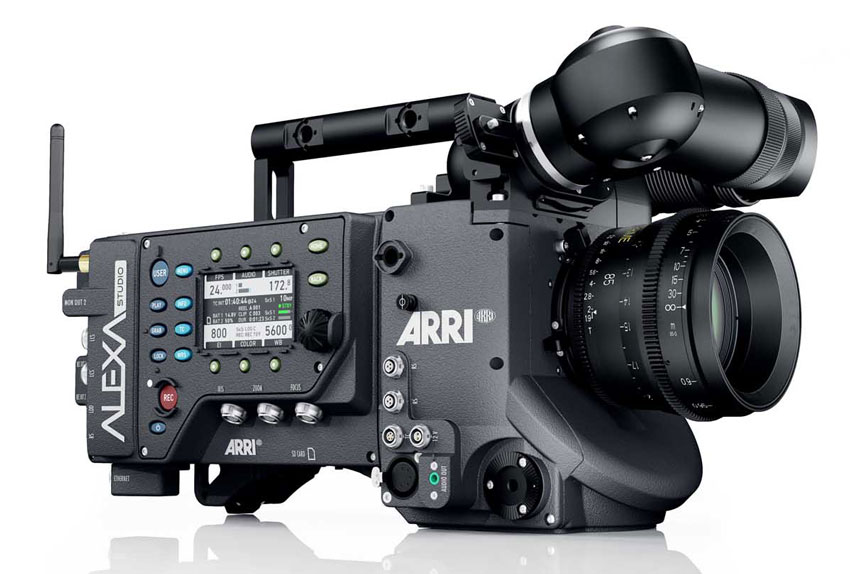
The most popular cameras at Sundance.
Indiewire published recently the list of cameras used by the filmmakers included in the 2015 Sundance Festival.
The article matched each camera with the film, which was awesome. But I was also curious to see a chart that showed more precisely how many cameras where used and how often. So, I dropped the list from Indiewire into Excel and created this chart.
A total of 23 cameras were used in 2014 to shoot 84 movies. In 2015 almost twice the amount of cameras (44) were used to shoot 97 movies. My guess in this discrepancy is that a) Not enough filmmakers in 2014 provided enough or complete information on their cameras or b) the filmmakers in 2015 felt the need to use different cameras on the same movie.
I also wanted to compare the cameras used at the 2014 Festival, so I also created this second chart, again using Indiewire as my sole resource. From the article, it is hard sometimes to tell exactly which camera was used. For example, one of the filmmakers said, “We used Super 35mm with some Red Epic, and a little super 16mm. There is also one Canon 5D shot in the picture.” Which Super 35? And obviously it had to be a Canon 5D Mark II or Mark III as the first version didn’t shoot video. In those cases I only added the Red Epic to the tally.
How can this information become useful? To me it’s simply curiosity, as I believe a great storyteller can be as effective with an iPhone as with any high-end $50K camera. Give ME an Alexa and a million dollars and I still wouldn’t be able to shoot a single frame better than Emmanuel “Chivo” Lubezki or Roger Deakins.
The camera is just a tool, but these charts could be used as a reference by film programs trying to determine where to spend their camera budgets this year. Or perhaps a film student wanting to work as a DIT or as an AC [insert link http://en.wikipedia.org/wiki/Film_crew ] can look at these charts and determine, “well, I better get REALLY comfortable with the Arri Alexa and Red Epic in order to get some high-end jobs.” The charts can also be used by filmmakers planning to upgrade their gear.
What I find most interesting about this data is how consistently some of the cameras are used, such as the Arri Alexa, and how one of my go-to cameras, the Canon EOS C100, was used only twice last year and wasn’t used at all on any of the 2015 movies. Another interesting takeaway is how much more diverse the cameras used for Sundance are compared to the cameras used on Oscar nominated movies, where the Arri Alexa also rules, RED and Blackmagic have been absent, and we don’t see a VHS or an iPhone. Or, at least not yet, I should say..
Photography
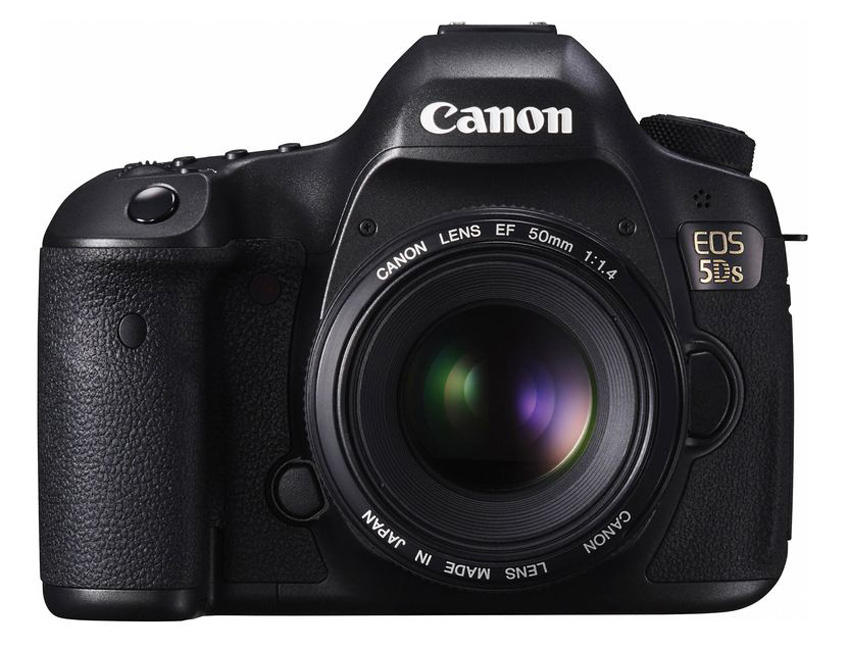
Canon EOS-5DS and EOS-5DS R announced. What’s new?
The new Canon cameras have been officially announced. Here are the specs, side by side.
• Sadly, there are no new features for video on either EOS-5DS or EOS-5DS R. Actually, they are MISSING some video features from the 5D Mark III, like a headphone jack or an HDMI port.
• The cameras won’t be available for PREORDER until mid-June. Shipping dates are still unknown.
• The highly expected Canon 11-24mm f/4 L USM Lens was also announced, and it is available for preorder!
Video

Cinematic Composition for Video Productions on Lynda.com
Composition is one of the least understood yet most important aspects of video. Like good storytelling, in order to achieve good video composition you have to make every detail count and keep the audience engaged in your story. In this course, we break down effective cinematic composition, to show how to create different compositional effects using a variety of techniques. Beginning with basics such as shot size, depth of field, and the rule of thirds, we show how to establish a scene, play with perspective and movement, and incorporate some of the most common shot types, including close-ups and group shots. Once you’ve learned the rules, see how to break them, using warped perspectives and intentionally confusing sequences, before exploring technical considerations such as lenses and lighting.
Topics included on this course:
- The basics of composition
- Exploring the rule of thirds
- Comparing balanced and unbalanced compositions
- Understanding the importance of using establishing shots
- Working with point of view
- Modifying the height of the camera
- Understanding the lines of a scene
- Creating depth
- Incorporating unusual or unexpected angles
- Knowing when to break the rules
- Using viewfinder apps
The complete course is currently available on Lynda.com. If you aren’t a Lynda.com subscriber, feel free to use my link for 10 days of unlimited access.
Here are some of the many examples on this course:
Video

Canon EOS-1DC 4K DSLR price drops 34%.
The price for Canon’s EOS-1D C has effectively dropped 34%, from $12,000 as of yesterday to $7,999 right now.
Canon EOS-1D C $7999: Adorama | B&H
The 1D C is the first Canon hybrid DSLR to offer onboard 4K motion imaging and Full HD motion imaging on CF cards and it is considered part of Canon’s Cinema EOS system, right next to the C100/300/500 models.
The main (and huge) difference between the EOS-1D C is that it features a full frame CMOS sensor that can capture 4K (4096 x 2160) as Motion JPEG and HD (1920 x 1080) as H.264 and can also shoot 18-megapixel (5184 x 3456) still images recorded as RAW or JPEG. An important (and also huge) difference between the EOS-1D C and the other C series bodies is that it lacks important features like built-in ND filters and XLR ports among others.
The camera’s rugged, ultra-compact form factor and huge sensor makes it an interesting option for challenging hybrid assignments when low-light performance is critical. For example, underwater or wildlife photographers capturing 4K and not needing XLR ports or other advanced video videos can find a great solution on the 1DC. Another instance is corporate assignments when the photographer is expected to shoot high-end video as well as stills. Unfortunately I believe the camera’s price have seriously challenged its market penetration. Let’s see what happens with this new price.
Now, while simultaneously shooting stills and video is certainly possible, I prefer to keep separate systems with different settings and features assigned to each task. It is hard enough to THINK about sound and movement and lighting simultaneously. the last thing I need is to be switching settings back and forth.
As of right now I’m happy with our current systems; a couple of Panasonic GH4 4K bodies with Canon and Sigma lenses (using a Metabones Speedbooster adapter), and a couple of Canon C100 Mark II bodies when stills are not necessary.
Here’s our current standard camera package:
Bodies:
• Panasonic GH4 at Adorama | Amazon | B&H
• Canon C100 Mark II at Adorama | B&H
Lenses:
Sigma:
• 35mm F1.4 DG HSM Art at Adorama | Amazon | B&H
• 50mm F1.4 DG HSM Art at Adorama | Amazon | B&H
• 18-35mm F1.8 DC HSM Art at Adorama | Amazon | B&H
• 24-105mm F4 DG OS HSM Art at Adorama | Amazon | B&H
Canon:
• Canon 24mm F1.4L II USM at Adorama | Amazon | B&H
• Canon 70-200mm F2.8L IS II USM at Adorama | Amazon | B&H
Panasonic:
• 12-35mm at Adorama | Amazon | B&H
• 35-100mm F2.8 at Adorama | Amazon | B&H
Metabones Canon EF Lens to Micro Four Thirds at Adorama | Amazon | B&H
If you are ready to buy any of these items, I’d suggest checking all three stores as the prices constantly change. Happy shooting!
Video
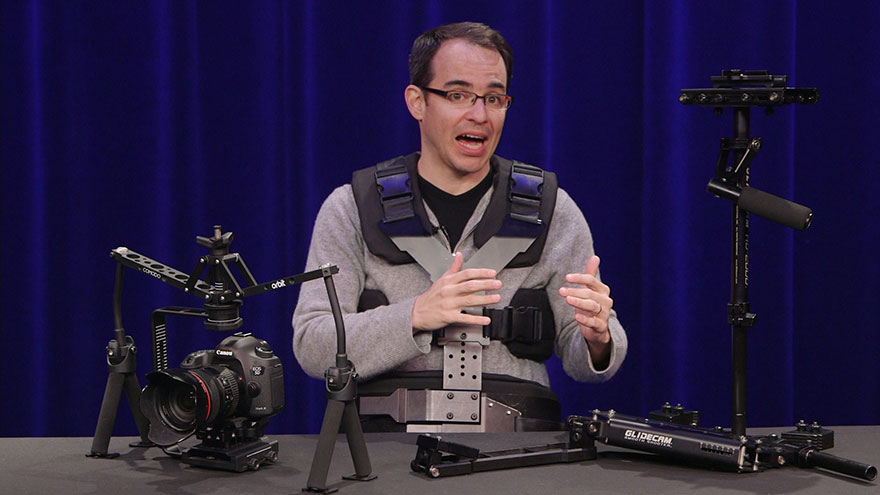
The 8 Best Tools of 2014.
Here are some of the tools that made a real difference for us last year. Just in case, the order in the list is completely random.
Panasonic GH4
What can I say that I haven’t already said about this gem? Tiny, inexpensive, intuitive, sharp, full of features—this is a truly remarkable feat of engineering to take our visual stories to a new level.
Fuji X100S
No, it’s not a typo! I know this is not the latest model, and that’s exactly the point. This little camera is so good that I see no need to upgrade, change, or even try something else. This is the perfect camera to take out on weekends, and when paired with a super sexy, real leather camera strap, the camera not only works well, it makes ME look good!
Sigma 35mm
In the next couple of weeks, Sigma will release a couple of videos I shot for them in Istanbul, Paris, and Belgium. All the lenses I brought with me were extremely good, but the 35mm was so extraordinary that I ended up NOT returning it.
Fiilex Lights
I rented these lights from Adorama for a Lighting Workshop I did in D.C. Among the reasons not to bring my own light kit were size, portability, and the ability to use multiple accessories with the same fixtures. For example, did you know that these lights can use all the accessories available for Profoto? Mind blowing.
The Fiilex more than delivered on all ends, and the guys at Adorama Rental provided their usual stellar job of testing, packing, and shipping the gear in time for my presentation.
Transcend 64GB UHS-3 SD Card
My tendency is to not put all my eggs in one basket, and to not keep all my day’s footage or photos on one card. I resisted switching from 8GB to 16GB for a while, while HD “forced”me into 32GB cards, and 4K made me seriously consider the 64GB Transcend, not only for the additional capacity, but for speed. The card was affordable when it was released and now it is almost half the price I paid for it just months ago. This one’s a no brainer.
DJI Ronin Camera Gimbal
Heavy. Difficult to set up. Costly. But when you make it work, it sings! We shot a lot of stuff with this toy, and the production value it added to our projects was simply outstanding.
Adobe Premiere Pro CC 2014
I was very much against Adobe’s Creative Cloud concept (and wrote about it here, here, here, and here), but after a year or so of using the apps pretty much on a daily basis, I love always having the latest version to work with. The significant efforts that Adobe has put into their video applications is totally worth the monthly payment.
13” Apple MacBook Pro Retina
This turned out to be not as fast as expected, more expensive than expected, and the latest OS X Yosemite was way worse than expected. Yet it made it into my “top tools”list. Why? Simply because the MacBook Pros are still, in my opinion, the best line of laptops available. The fact that we can edit, grade, and export 4K video on a plane or from a coffee shop still blows my mind. But Apple’s reign might be coming to an end very soon. 2015 will be a VERY exciting year for technology. I can tell you that much.
If you like what you saw in this summary and want to know more about how we actually use these tools, please check out our new online courses on Lynda.com along with some of the video projects we worked on during the year.
We look forward to keeping the conversations going this year.
Video
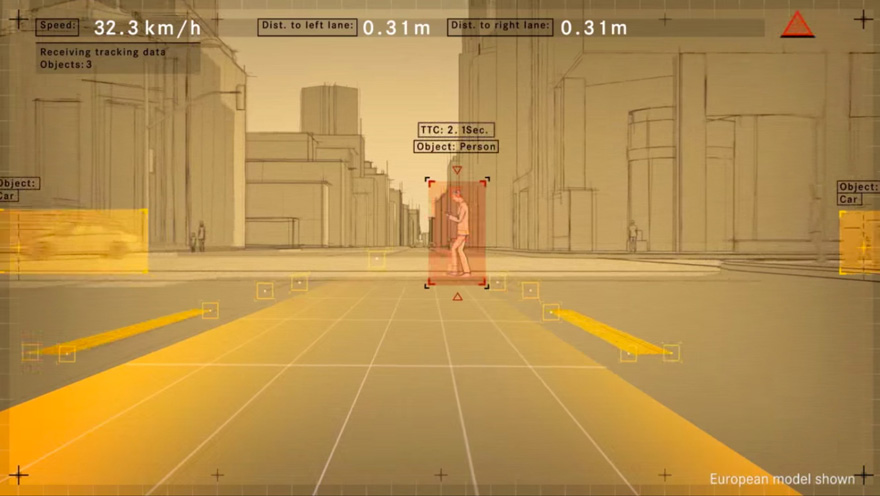
My Top Ten Favorite Articles of Last Week.
These are my top ten favorite articles of last week, in no particular order. If you have something worth sharing next week, please send it my way by email or Twitter.
The (amazing) Cinematography of Emmanuel Lubezki (video below)
20 Acclaimed Filmmakers Explain America’s Money Problems in ‘We the Economy’ http://bit.ly/1wq7AF4
This is insane! Disintegrating by Fabian Oefner http://bit.ly/1sKjaVA
The Mercedes-Benz S-Class technology features are truly breathtaking. http://bit.ly/11bpHCs Suddenly $100k seems cheap!
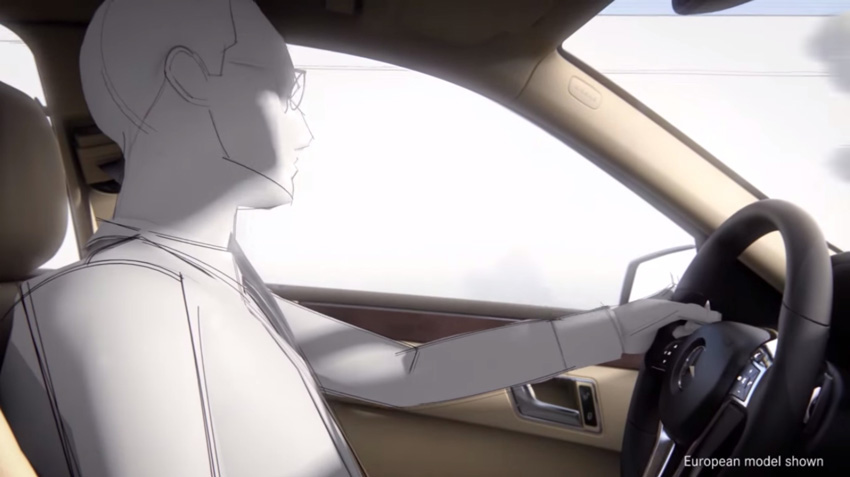
After Effects: Understanding GPU, CUDA, and OpenGL features http://adobe.ly/1xxPzq2
Top 50 YouTube and Vimeo Channels for Filmmakers and Cinephiles http://bit.ly/1zZuqDm via Cinephilia & Beyond
A short history of (believable) CG characters in movies http://bit.ly/1tzpkbn
Brain Jazz: A Mind-Jam with Jason Silva and Douglas Rushkoff (video below)
70-Minute Masterclass With Legendary Cinematograph http://bit.ly/1y3NvoB via Indiwire
Time Is the New Money. Are You Broke? http://bit.ly/1y3NC3y via Inc Magazine
Video
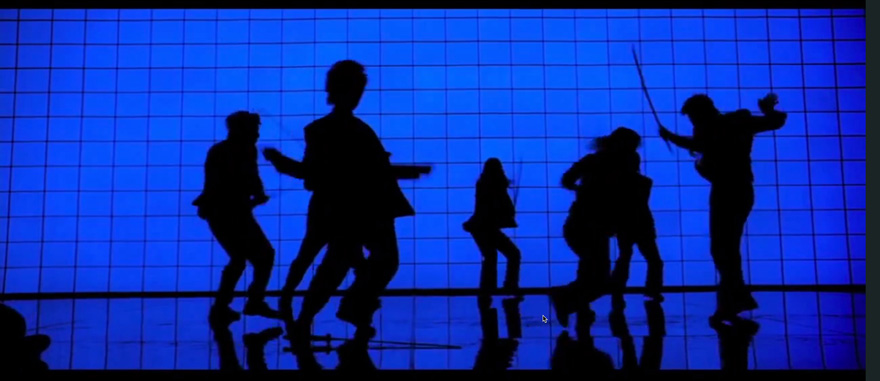
My Top Ten Favorite Articles of Last Week.
These are my top ten favorite articles of last week, in no particular order. If you have something worth sharing next week, please send it my way by email or Twitter.
A beautiful compilation of silhouettes in cinema. http://bit.ly/1zZuXFh
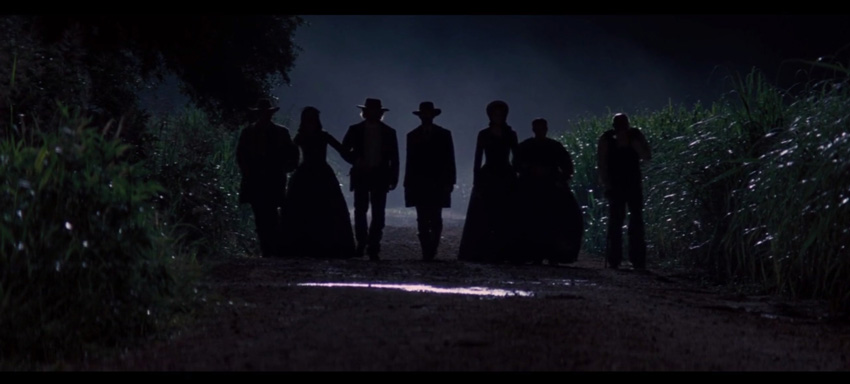
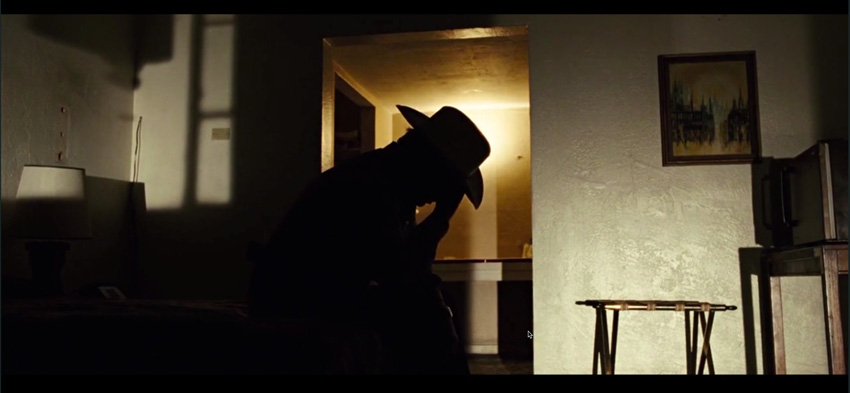
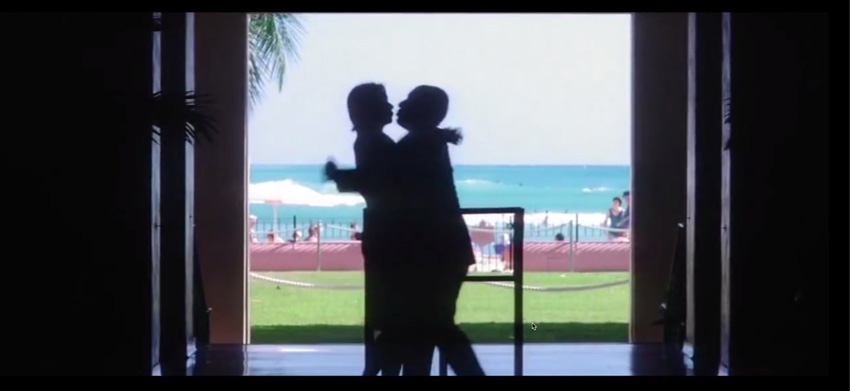
A Free Image and Model Release Template You Can Fill Out and Sign On a Smartphone http://bit.ly/1qH1ksh
Adobe Releases Lightroom 5.7 with Aperture Importer and Support for the Latest and Greatest Cameras http://bit.ly/1vv0lgC
Danny Boyle & Darren Aronofsky: Directing Style http://bit.ly/1tVuzSy
There Aren’t Enough Women Cinematographers and That Needs http://bit.ly/1wq2I2A via Indiewire
Space Out With This Turkish Musician’s New Instrument http://bit.ly/1EIN0ST
There Are Now Over 20 Cell Phones that Shoot 4K Video http://bit.ly/1wq5IvY
Which Laptops Have the Best, Longest Battery Life? http://bit.ly/1wq64CI via Digital Trends
Watch an Adobe Panel About the 6K Editorial Workflow of ‘Gone Girl’ http://bit.ly/1wq77CN via Creative Planet Network
James Cameron Thinks Oculus Rift is ‘a Yawn’ http://bit.ly/1wq78Xj via Digital Trends
Video
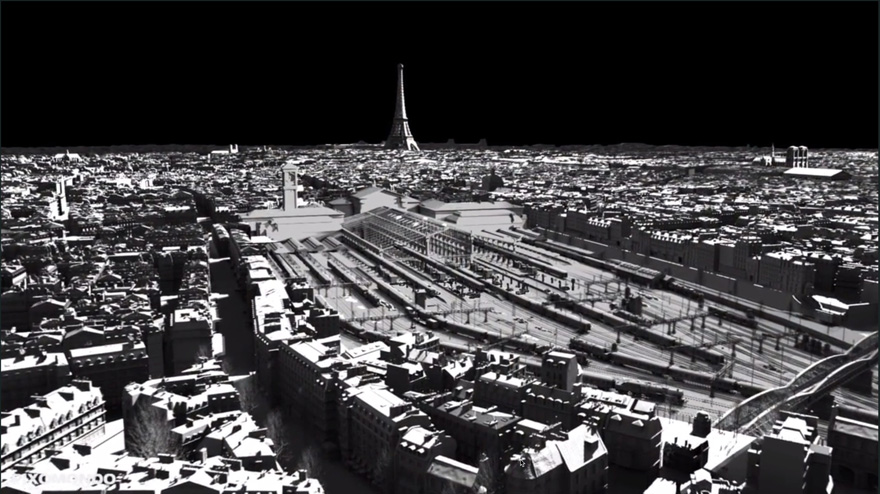
The Making of Scorsese’s “Hugo.”
Some people feel disappointed or even “cheated” after seeing the tricks behind a movie. I feel the opposite. It is simply a different way to appreciate the crazy lengths people are willing to go to tell their stories. Absolutely stunning special effects.
If the embedded movie doesn’t work, click here: Hugo Cabret – Making of
Video
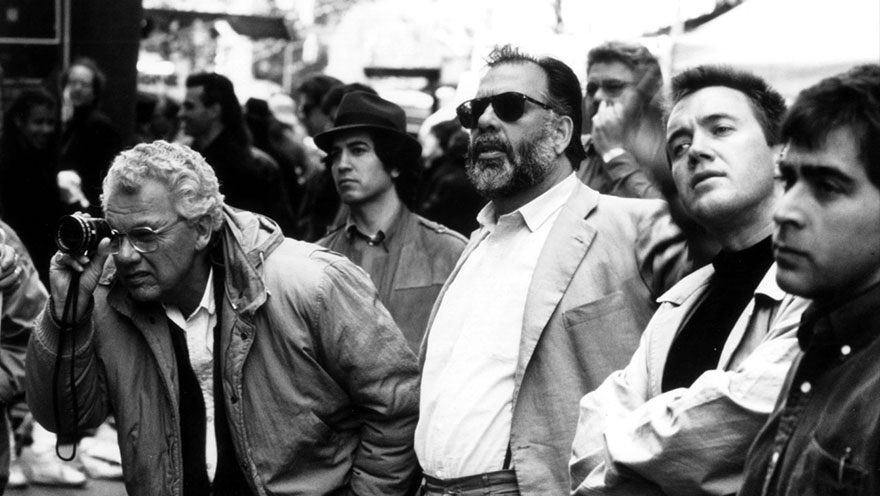
My Top Ten Favorite Articles of Last Week.
These are my top ten favorite articles of last week, in no particular order. If you have something worth sharing next week, please send it my way by email or Twitter.
How Criterion Collection Brings Movies Back From the Dead http://bit.ly/1tzoyuX via Vimeo
Here’s What Happens When You Put Instant Film in a Microwave http://bit.ly/1qtgQFe via Smithsonian
Confused About Codecs? This Video Tutorial Will Teach You What You Need to Know http://bit.ly/1qOE1FU via No Film School
What We See When We Read http://hntd.ch/1p5YDZh via Cool Hunting
Darkness & Light: Contemporary Nordic Photography http://hntd.ch/1p5YPaU via Cool Hunting
The Yachts Of The Super-Rich Do Battle In These Violent Photo Montages http://bit.ly/1qOFX1d
The Director’s Chair: Robert Rodriguez Interviewing Quentin Tarantino! It looks amazing. http://bit.ly/1qOHnbU
Steadicam Inventor Reveals the ‘Impossible Shots’ That Changed Filmmaking Forever http://bit.ly/1pARVuG via Hollywood Reporter
Satellite Uses Infrared Photography to See Beneath California Forest Fire Smoke http://bit.ly/1w9IPxu via Petapixel
How Gordon Willis Inspired Francis Ford Coppola, Woody Allen http://bit.ly/1qOG7Wf via Indiewire
Video
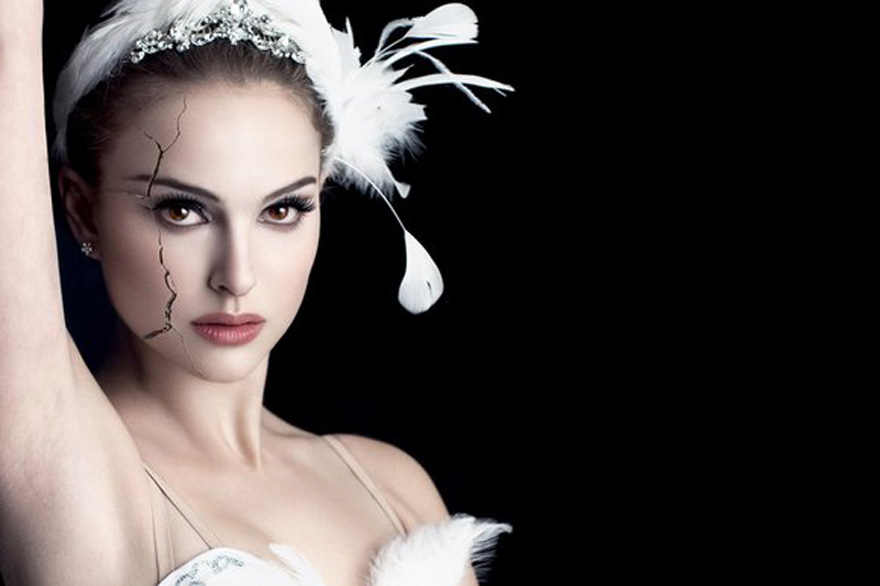
Shooting the Black Swan.
How was the film Black Swan shot? How did the filmmakers deal with all the mirrors? How many lights did they use and what kind? Those were my thoughts while watching Natalie Portman’s remarkable performance. Here, I have compiled the most interesting technical aspects of the movie, gathered from several articles and forums, including a great interview by American Cinematographer’s Stephen Pizzello with the Director of Photography Matthew Libatique.
Mirrors
Regarding the mirrors and avoiding camera reflections, which is the real reason why I did some serious research on this movie, Libatique says “we did as much as we could practically, but we knew there would be moments when we wanted to create seemingly unachievable shots, and for those we just removed the reflections digitally with the help of Dan Schrecker, our visual-effects supervisor at Look Effects. A good example of Look’s work is the scene where Nina is rehearsing in front of a mirror, the lights go out, and her reflection starts moving independently; the camera was right where you see the reflection, but Darren wanted to get tight eye lines, so we had to paint ourselves out in post. For other scenes, it was easier to just hide the camera or shoot from angles where you couldn’t see it. We also used one-way mirrors to get a shot where we created an ‘infinity reflection’ of Nina sitting in front of a dressing-room mirror. We positioned Natalie between two one-way mirrors and just shot from behind them. We wanted the film’s horror beats to be a bit more stylistic.”
Lighting
The main lighting source was “a strip above the dancers’ heads. We had about eight rows of 1K cinema globes running 60 feet across the stage. We just used different gels and put the lights on different channels; we’d go from a green gel to white to magenta, and we also started to mix them, which was nice. It was less complicated than using moving lights. For one sequence, we combined a moon backdrop with a rain effect that we created by filling a pool of water with broken glass and placing it at the base of the background. We just powered Source Fours into the pool and modulated the water movement with fans.”
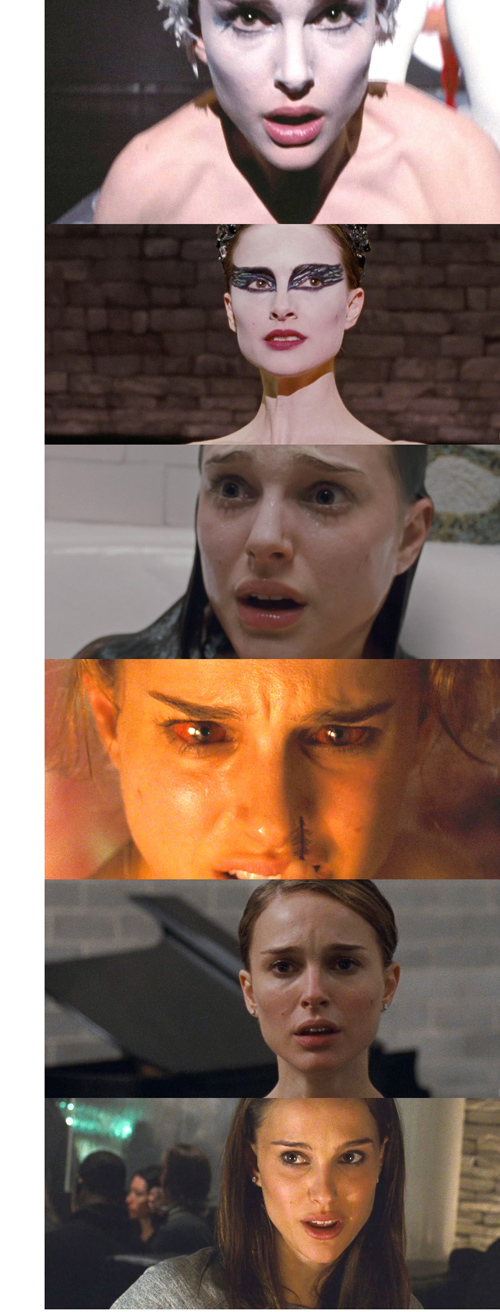 Cameras
Cameras
“The movie was a single-camera shoot except for maybe one day, and our main camera was an Arri 416, which we used with Arri Ultra Prime 16 lenses. We used a Canon 7D or 1D Mark IV for all the subway scenes; I could just carry a 7D and shoot on the subway all day with a very small crew. I did some tests with my wife beforehand to figure out my ASA, my stop, and how I was going to deal with the focus. I didn’t use any rigs with it because I wasn’t trying to shoot in the traditional way. I tested a bunch of different exposures and then brought the footage to Charlie Hertzfeld at Technicolor, who put it in the system so I could look at the highlights, the moiré and the resolution. Then I went back to the drawing board to do more tests. The 7D has more depth of field than the 5D, but I needed that because I didn’t have a follow-focus unit and needed to work really fast. I shot everything documentary-style. I did all the focus pulls by hand, and we’d just look at it on the camera’s monitor. I ended up shooting on a Canon 24mm lens at 1,600 ASA to get as much depth of field as possible at a stop of T81?2.”
Special Effects
Check this short documentary on this movie’s special effects.
Camera Movement
Every performance was covered in long master shots, which “we just augmented with other moves as necessary. To Natalie’s credit, we rarely did more takes for her; if we required additional takes, it was usually for us. We knew we’d be shooting her from the chest up most of the time, but we knew we’d be in great shape, performance-wise, as long as we could see her face and arms. For wider shots, we could just use her dance double. We did almost everything handheld.” The only Steadicam shot is at the climax of the final dance number. Unreal.
The movie is now available on Blu-Ray.
